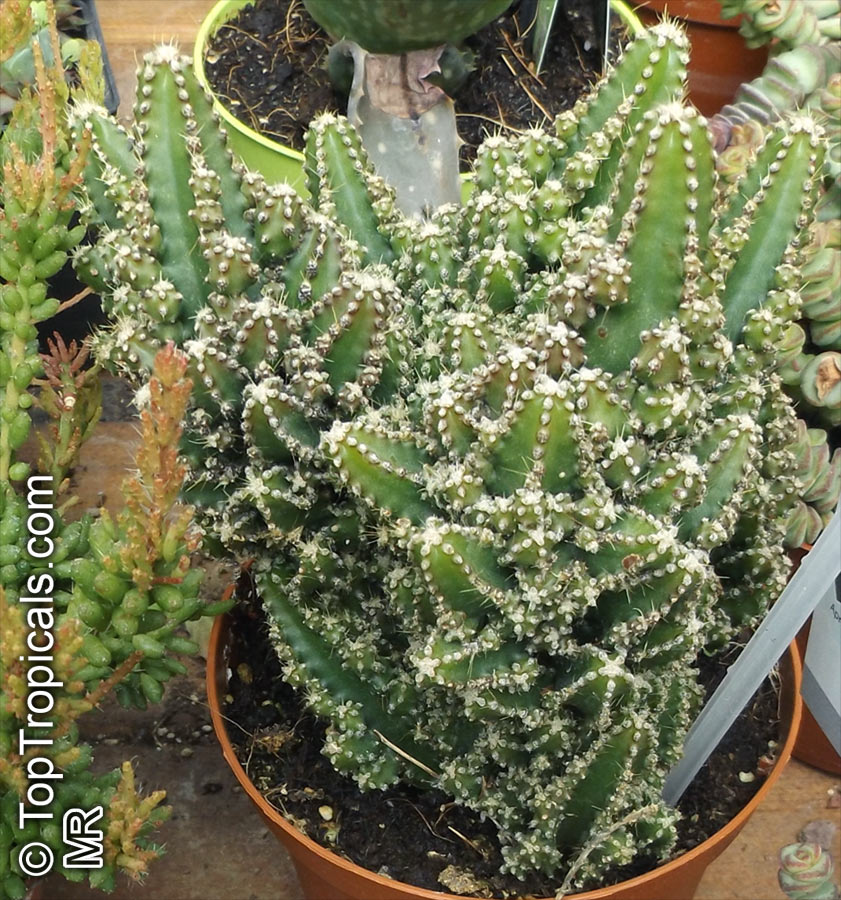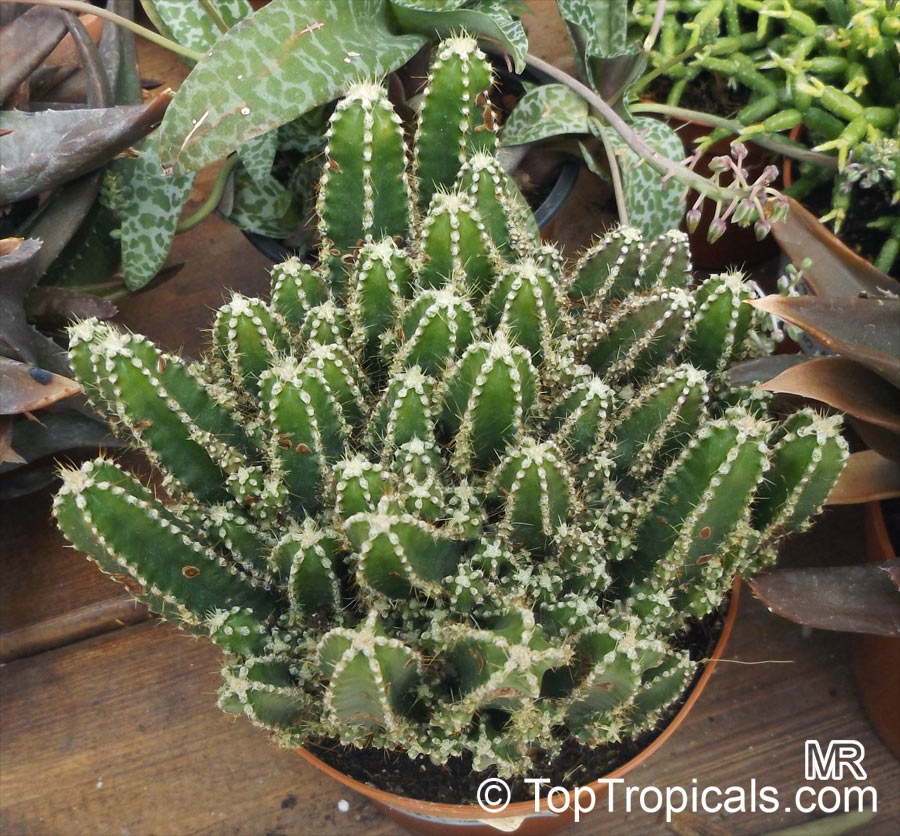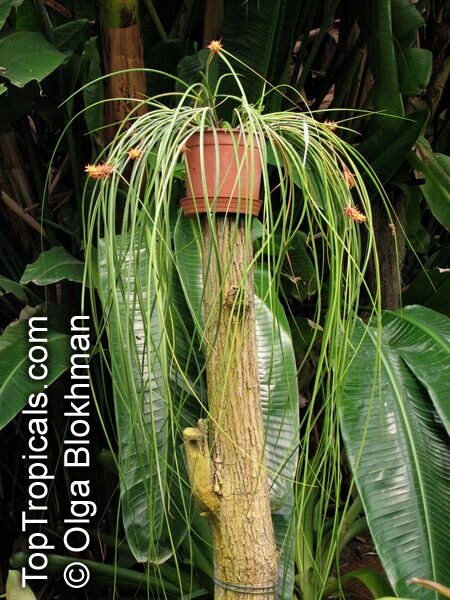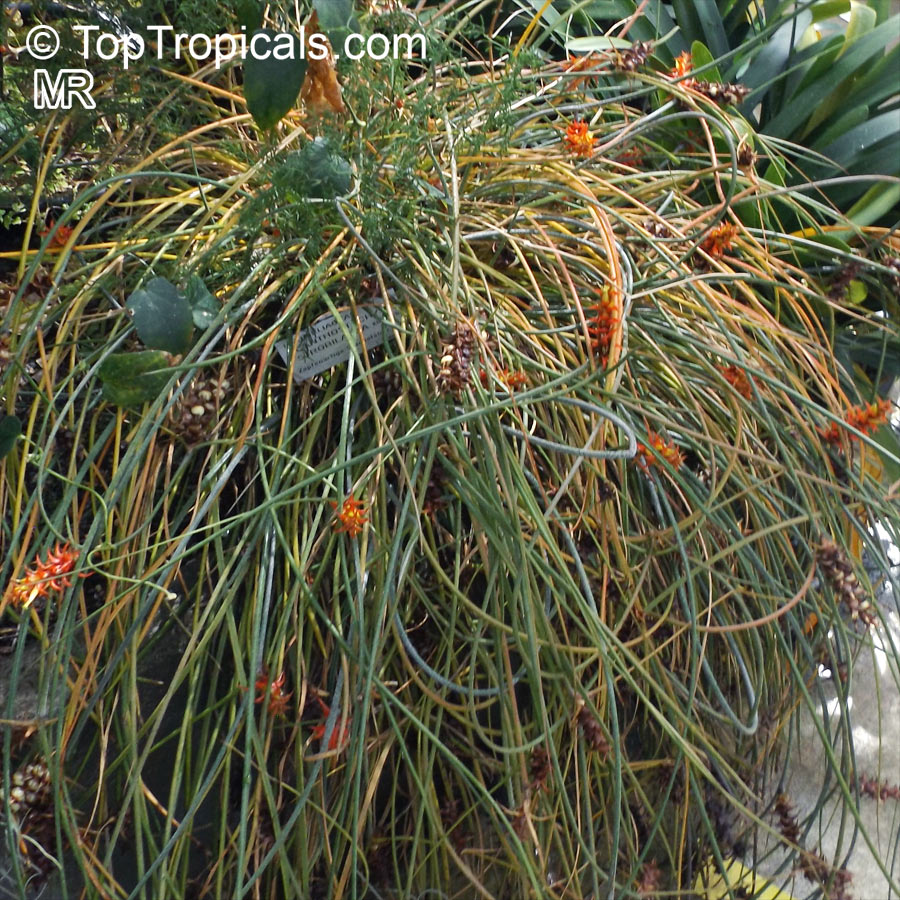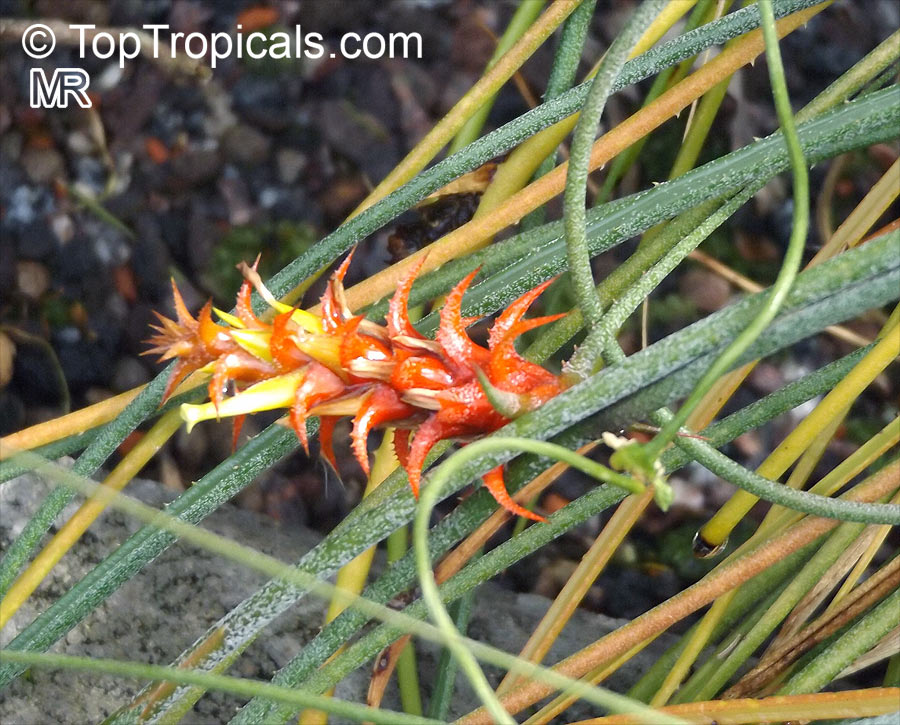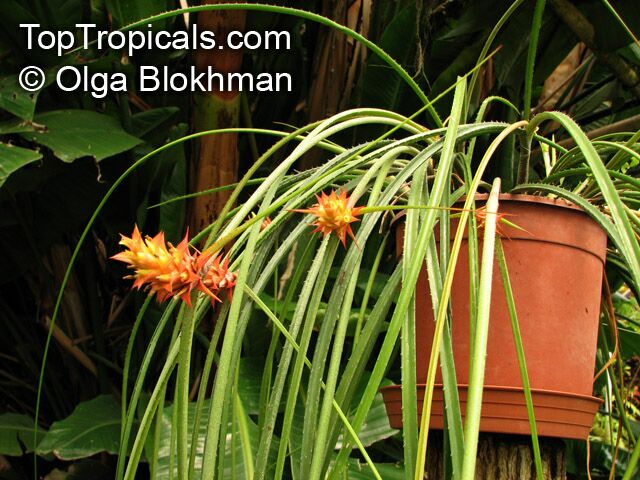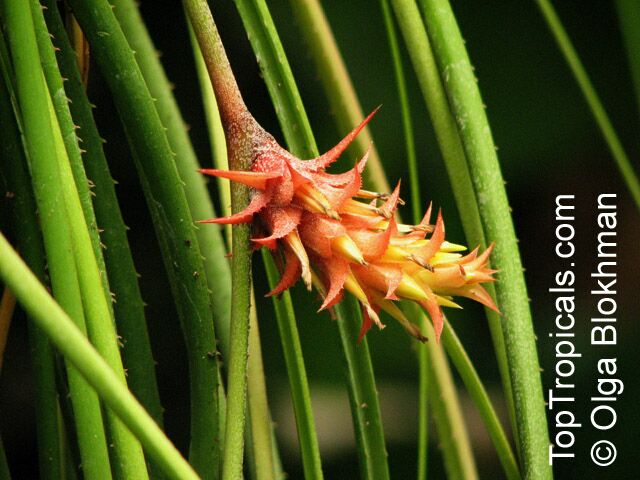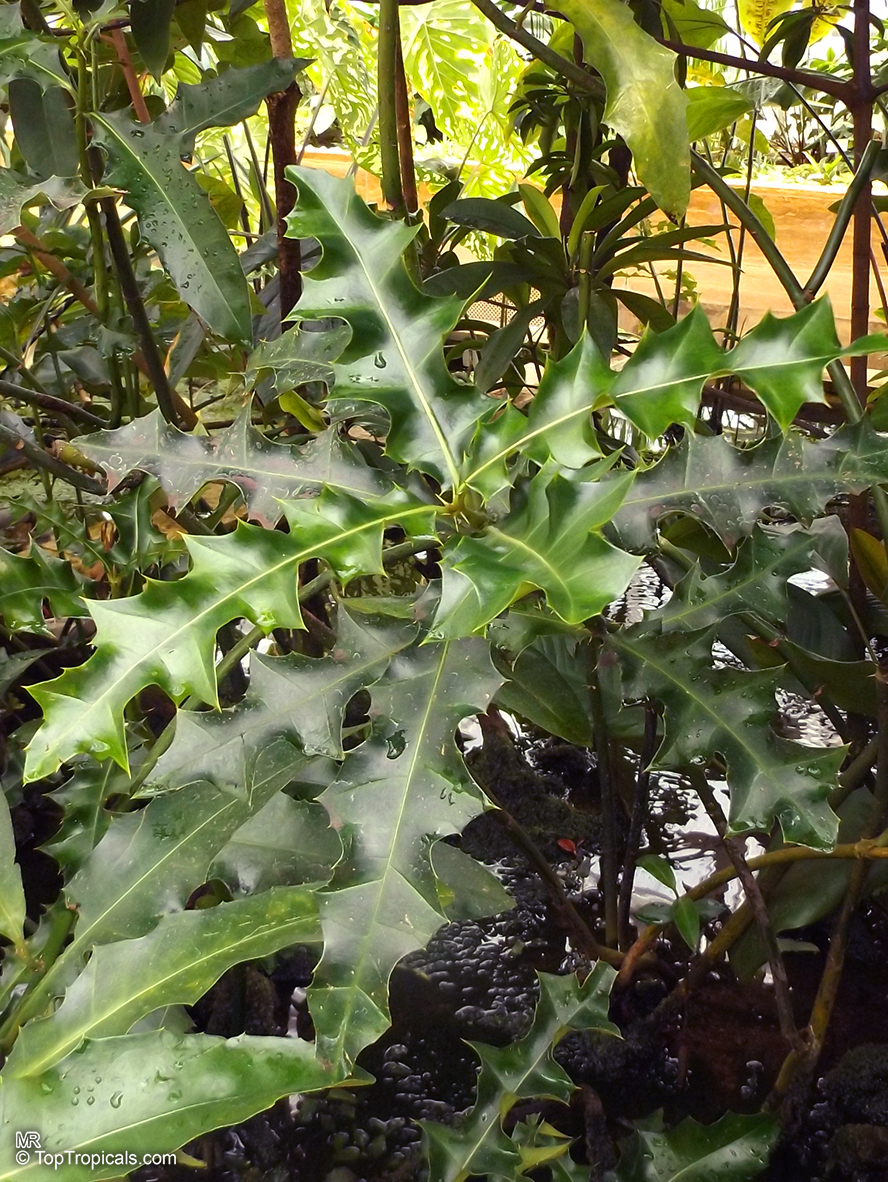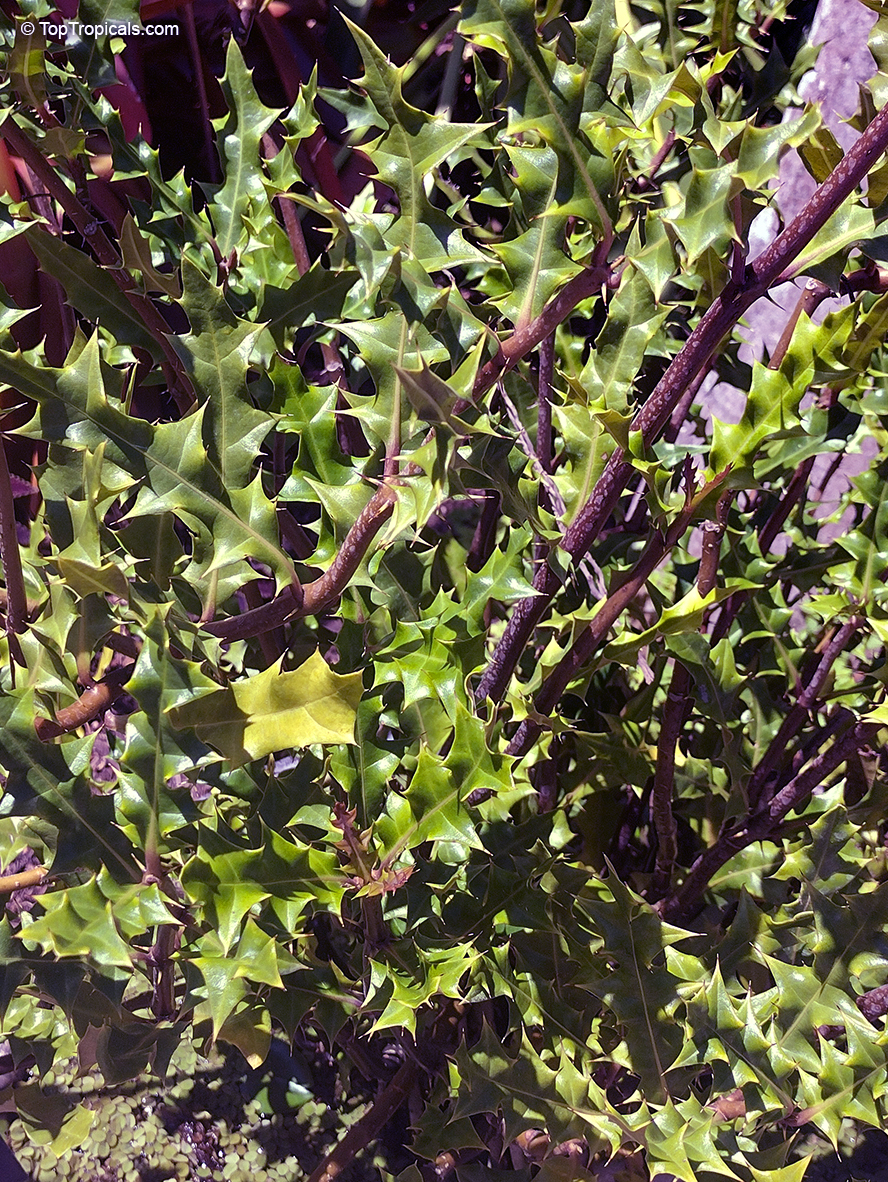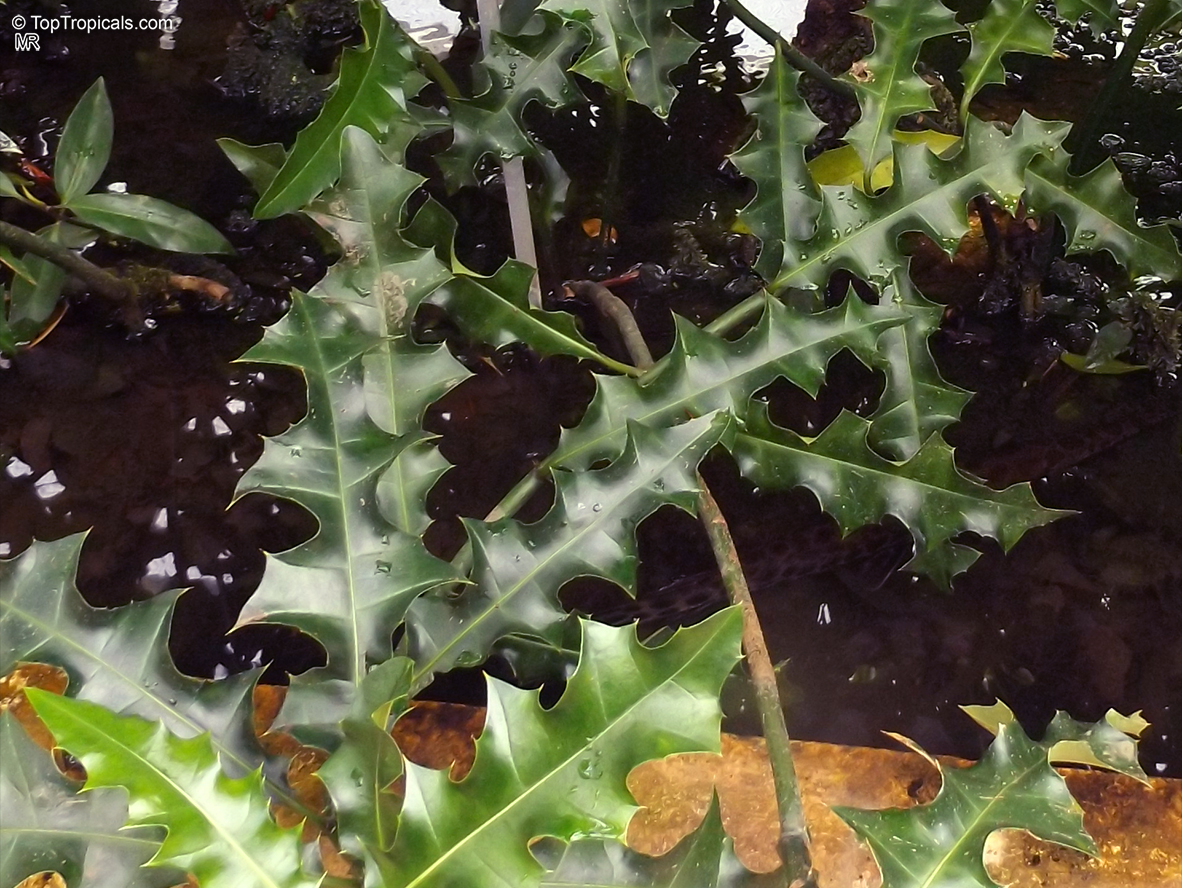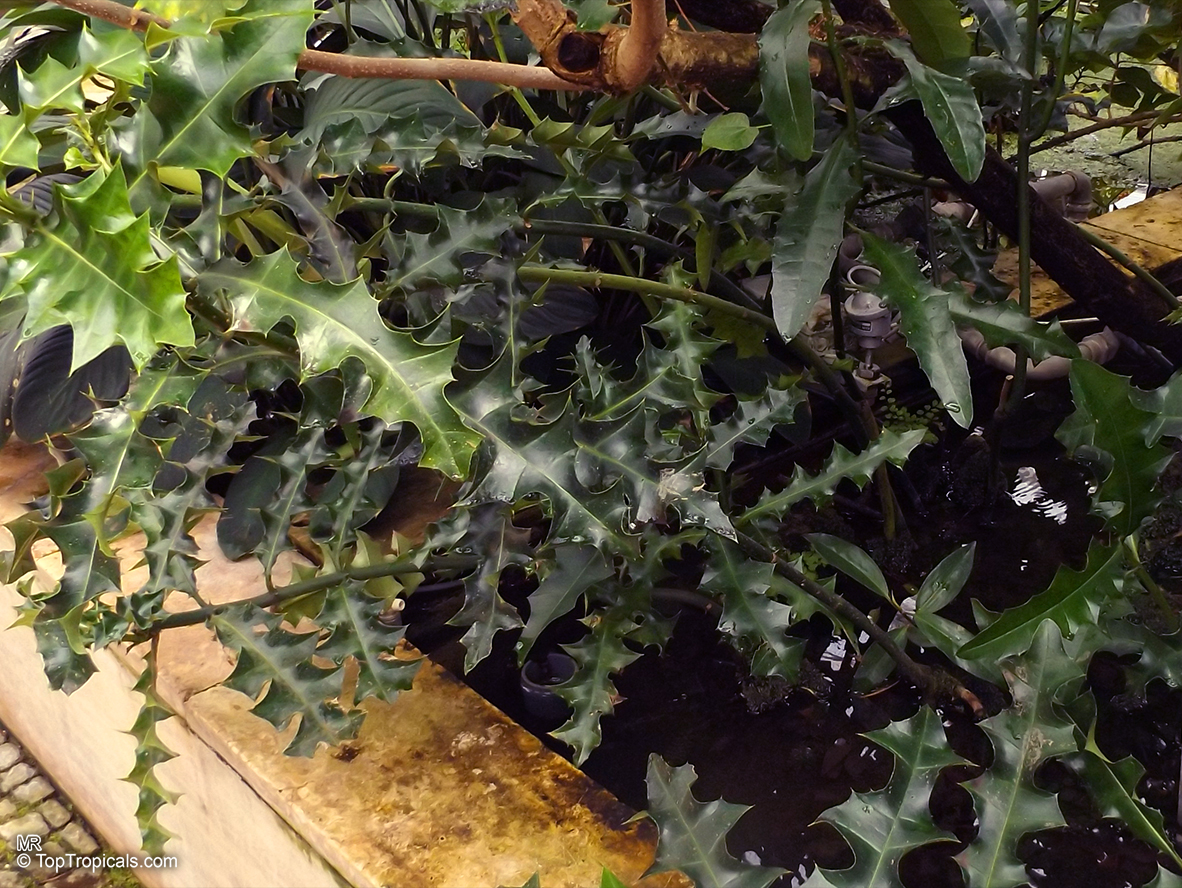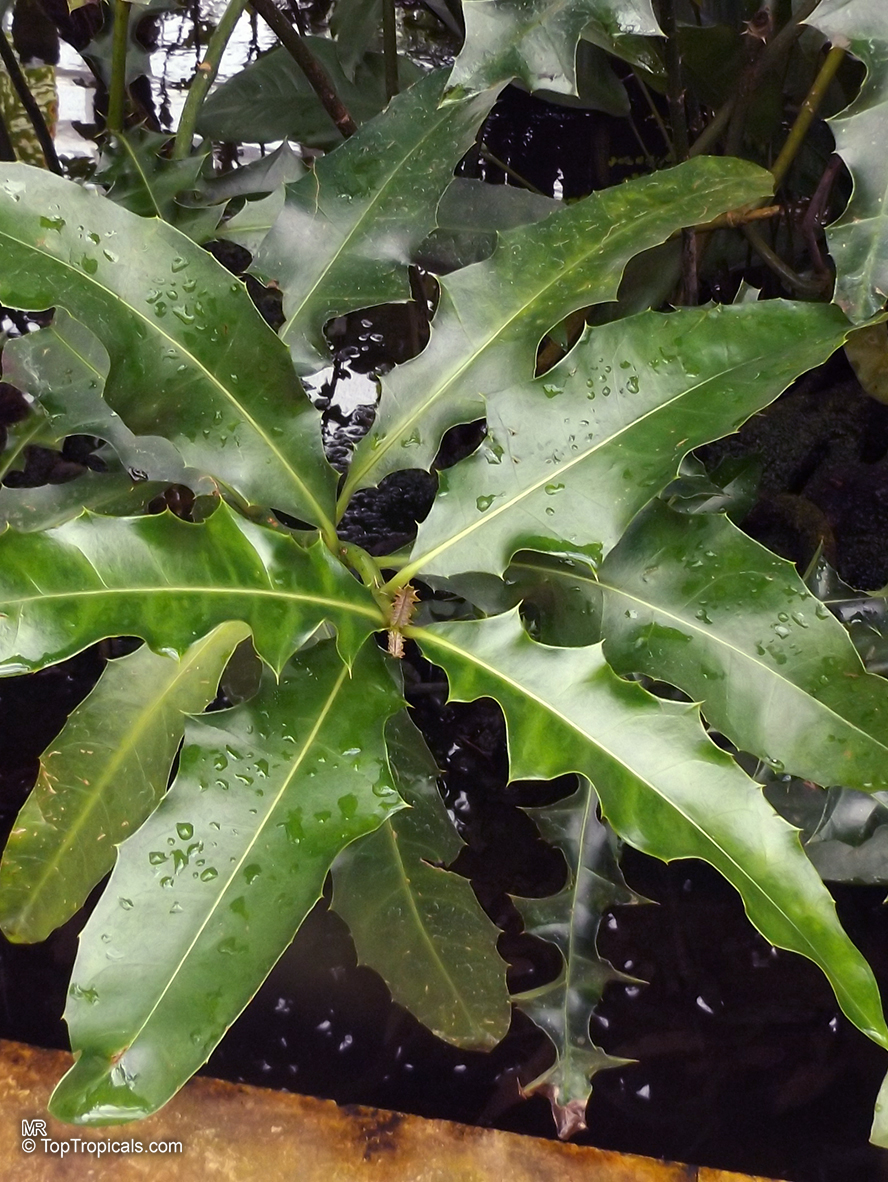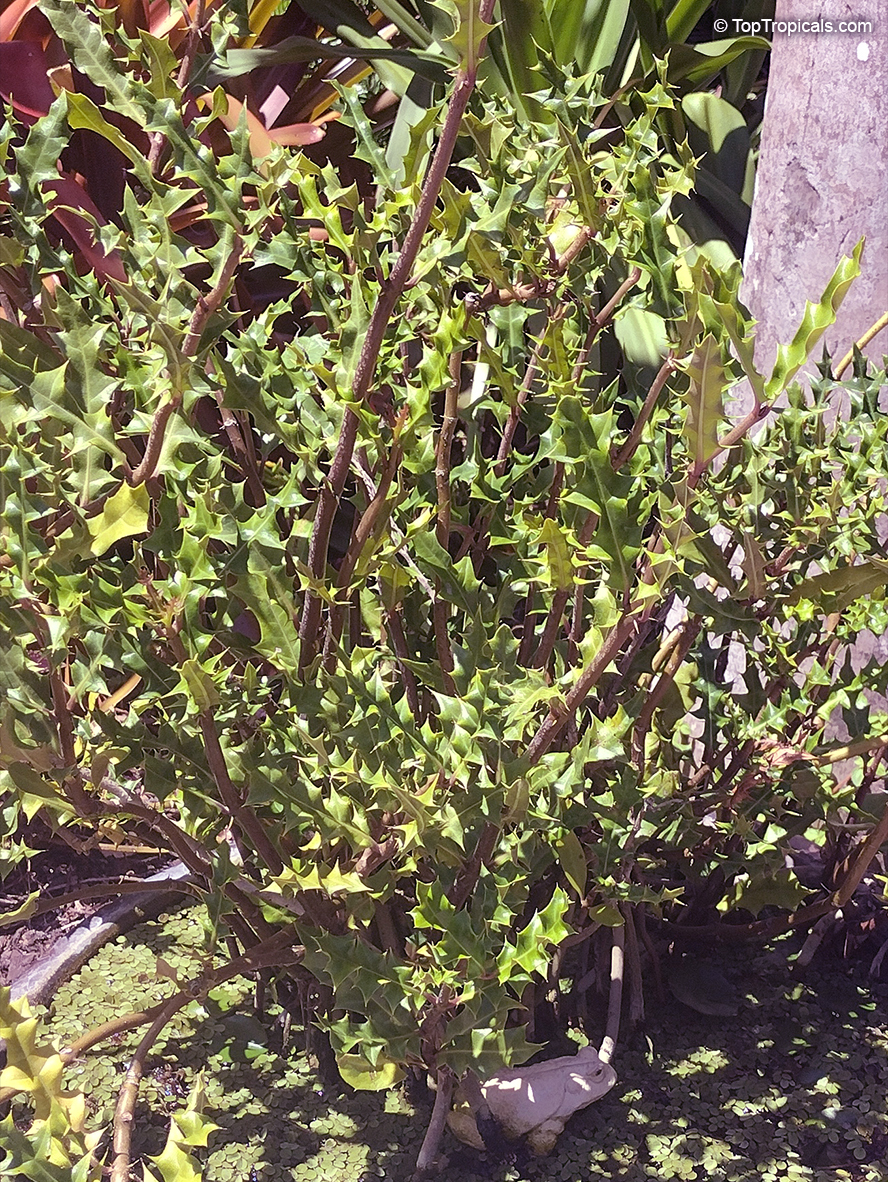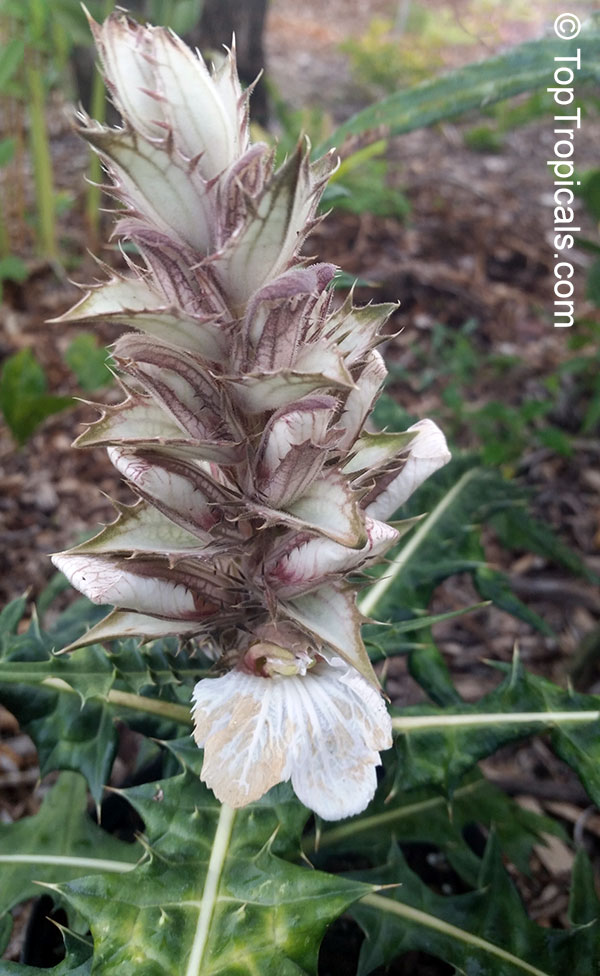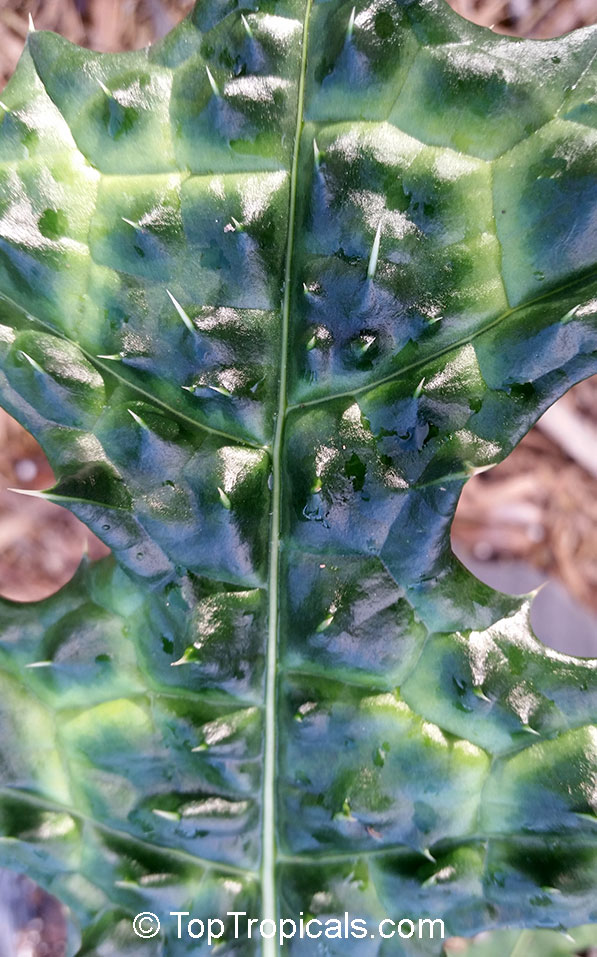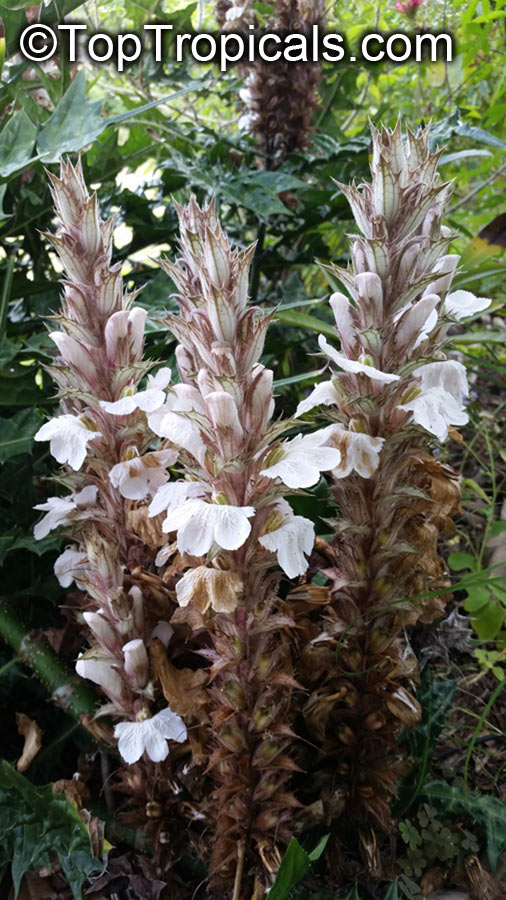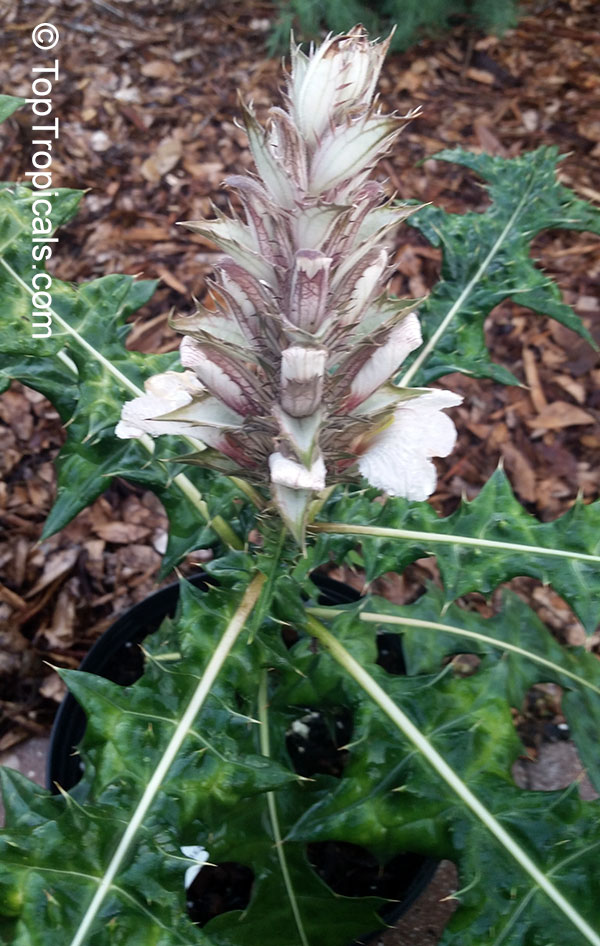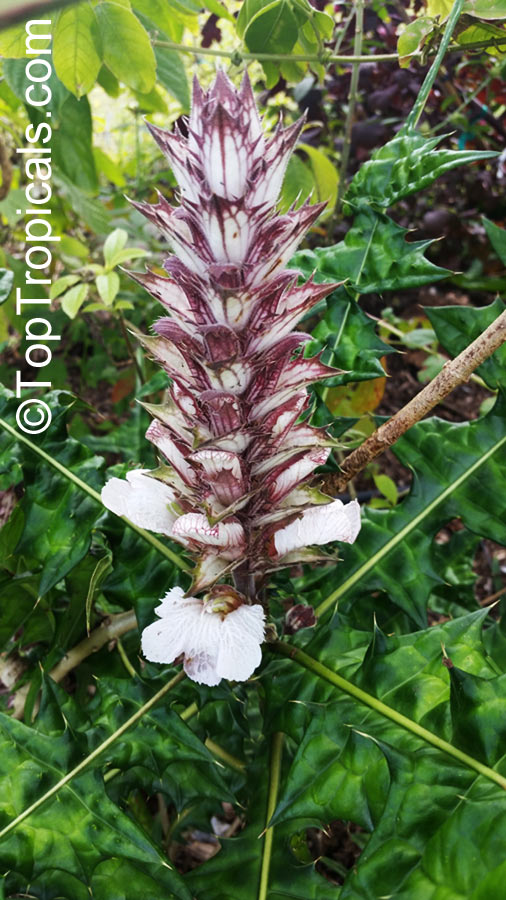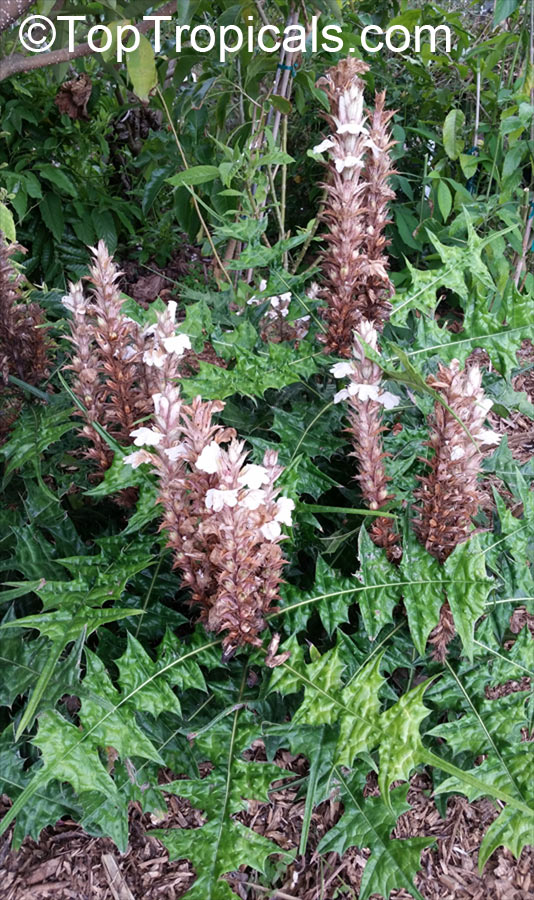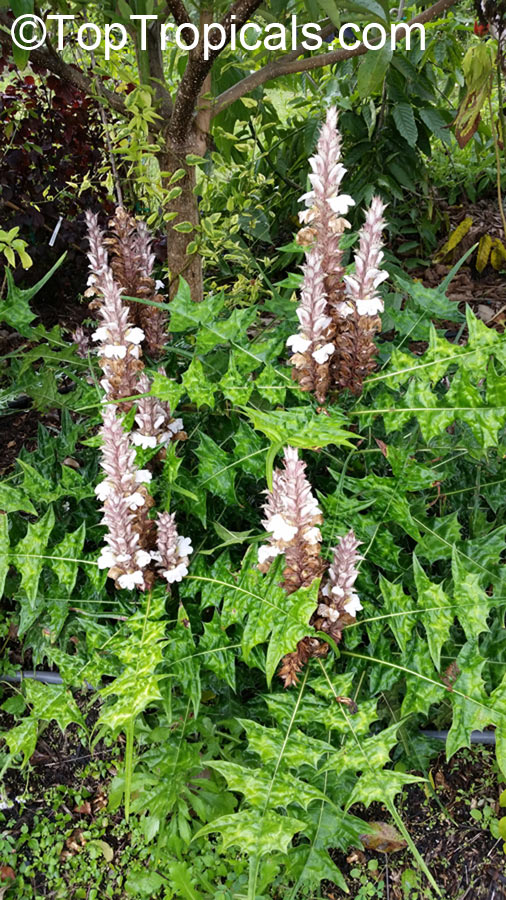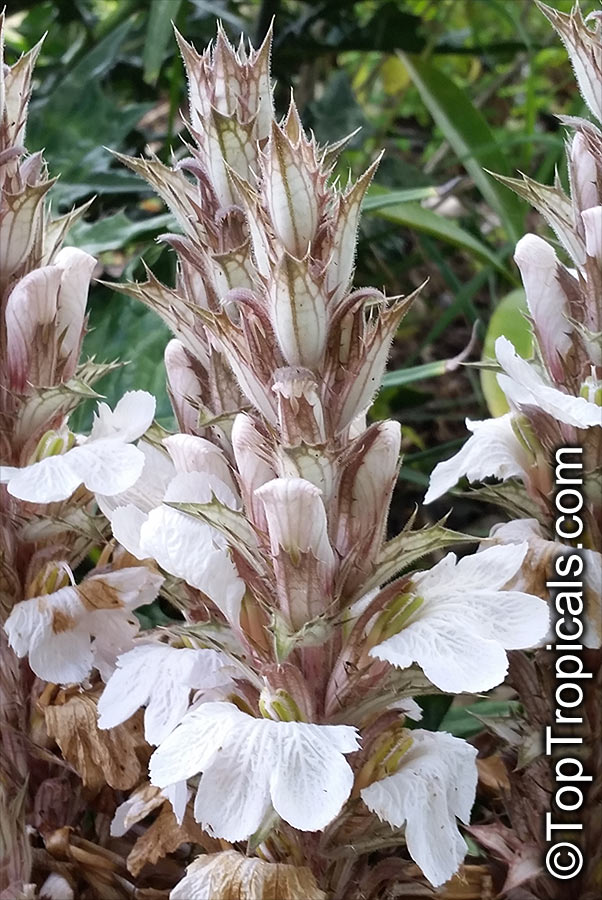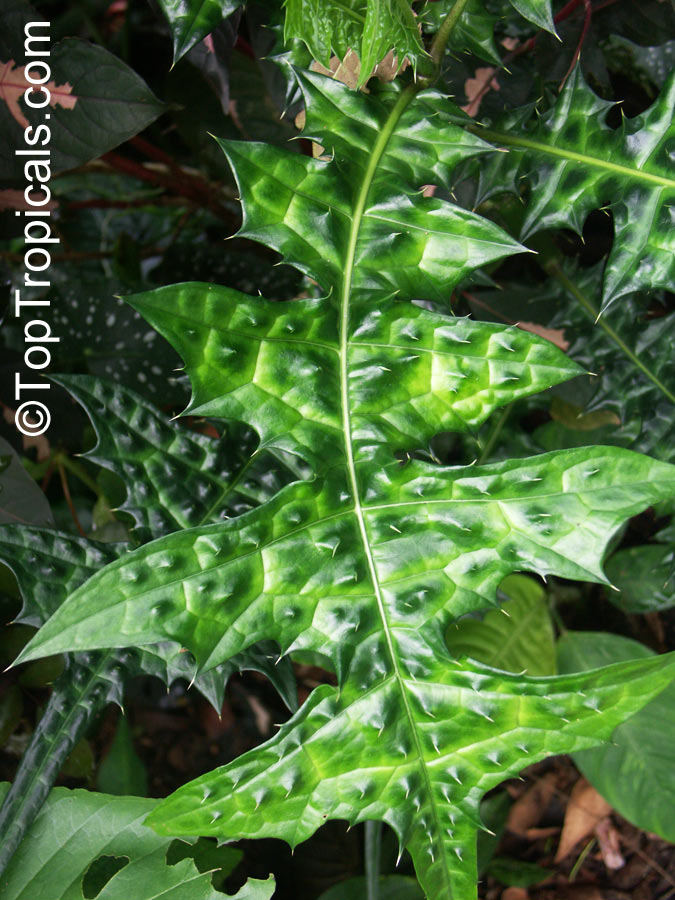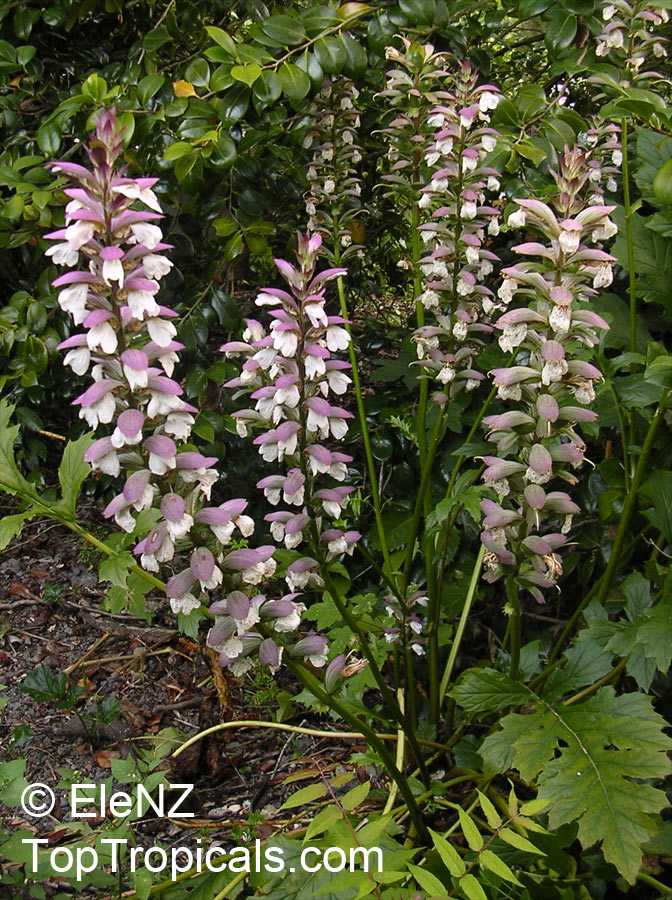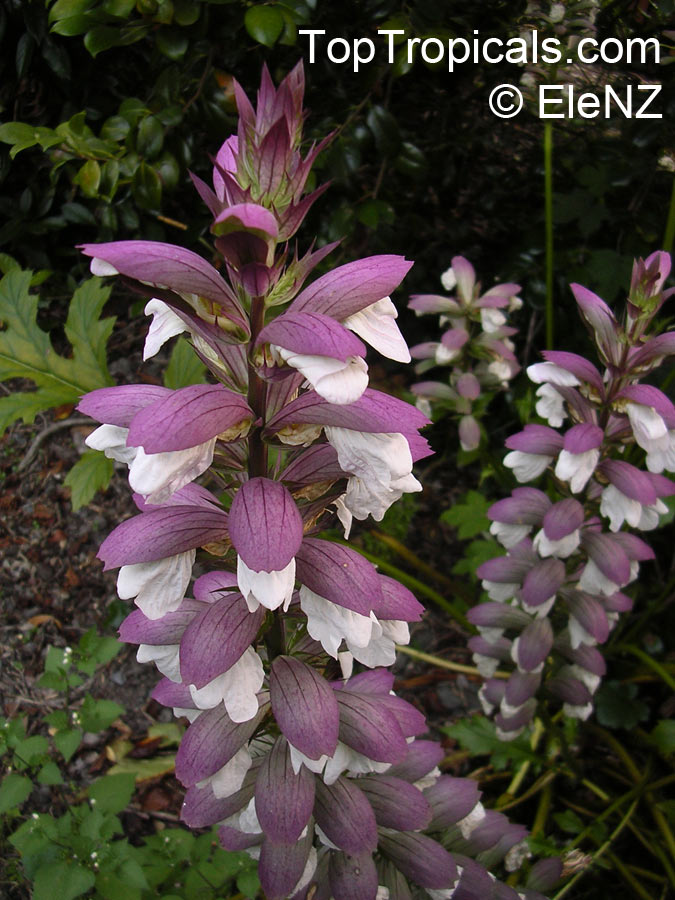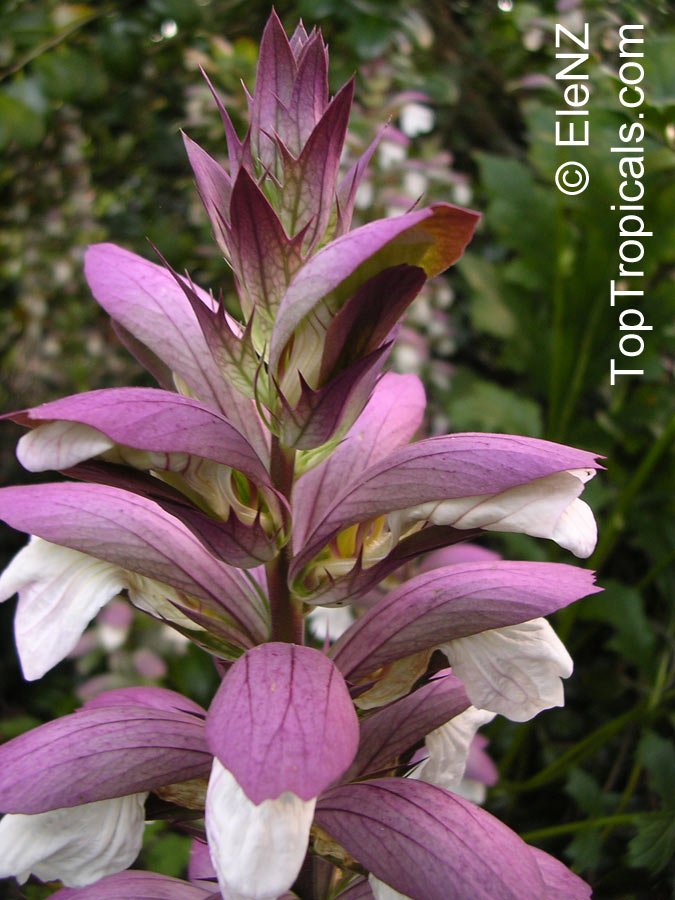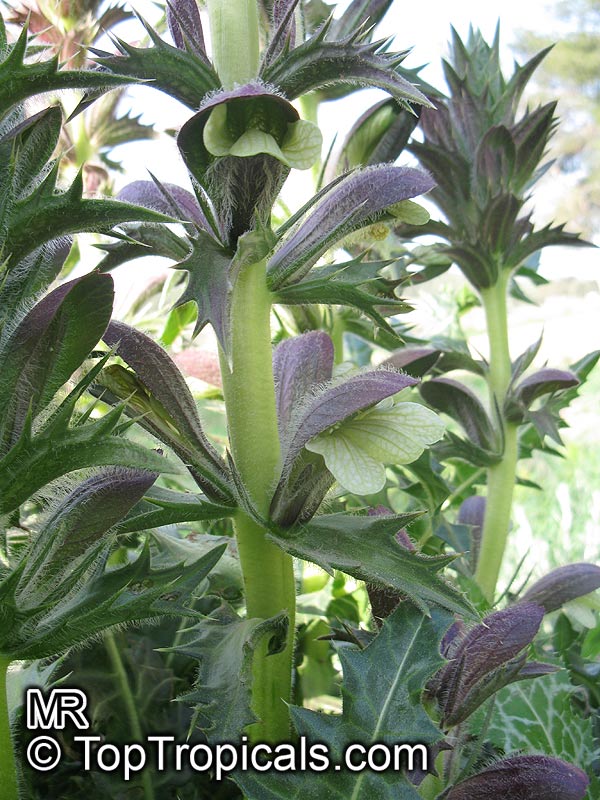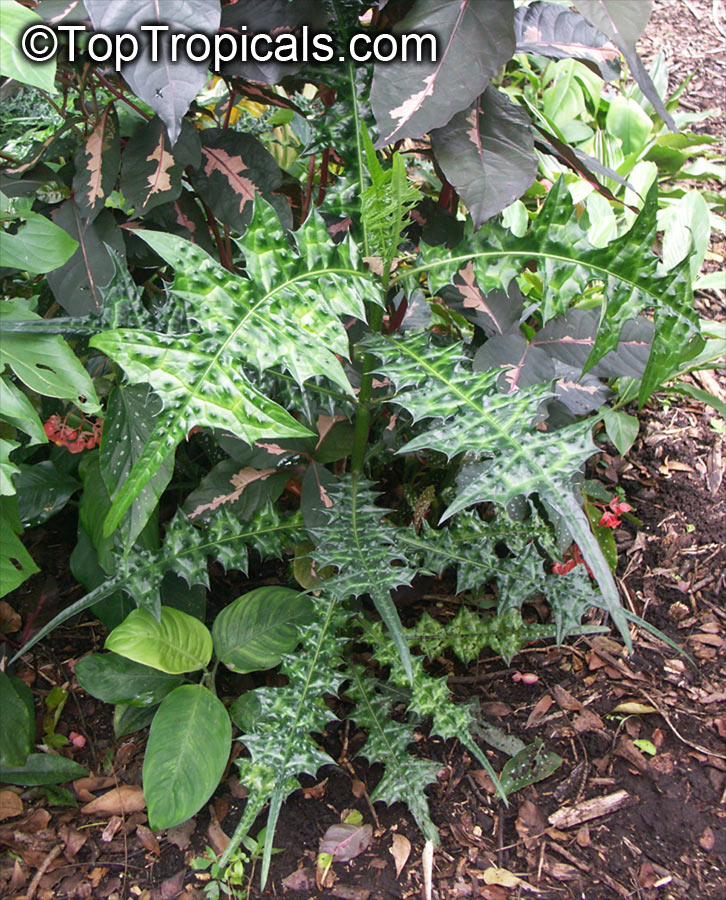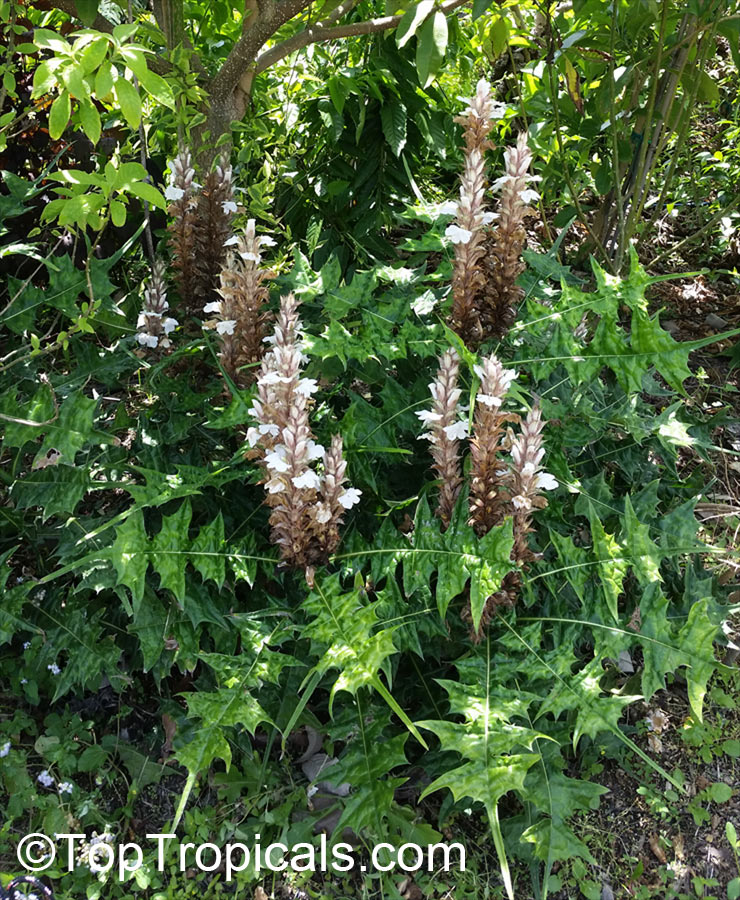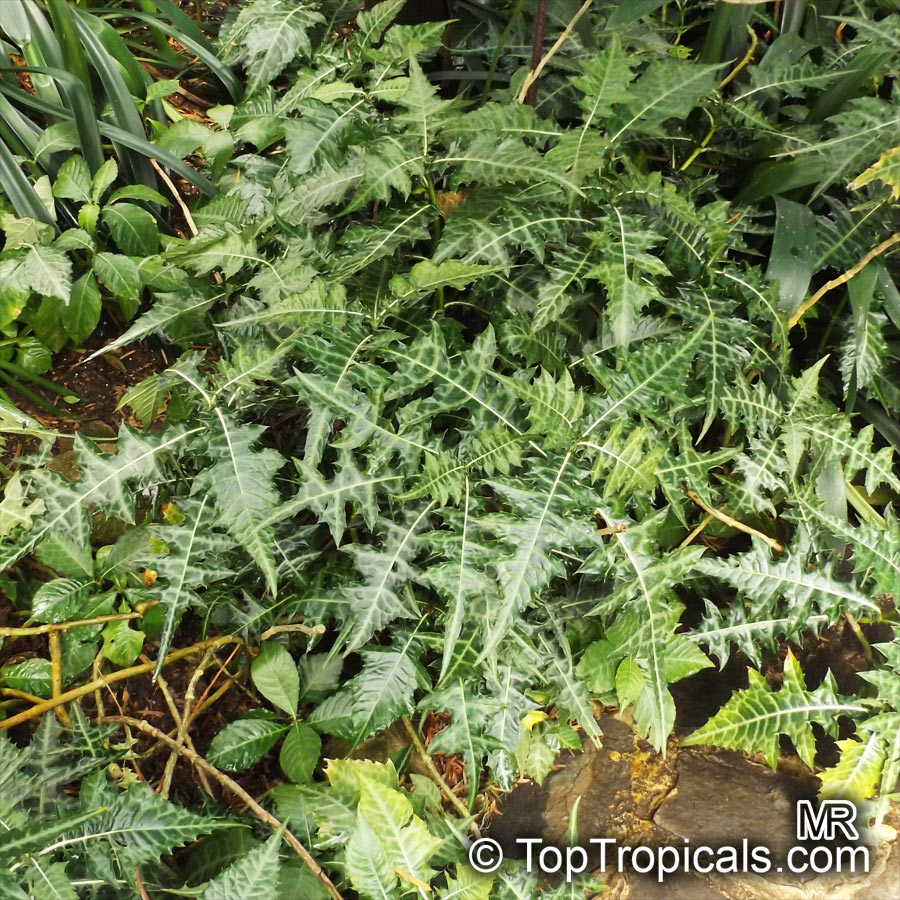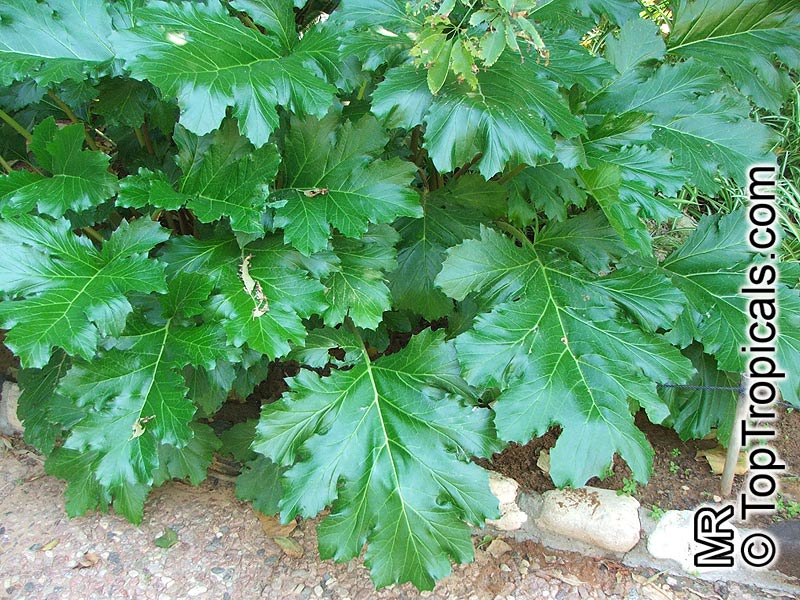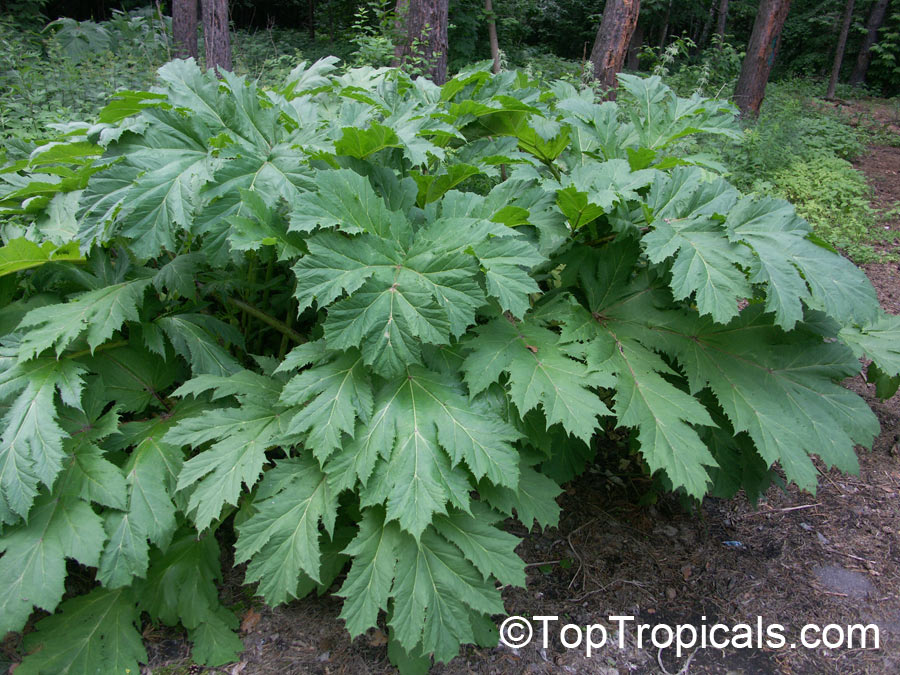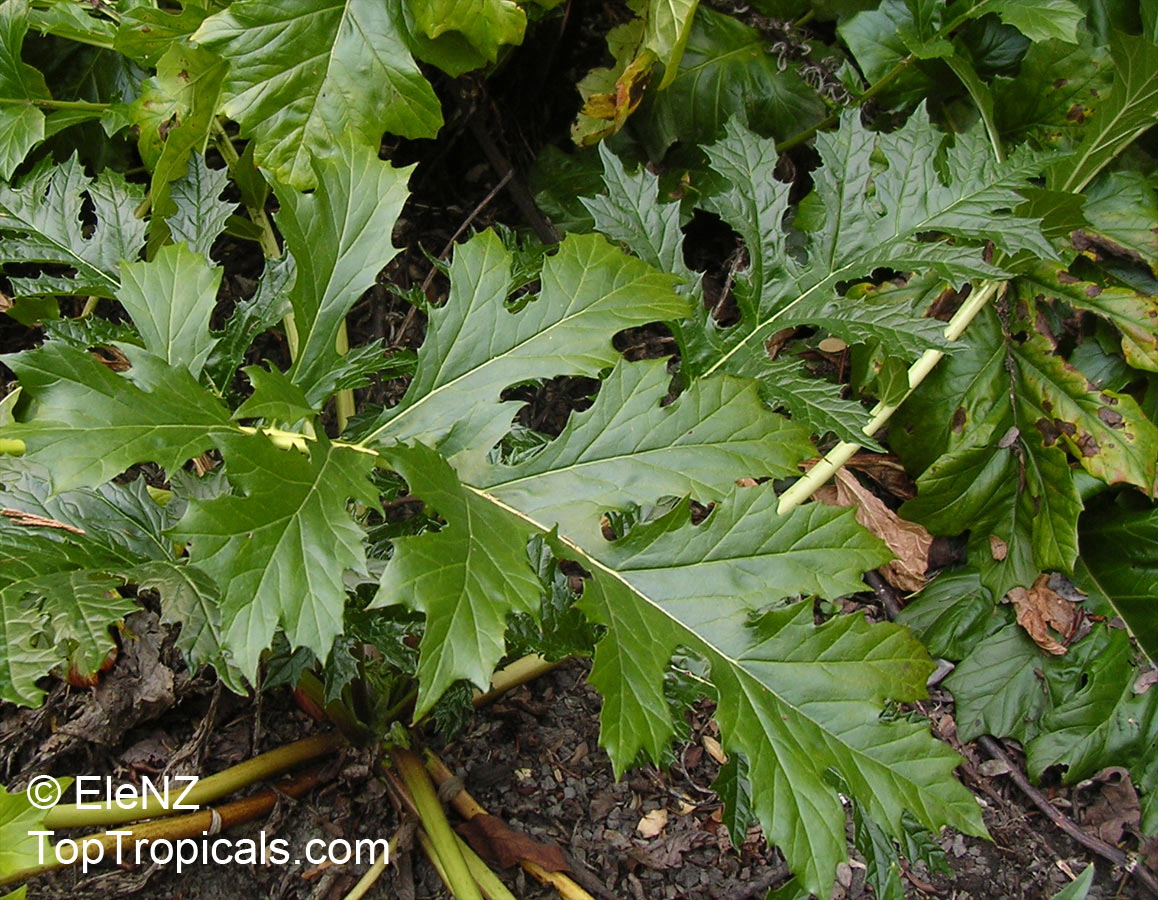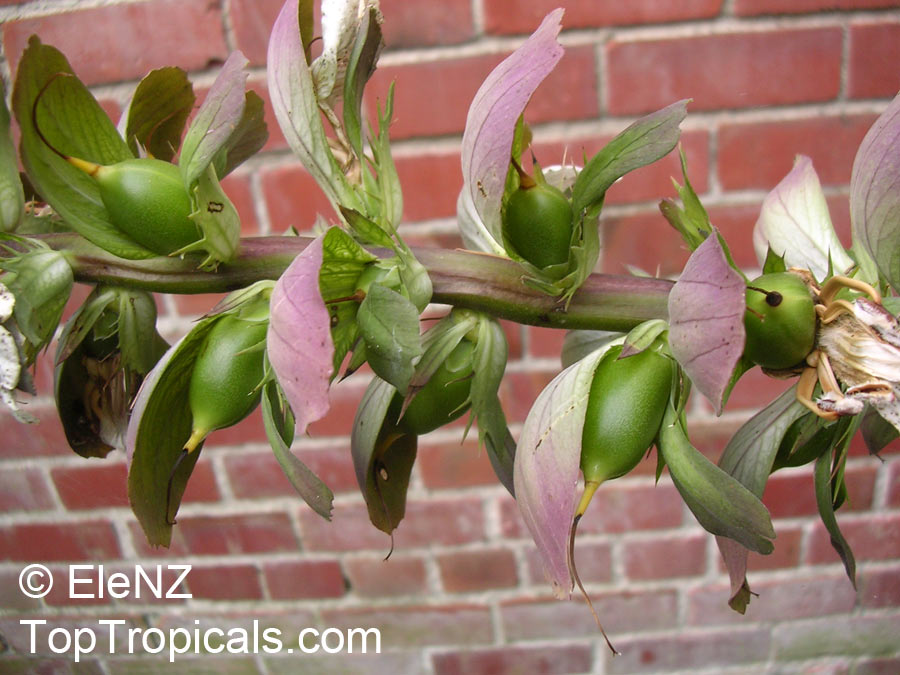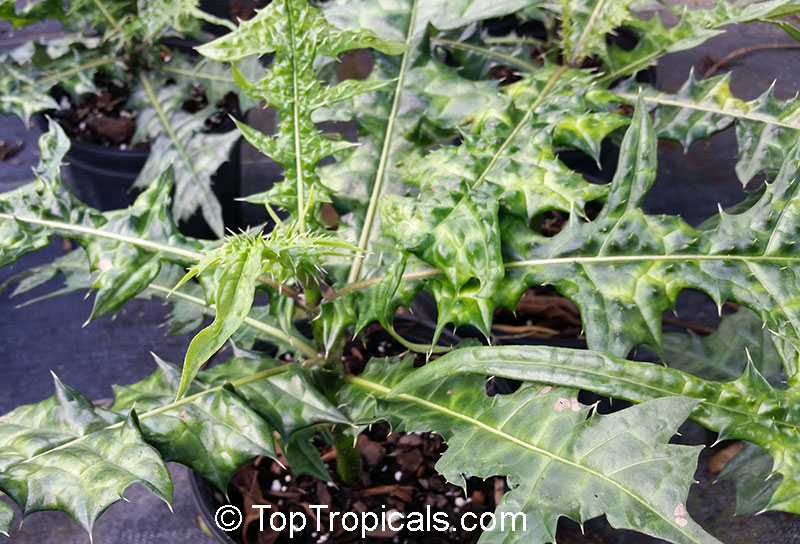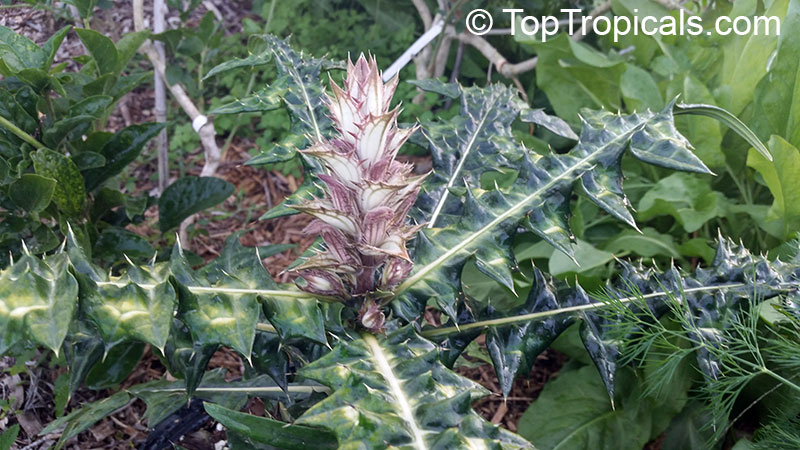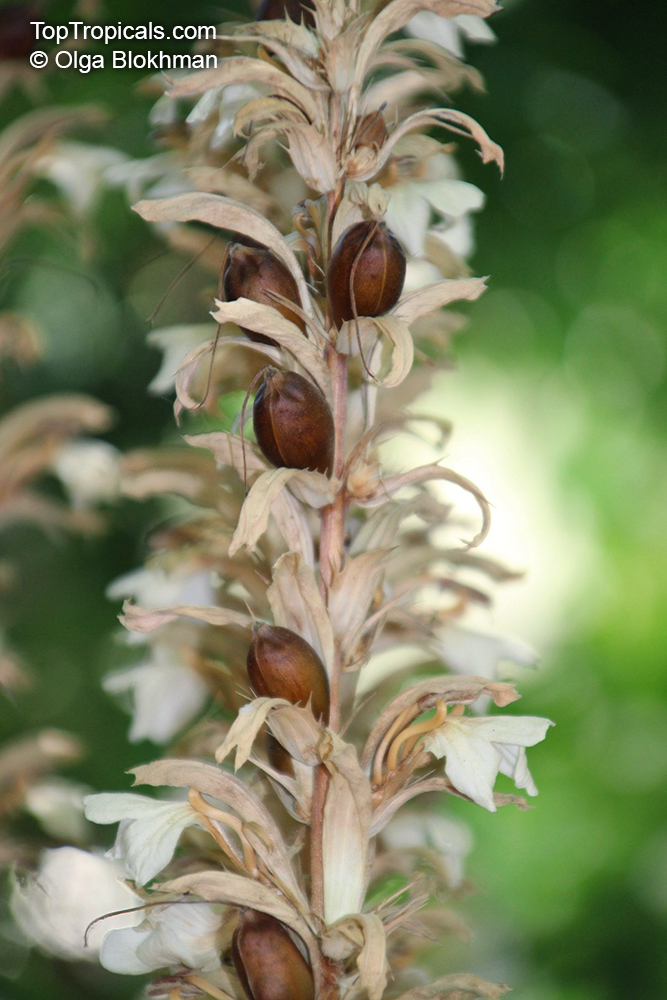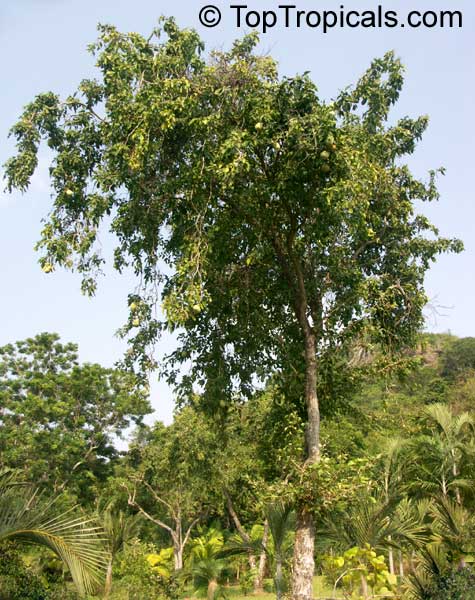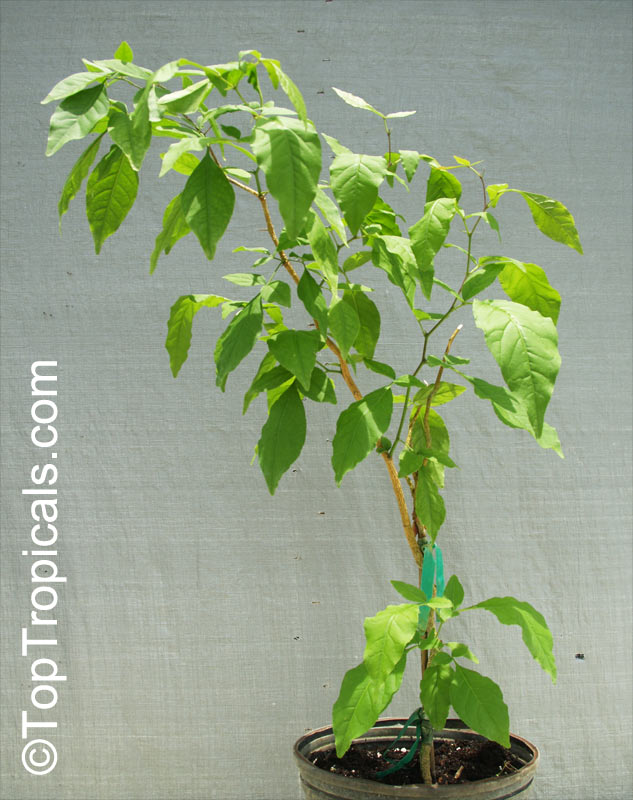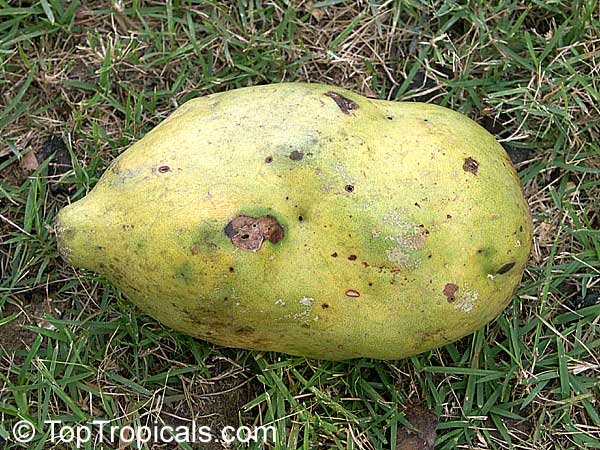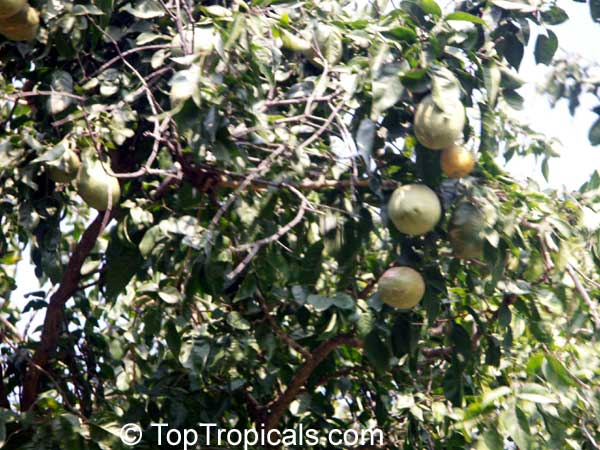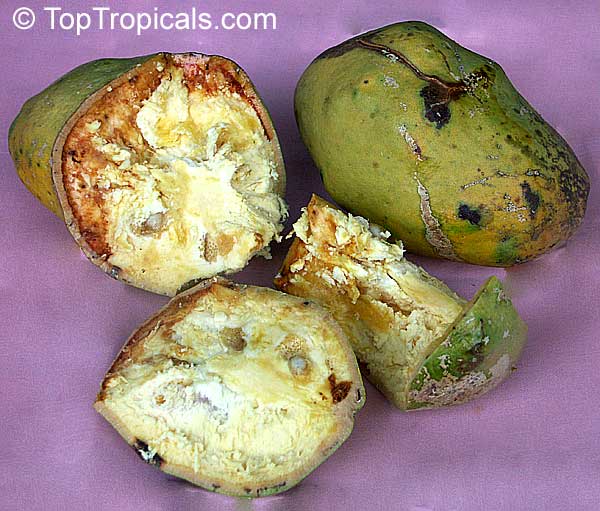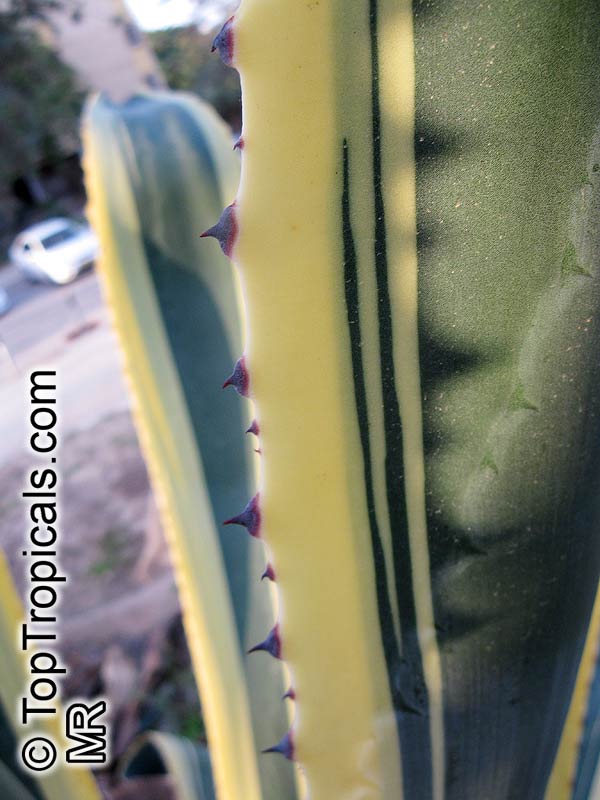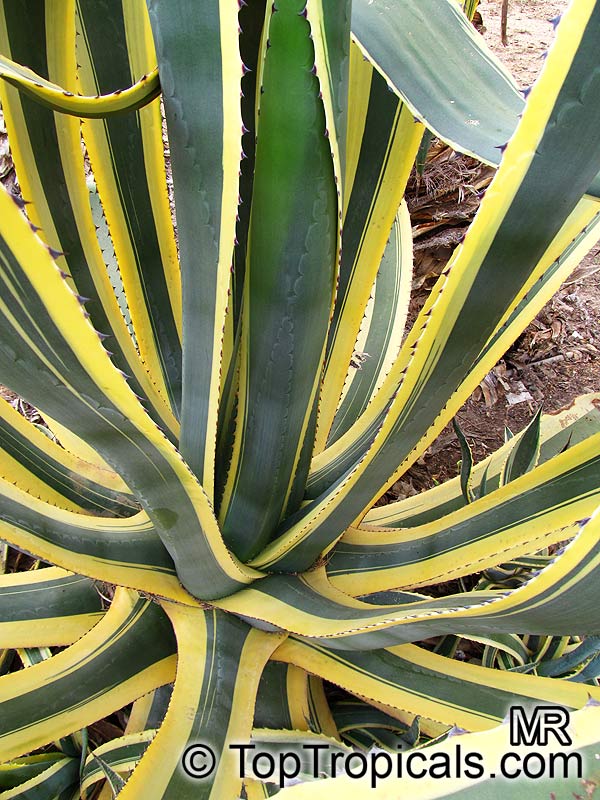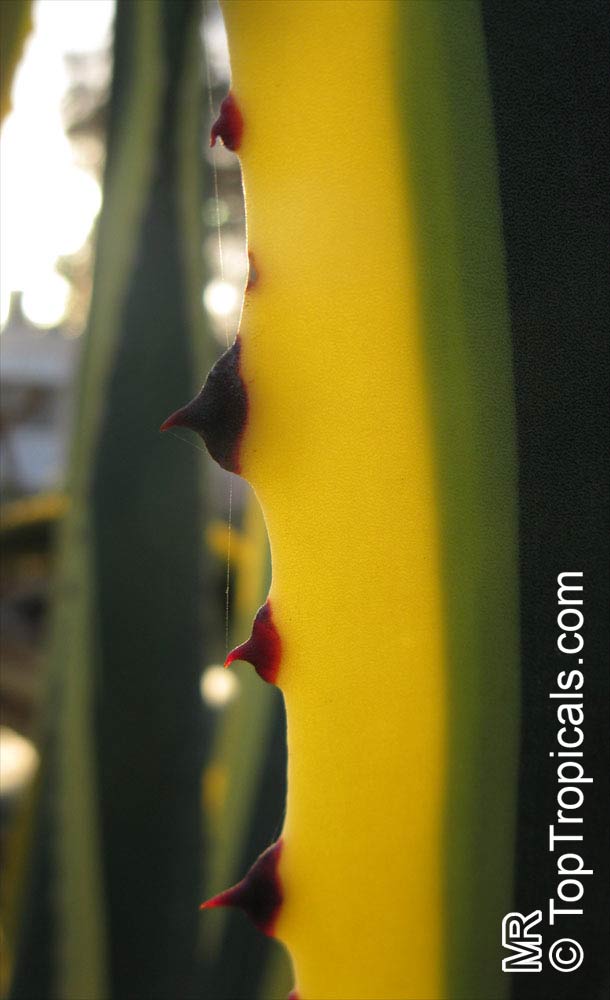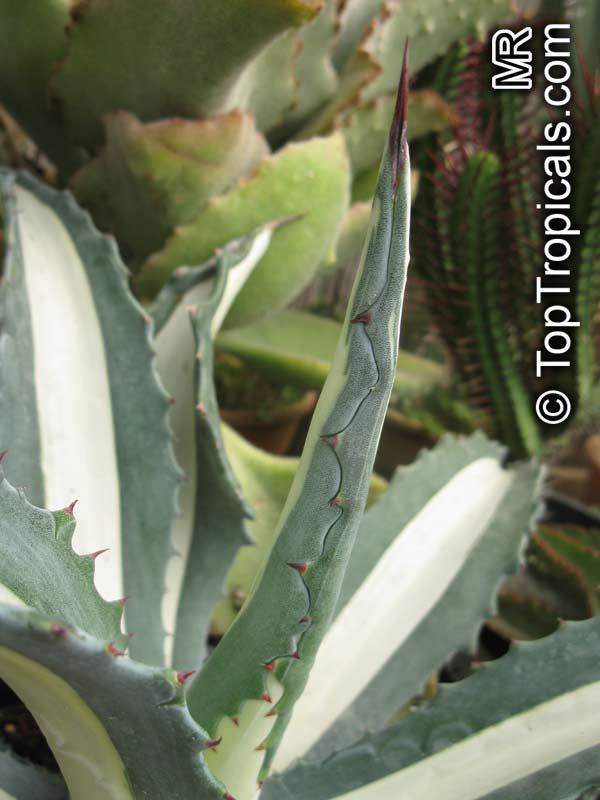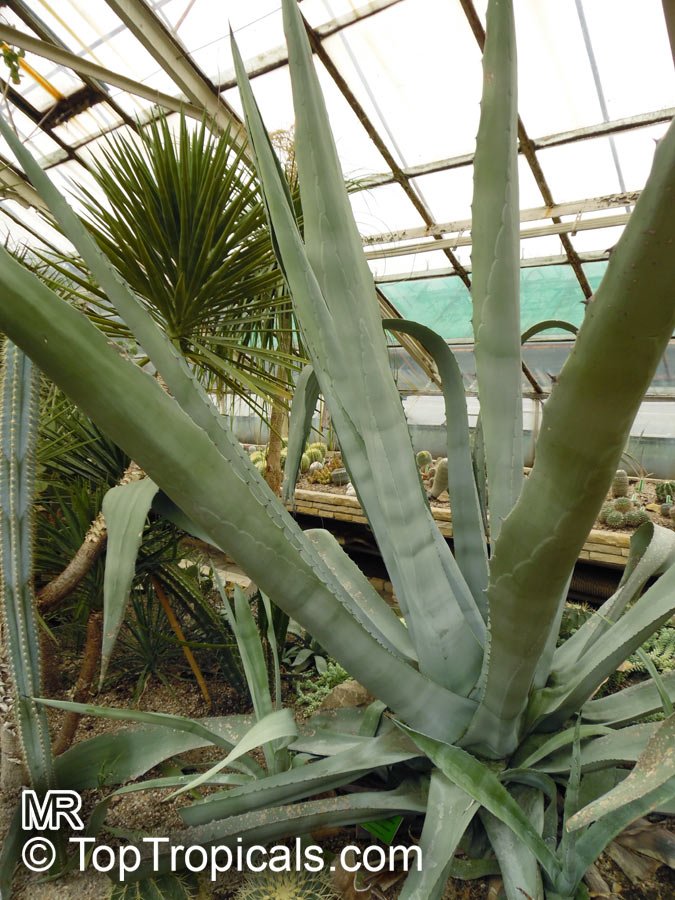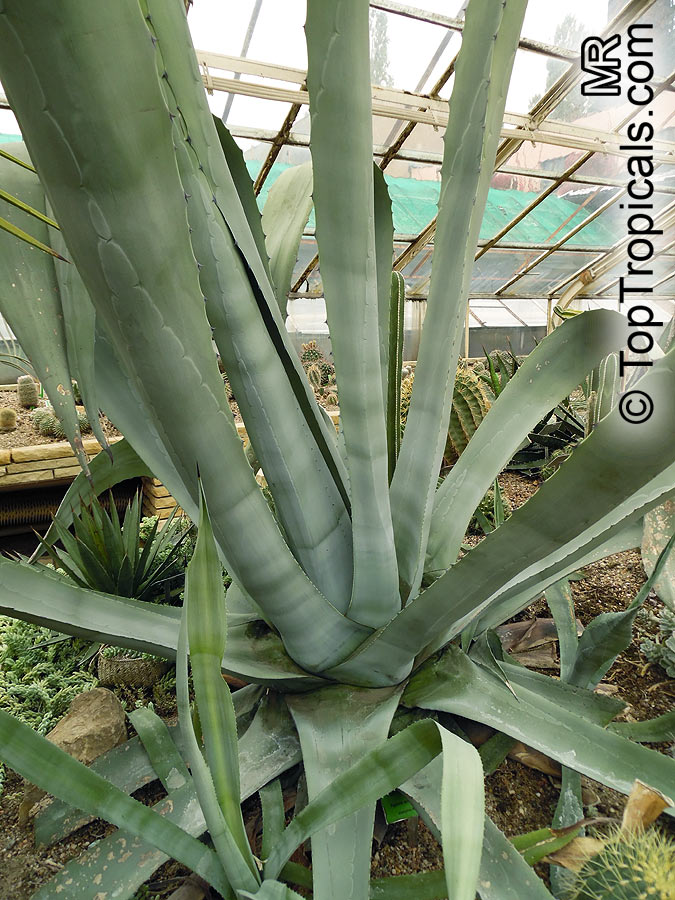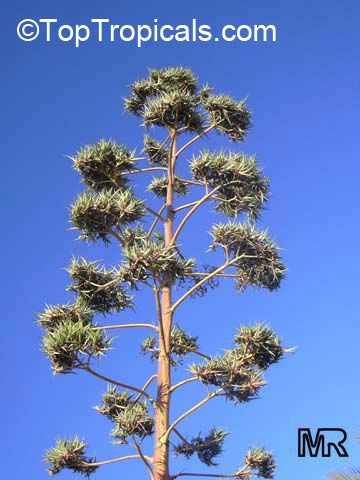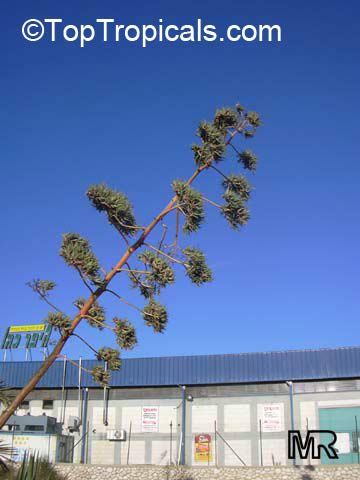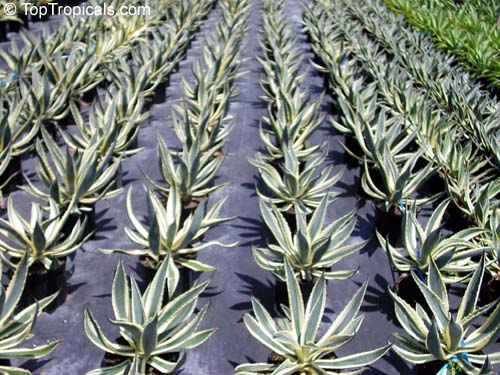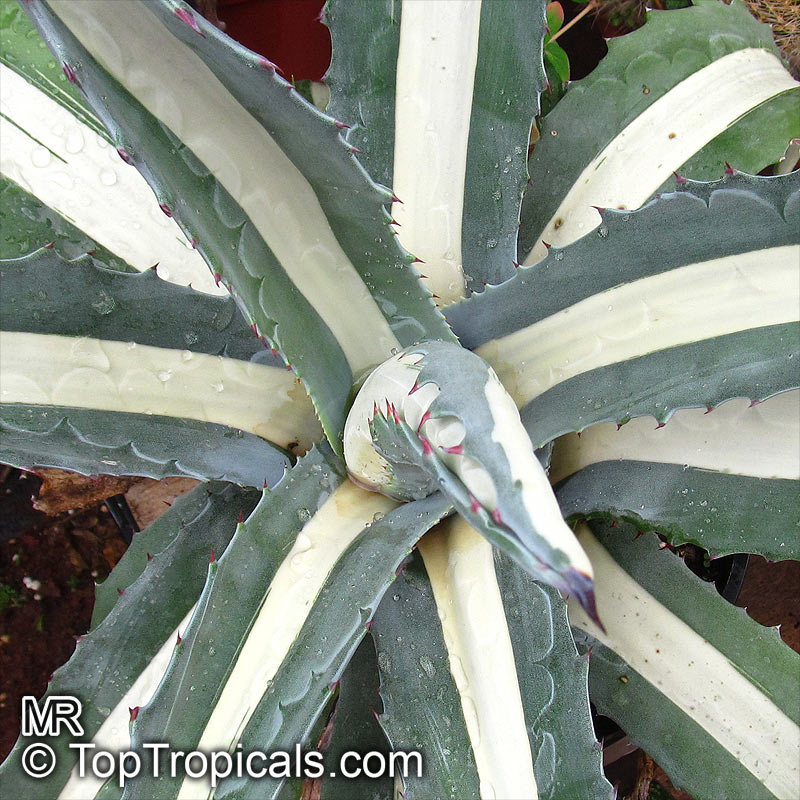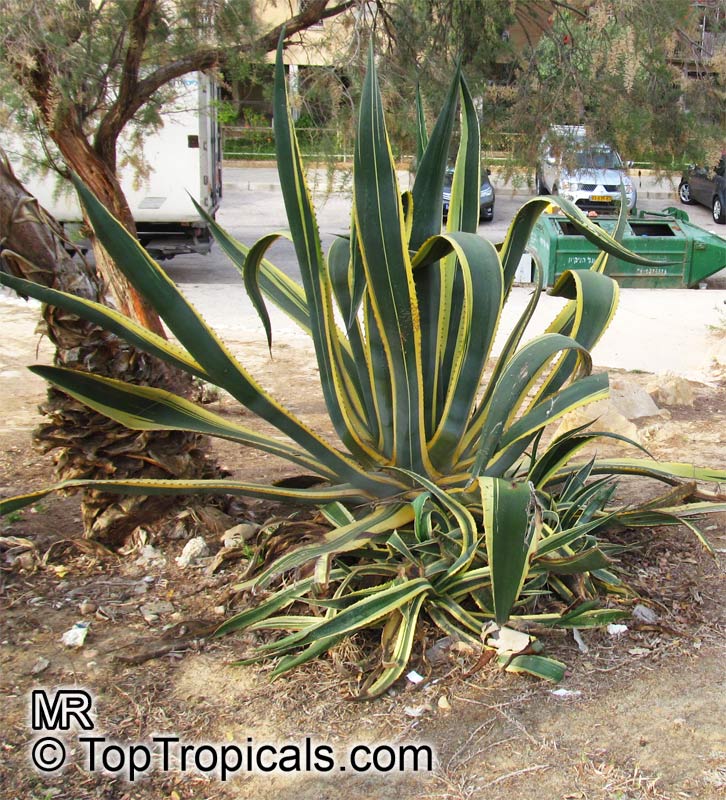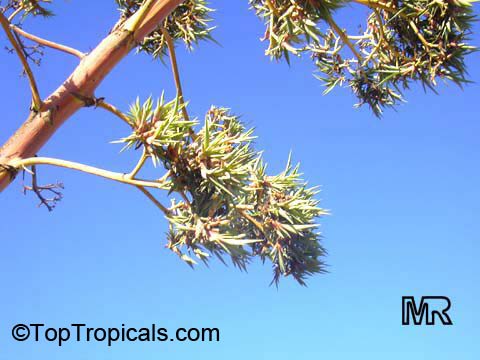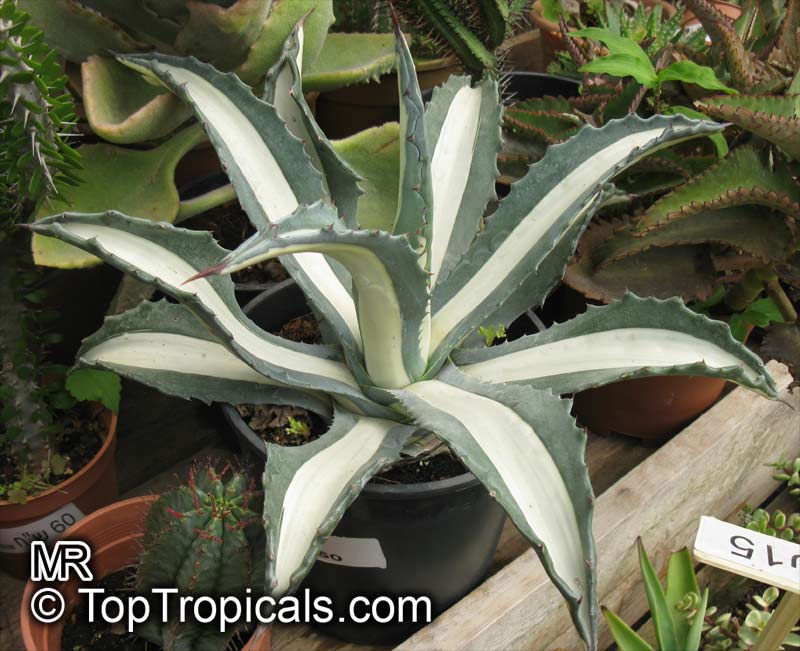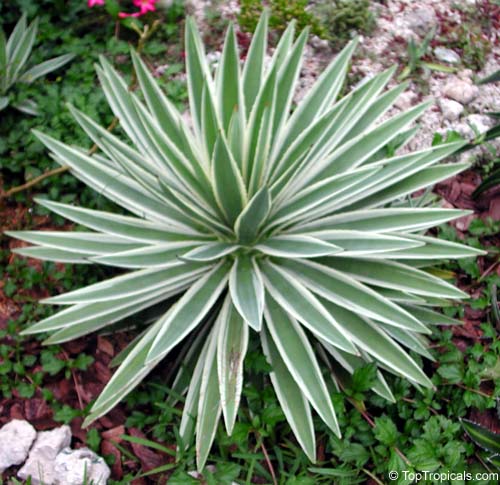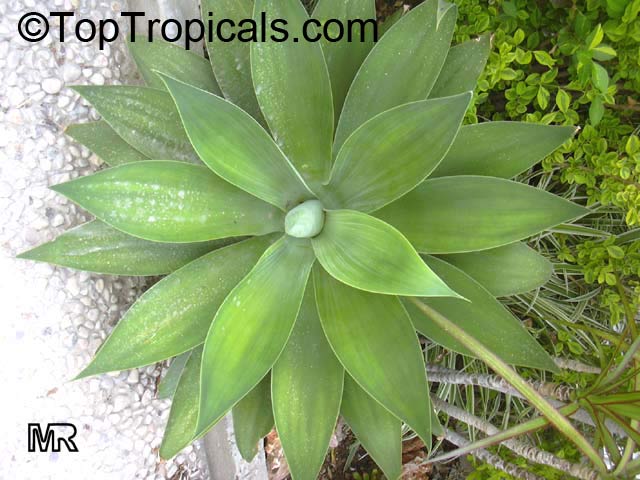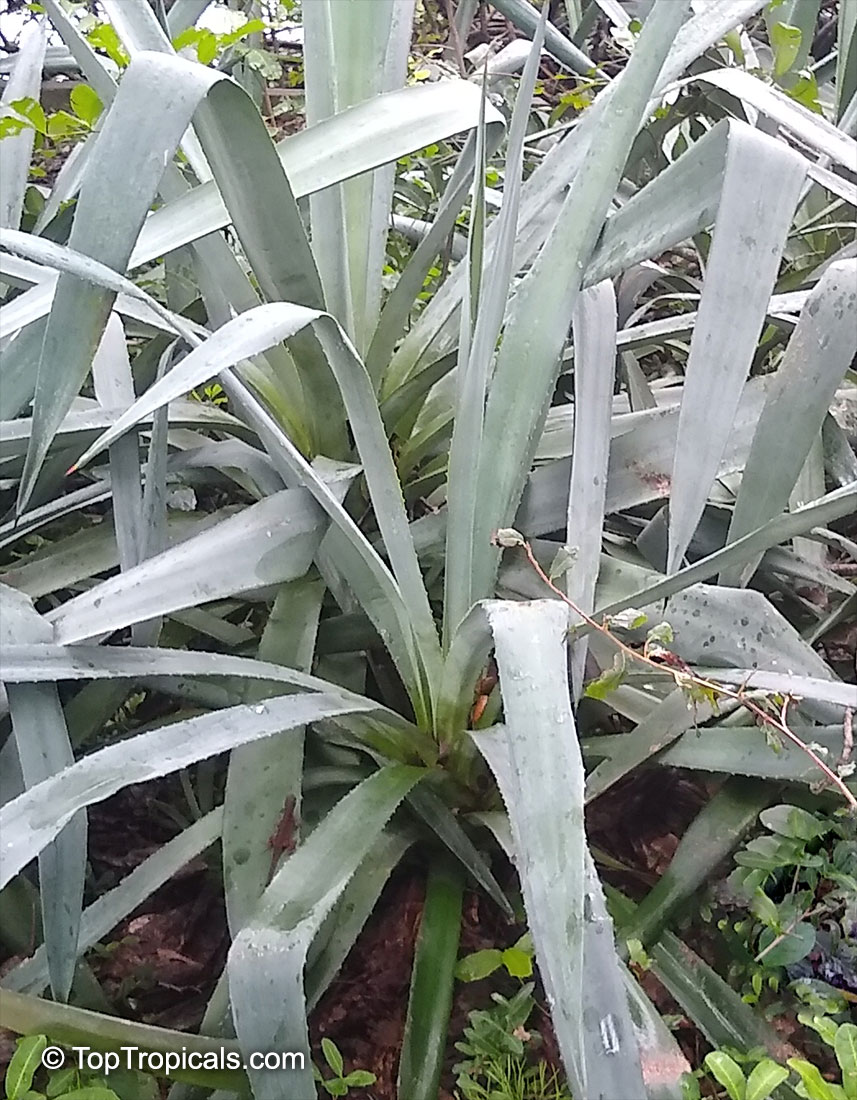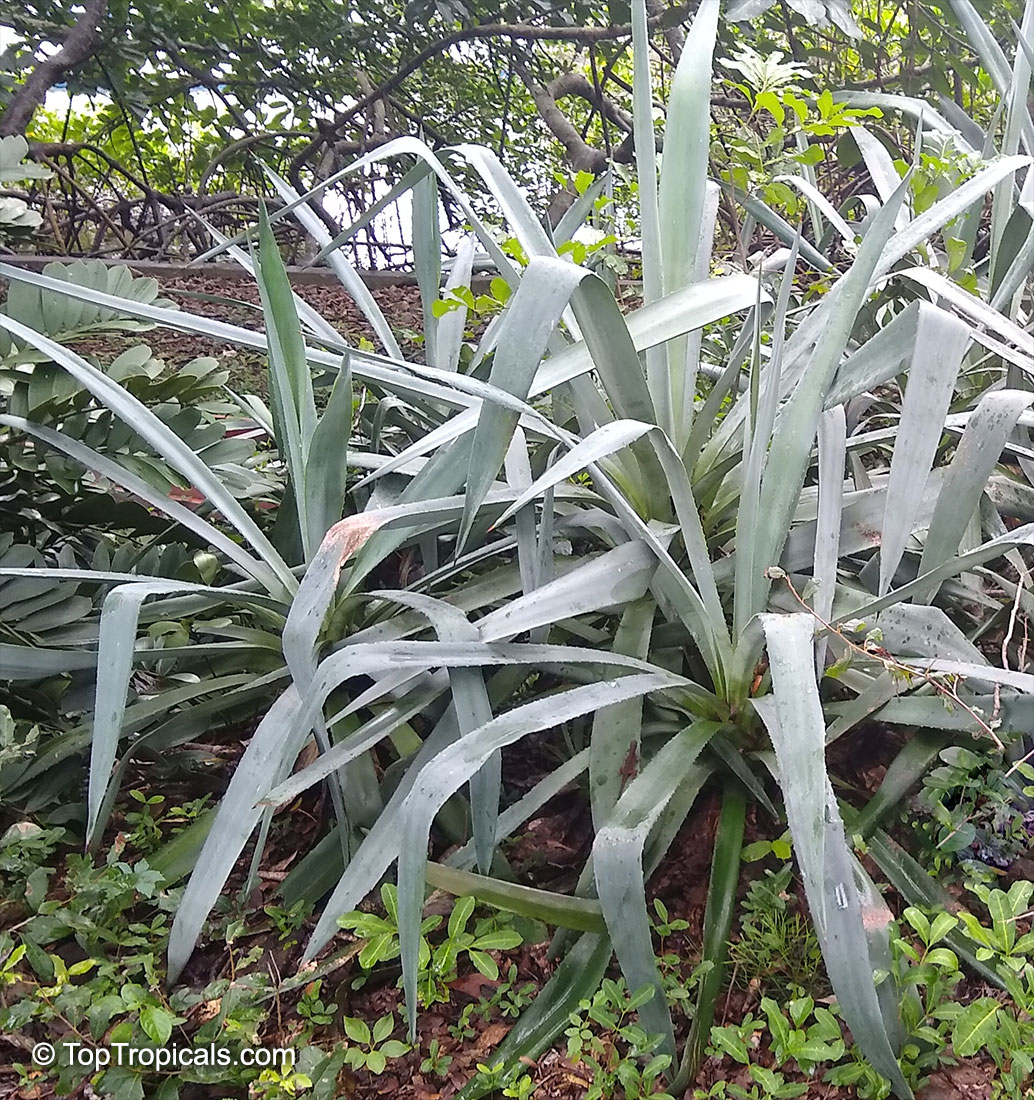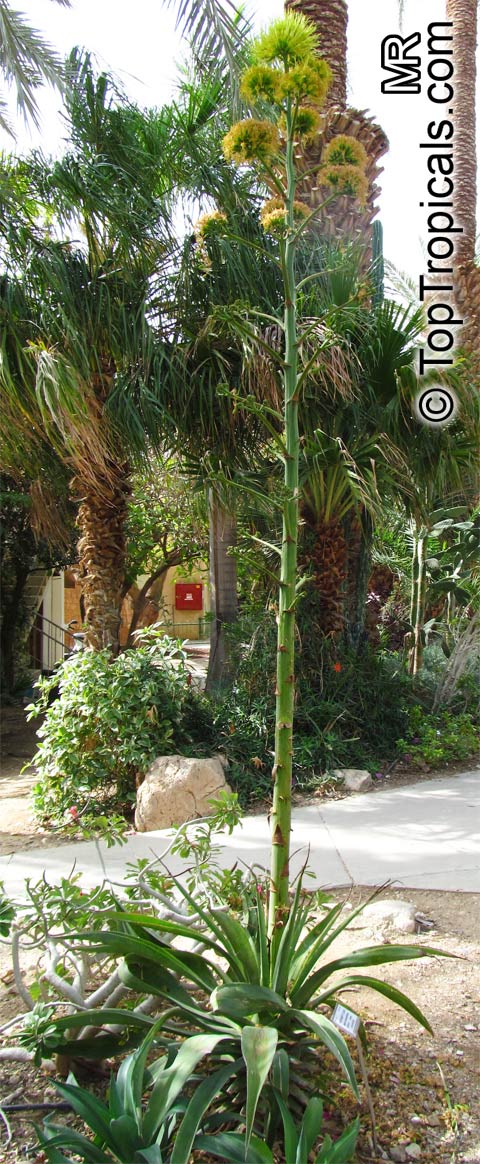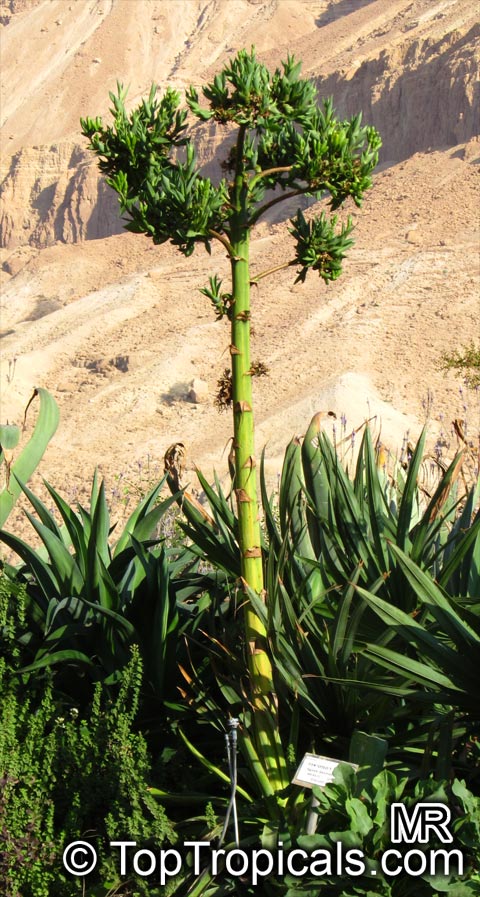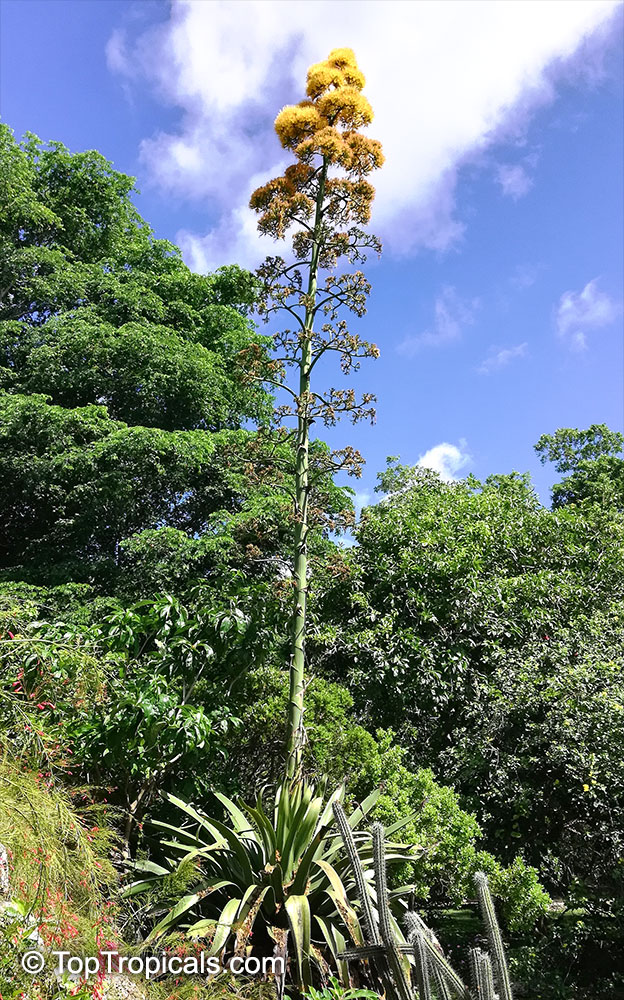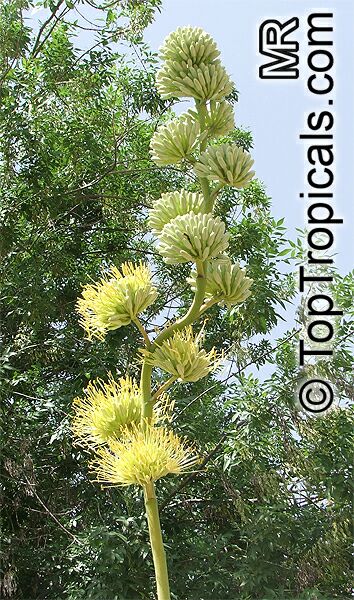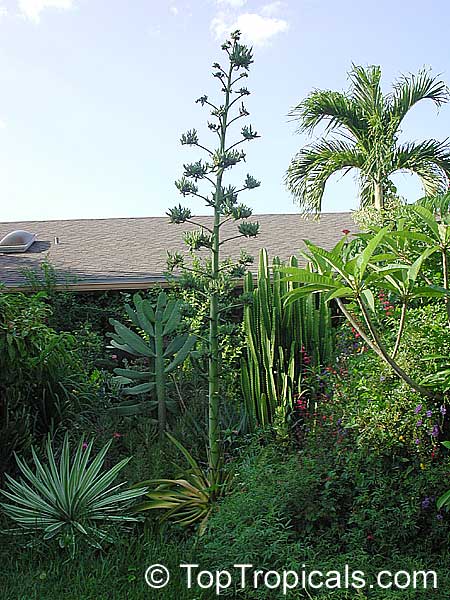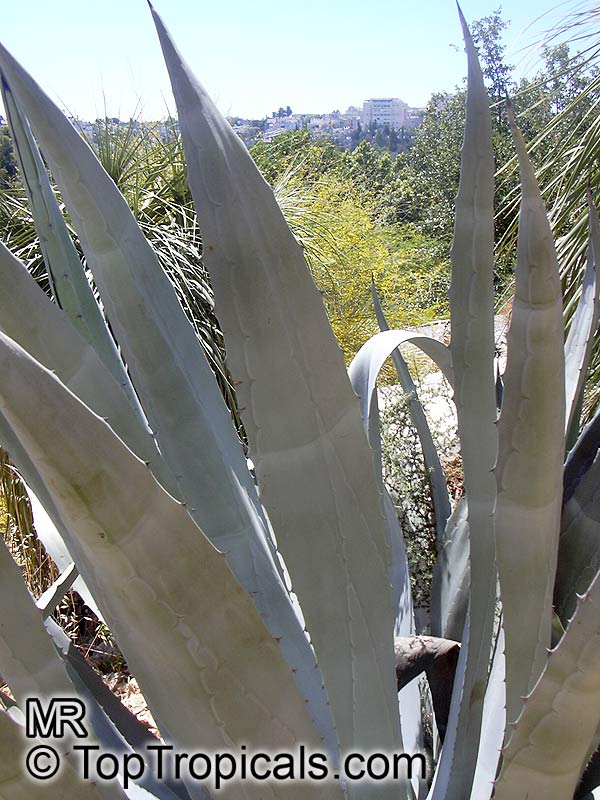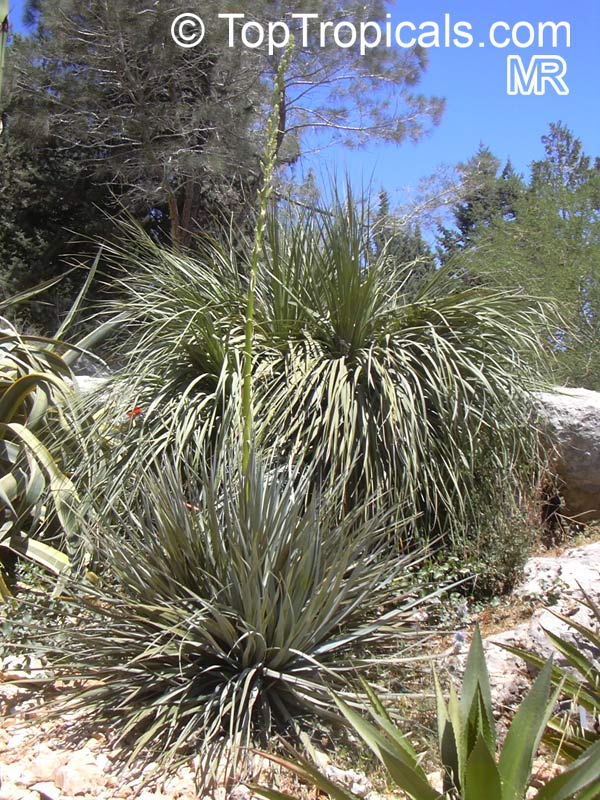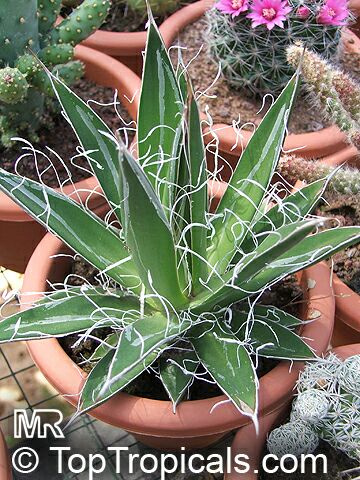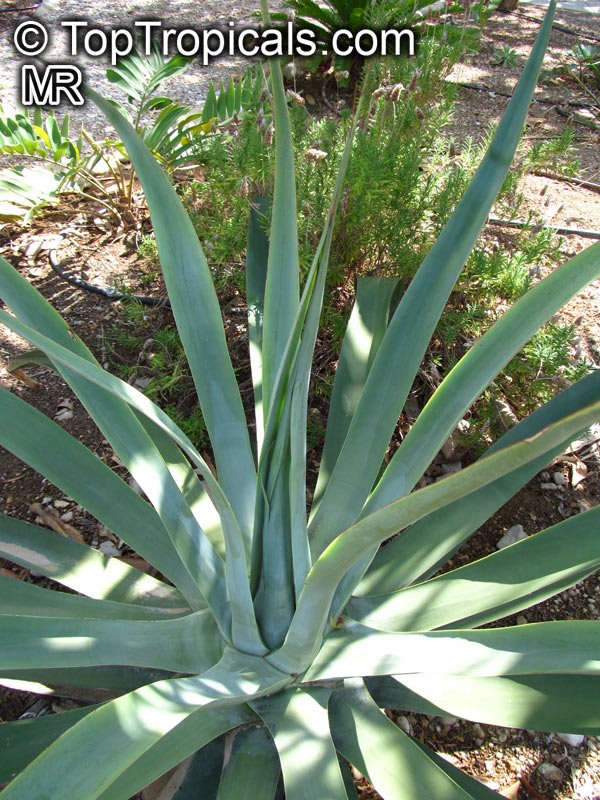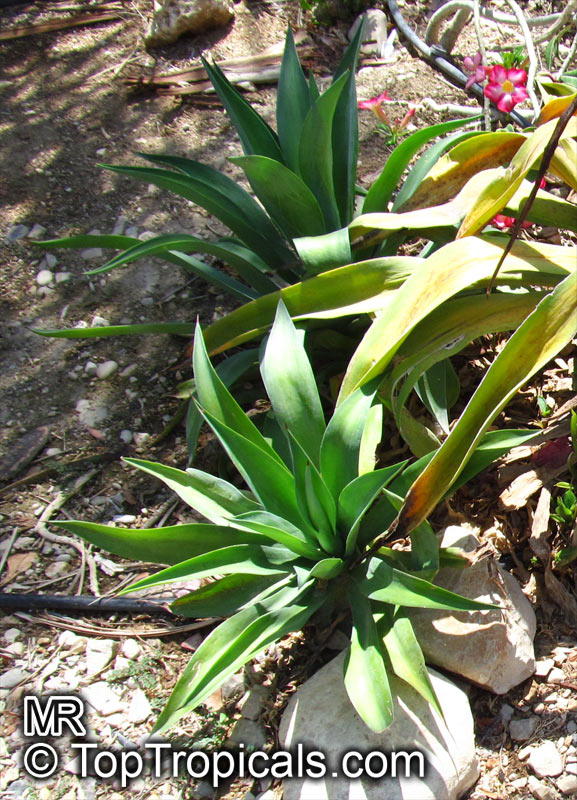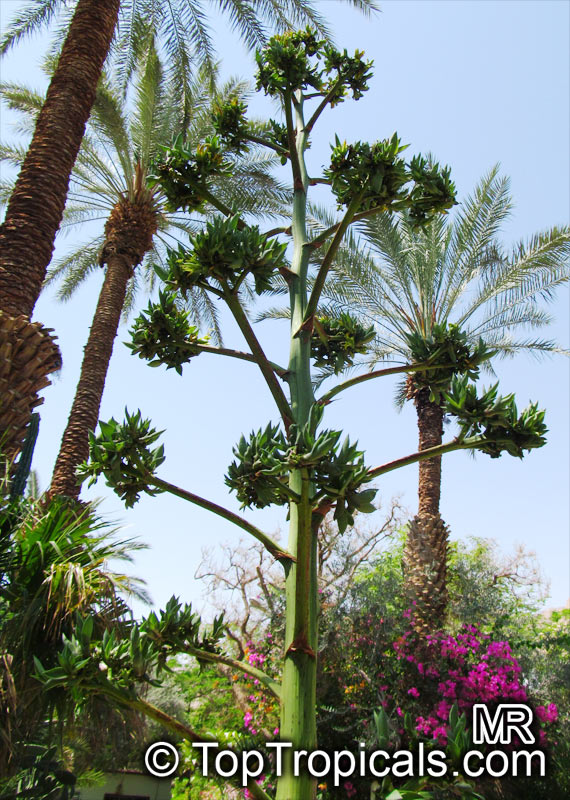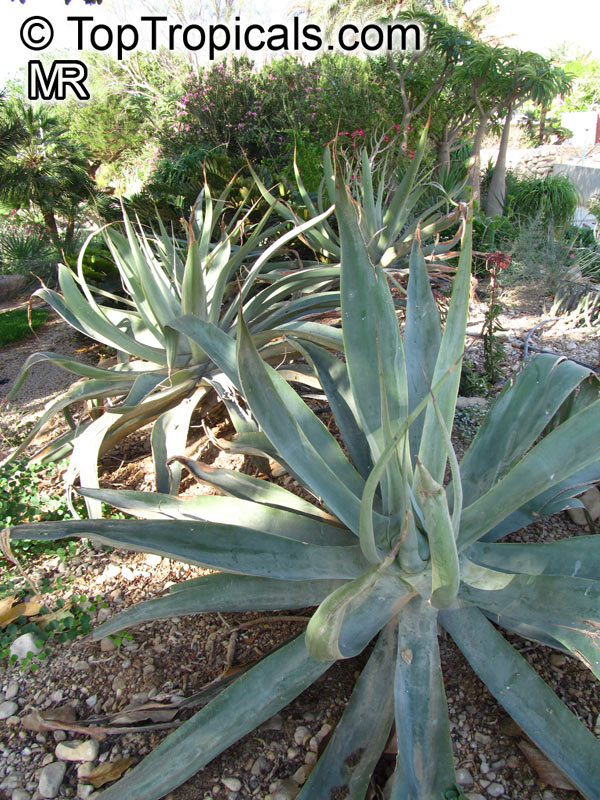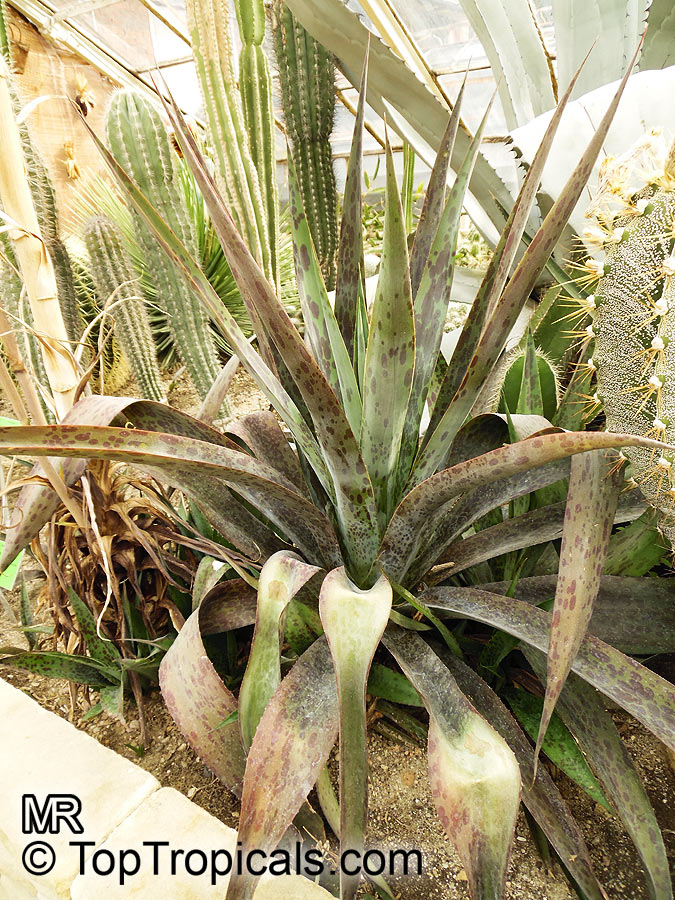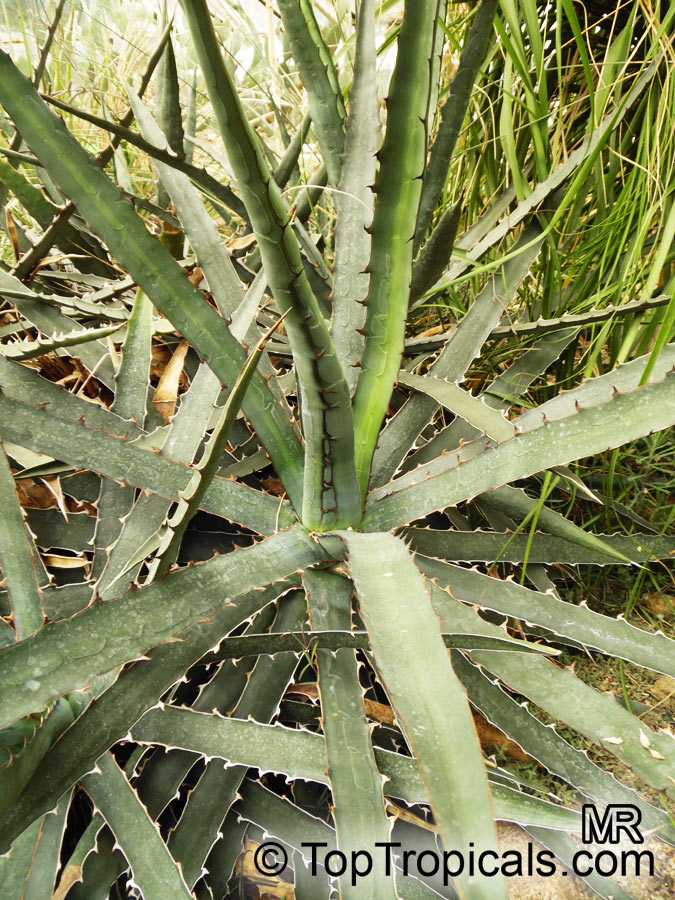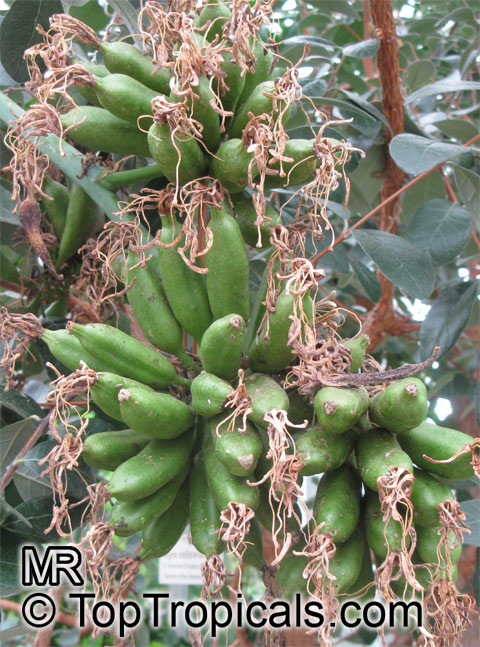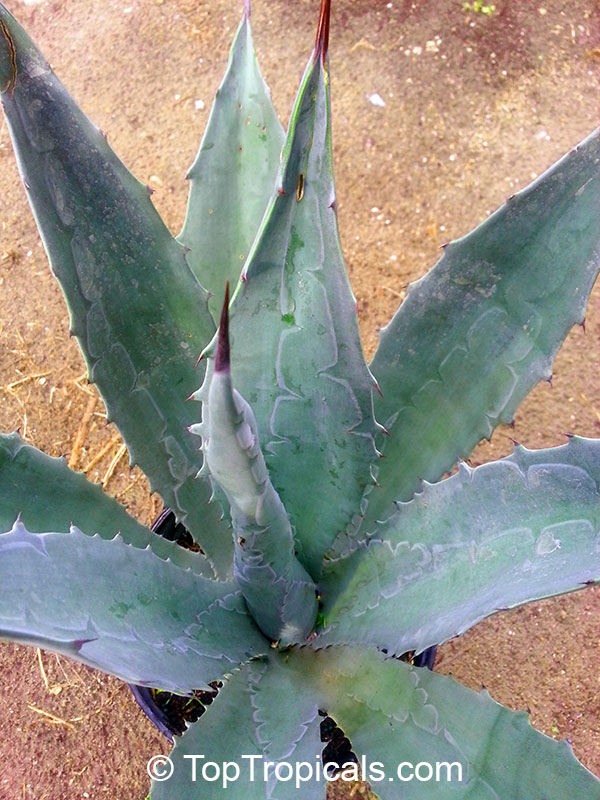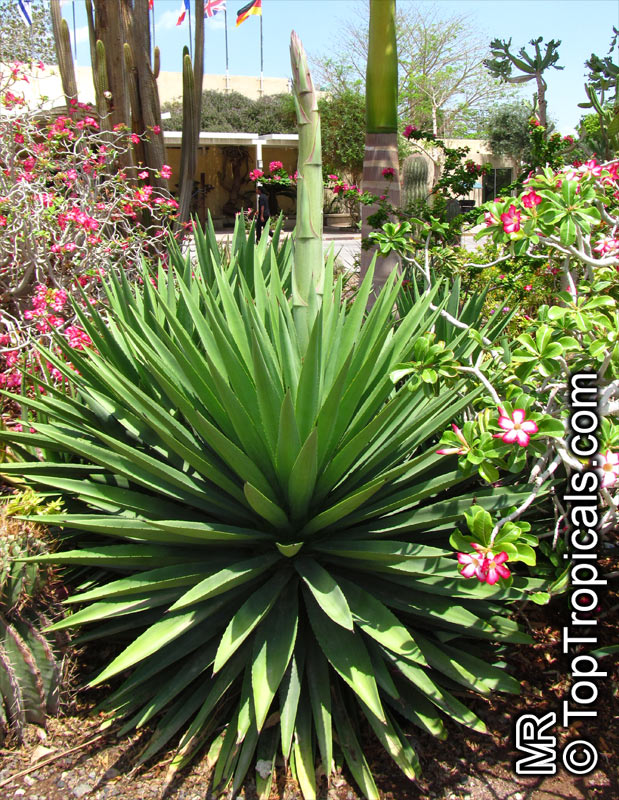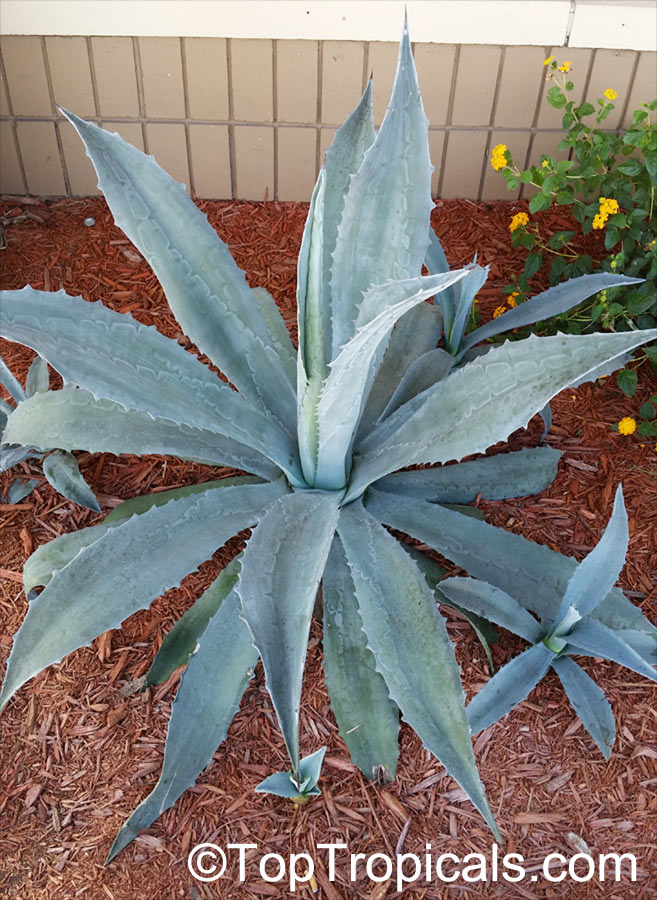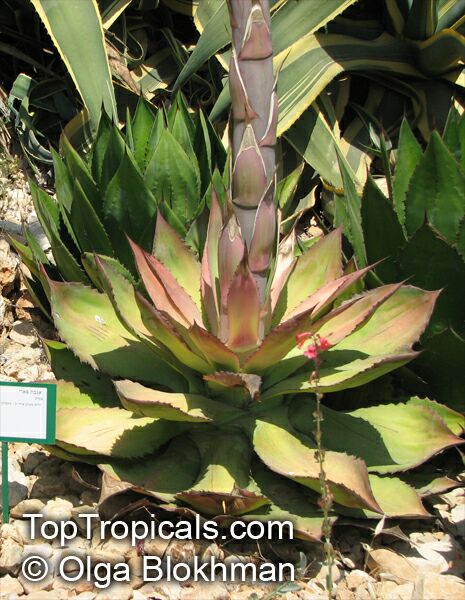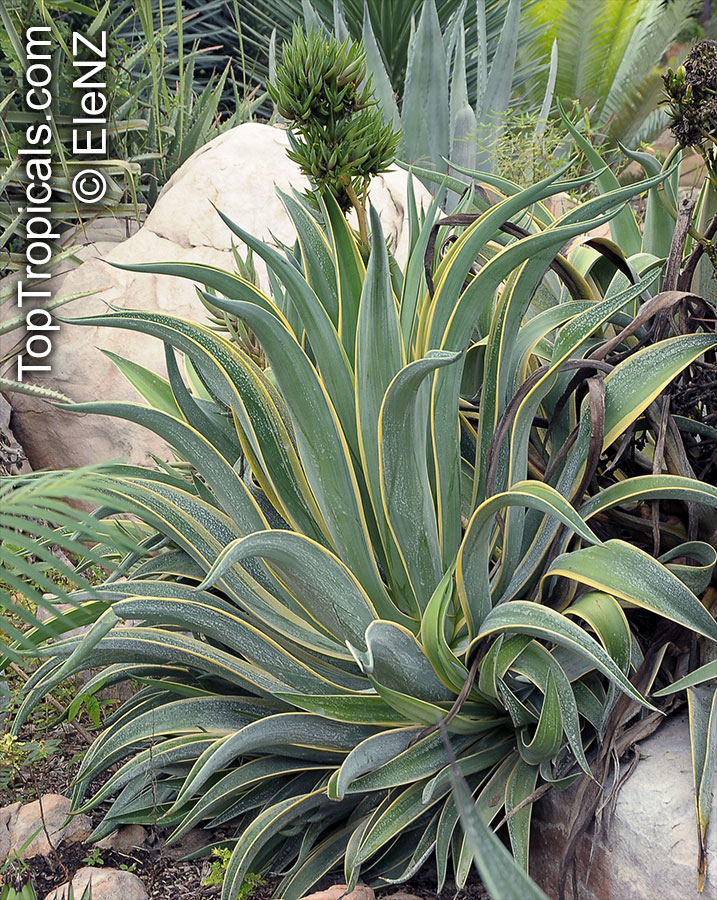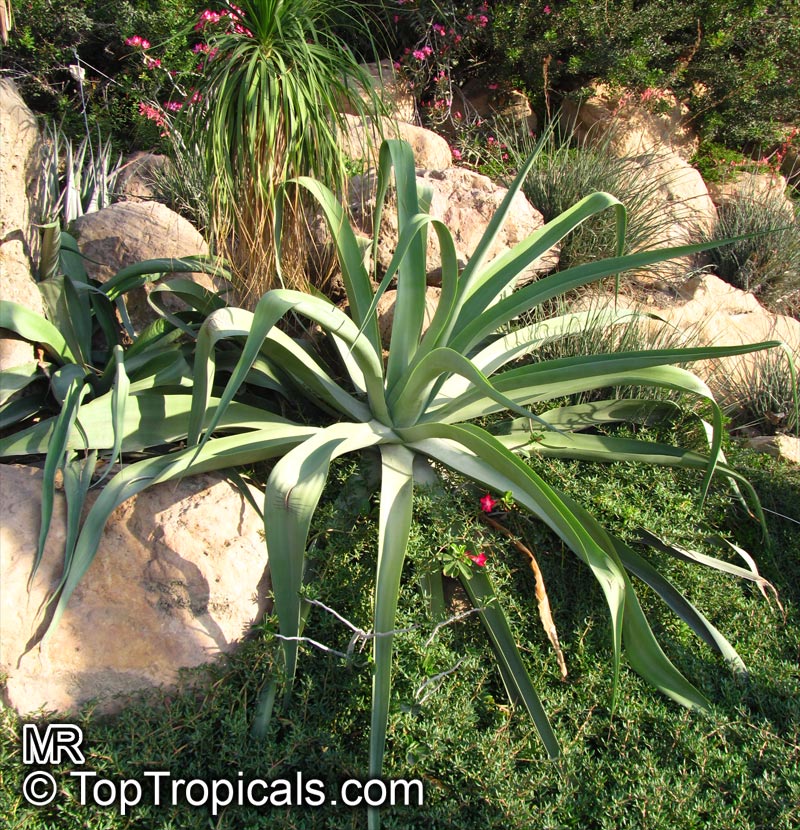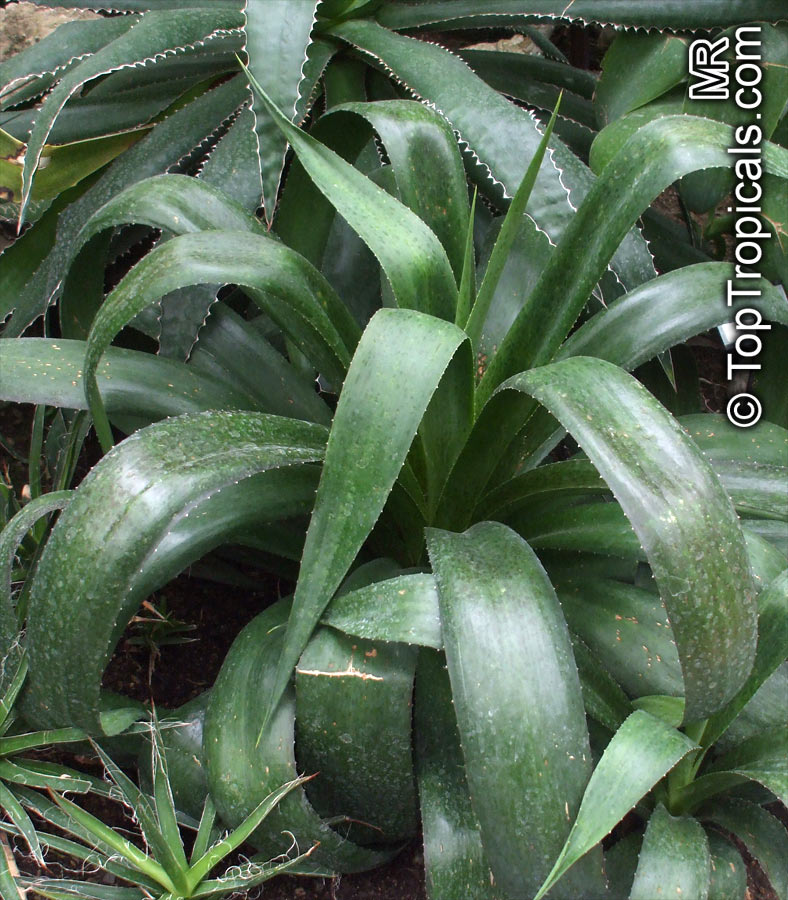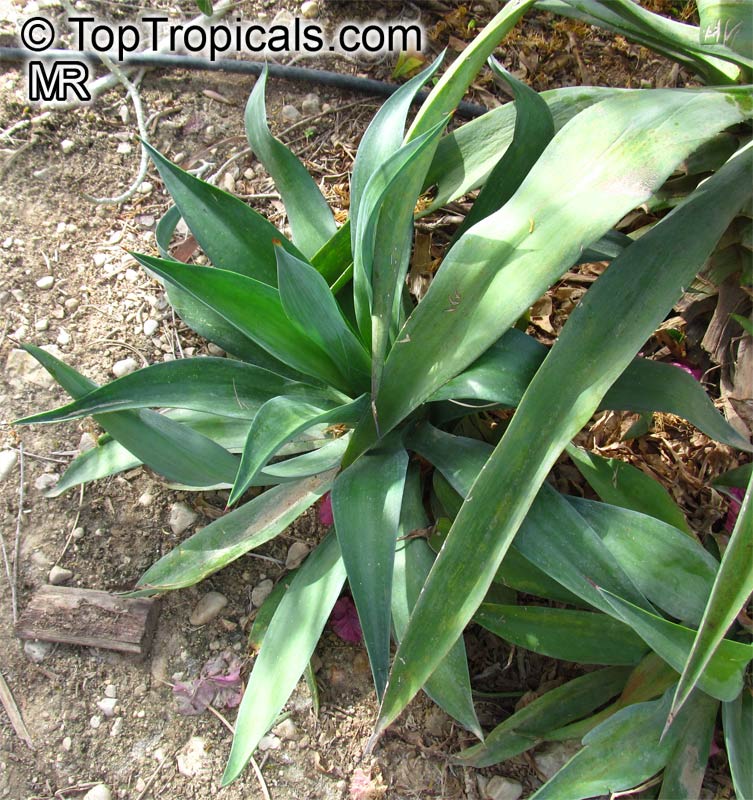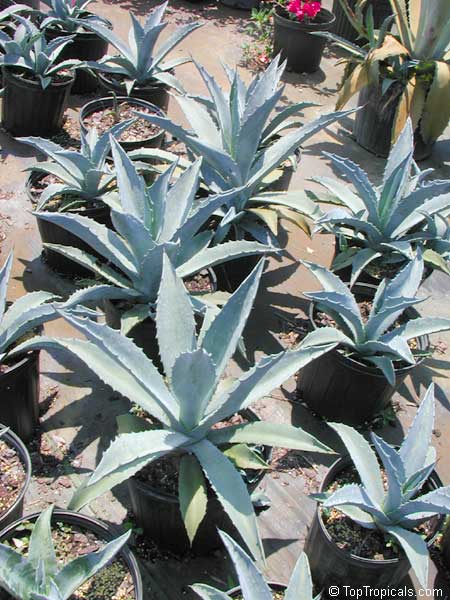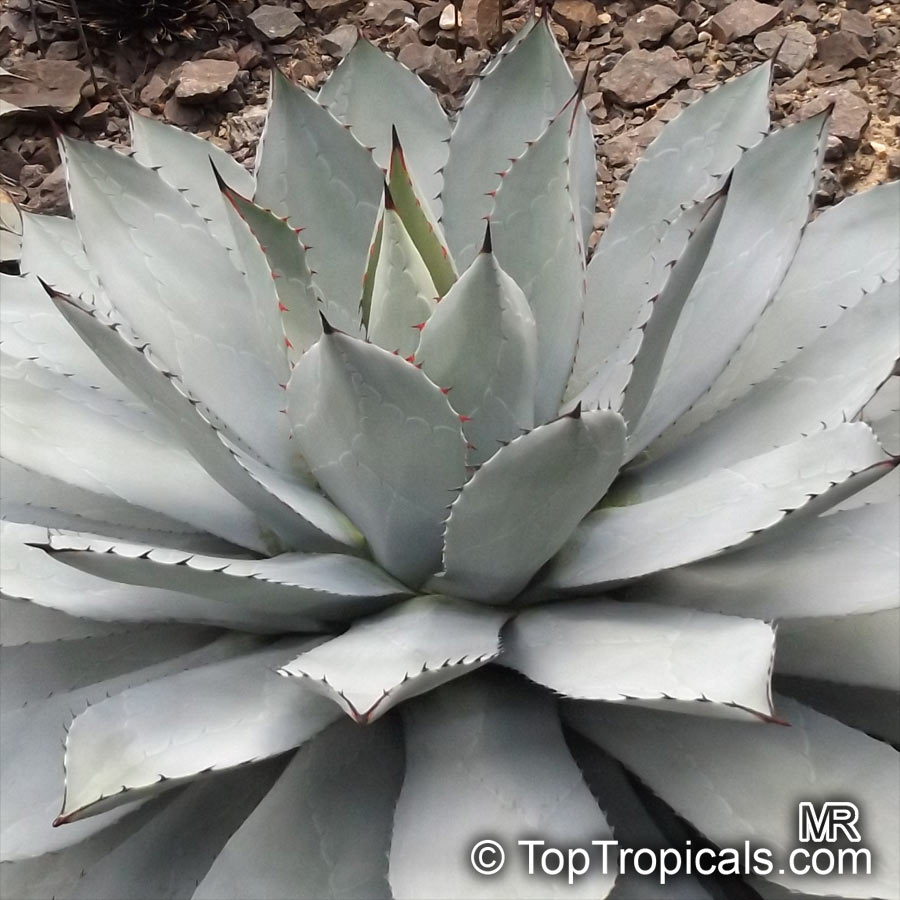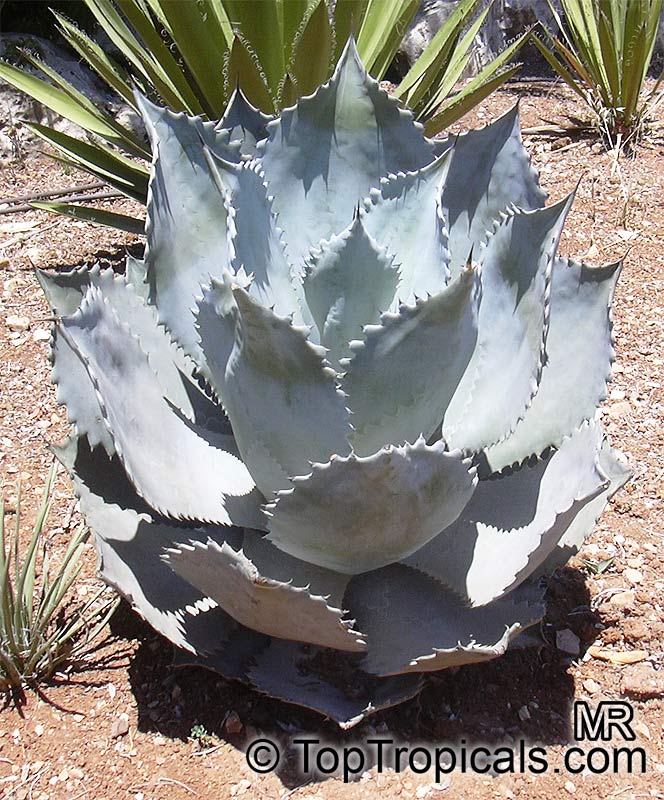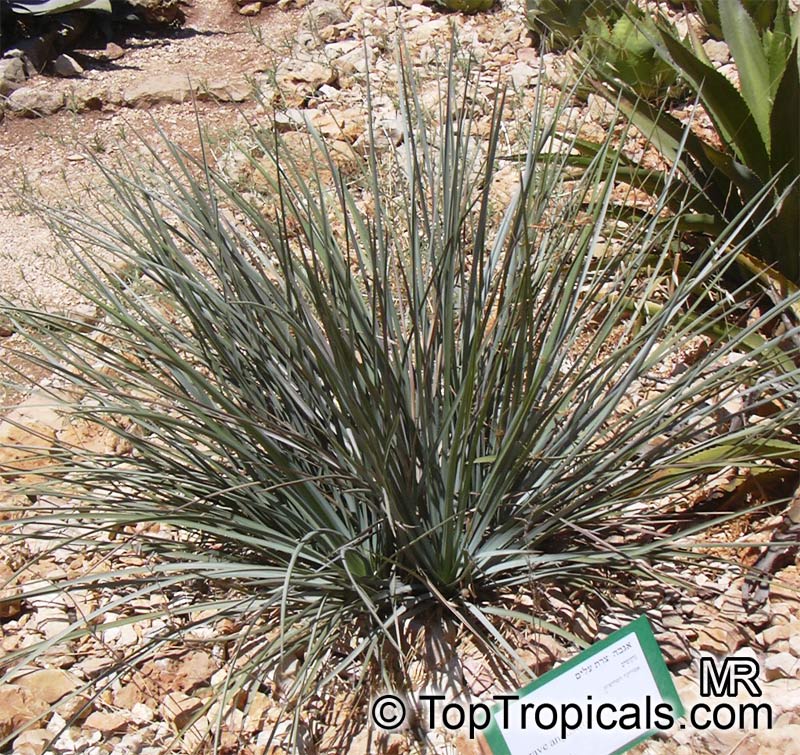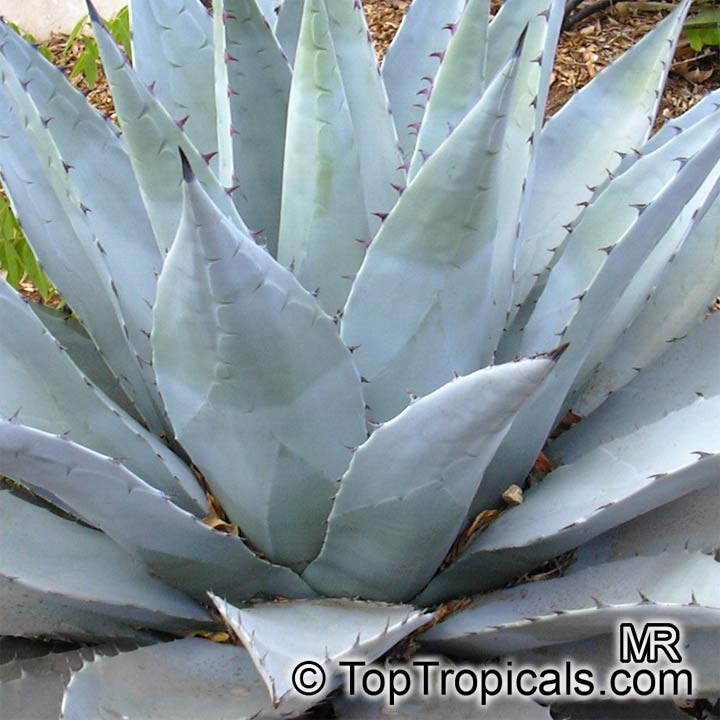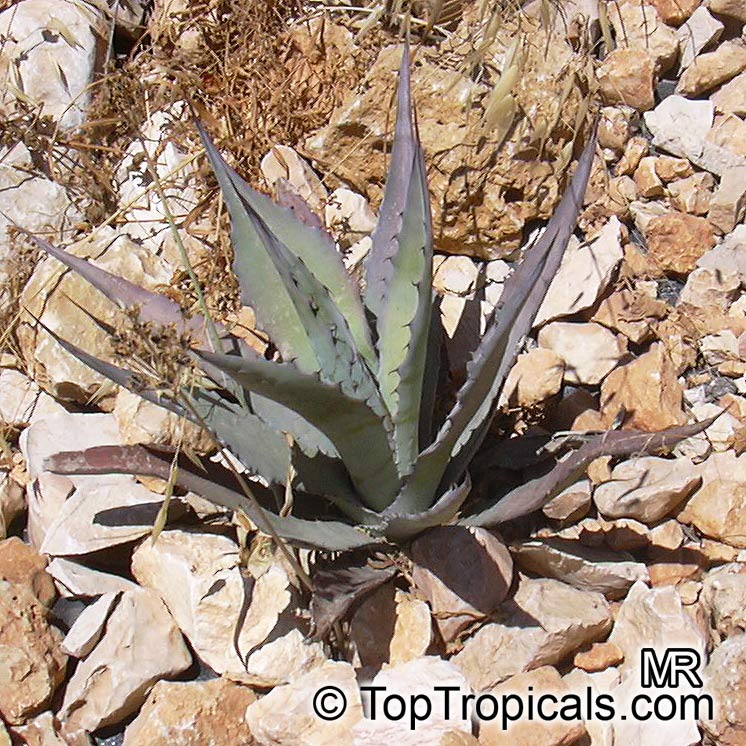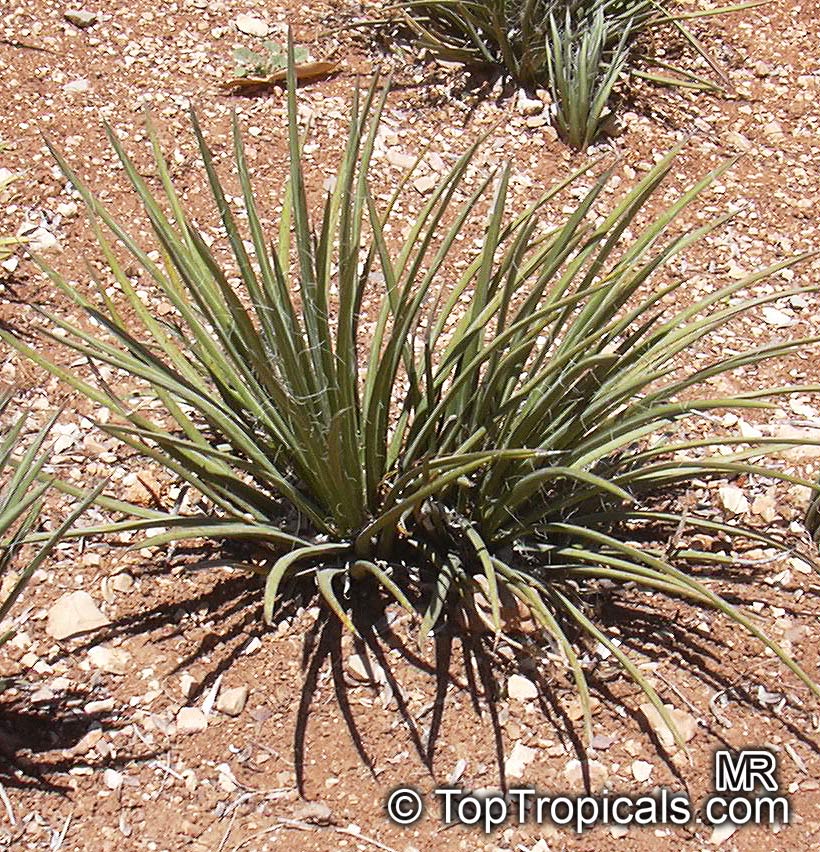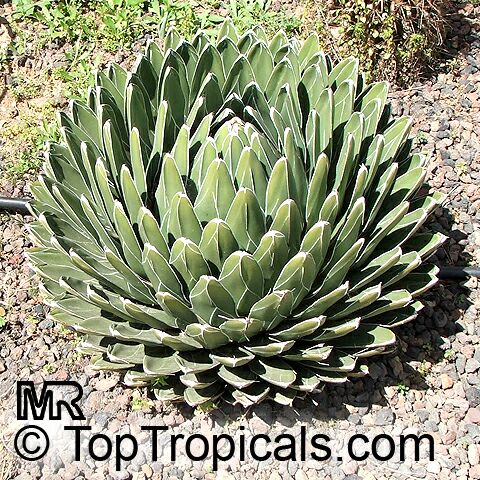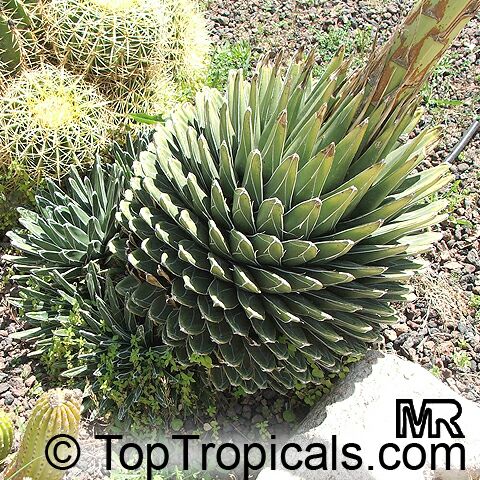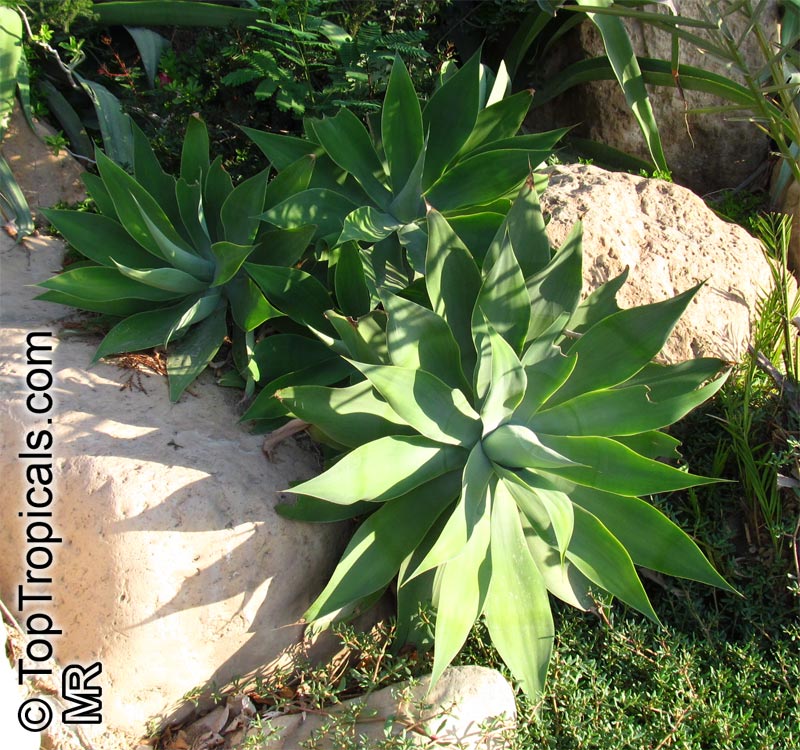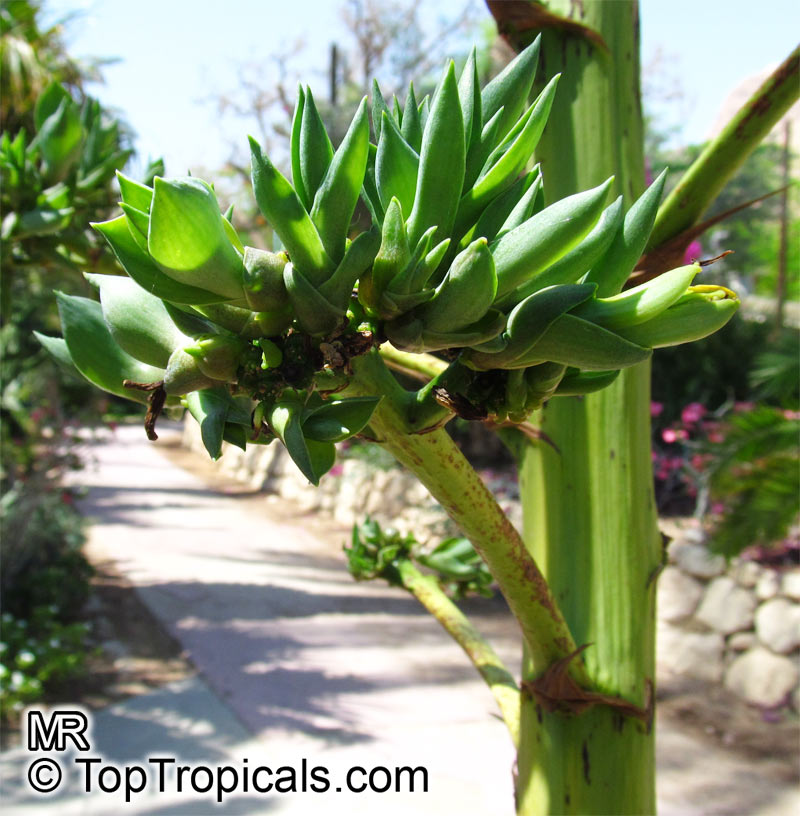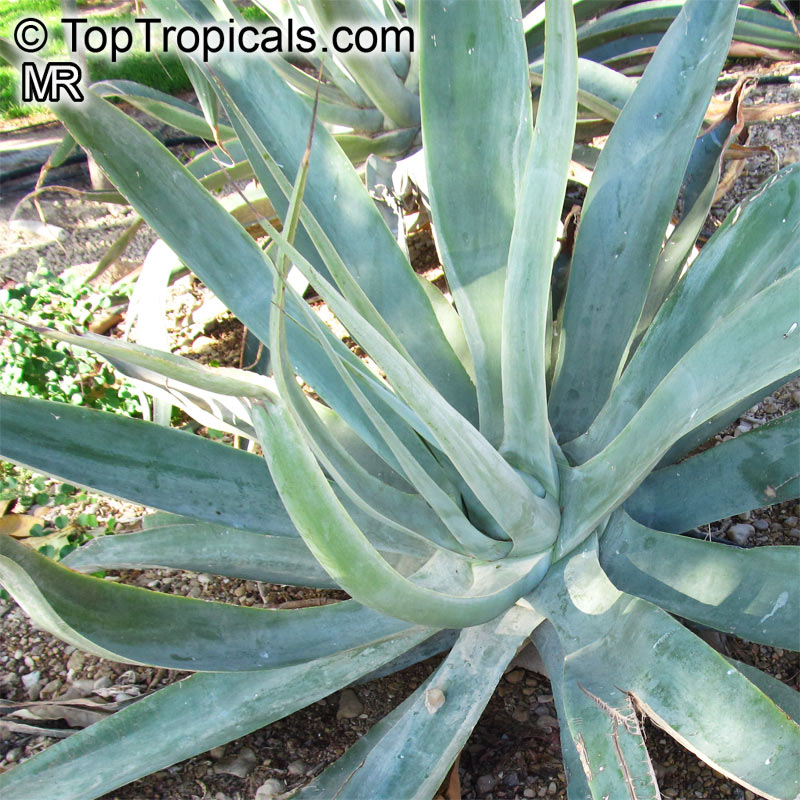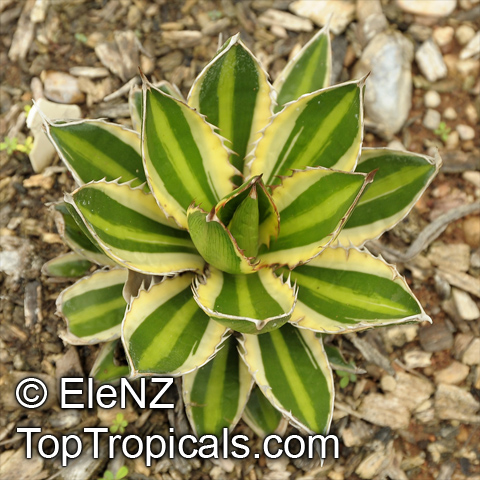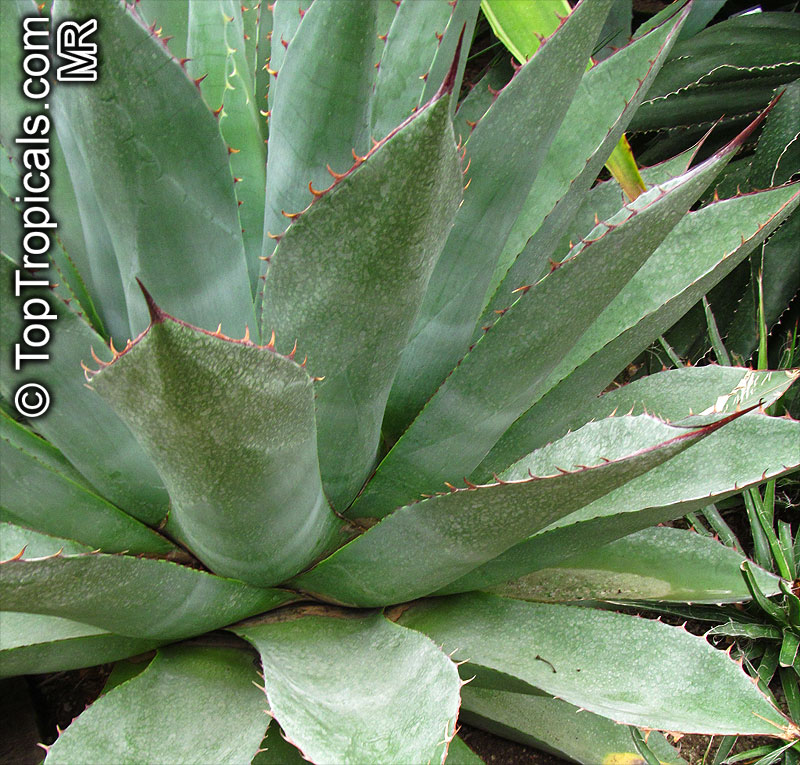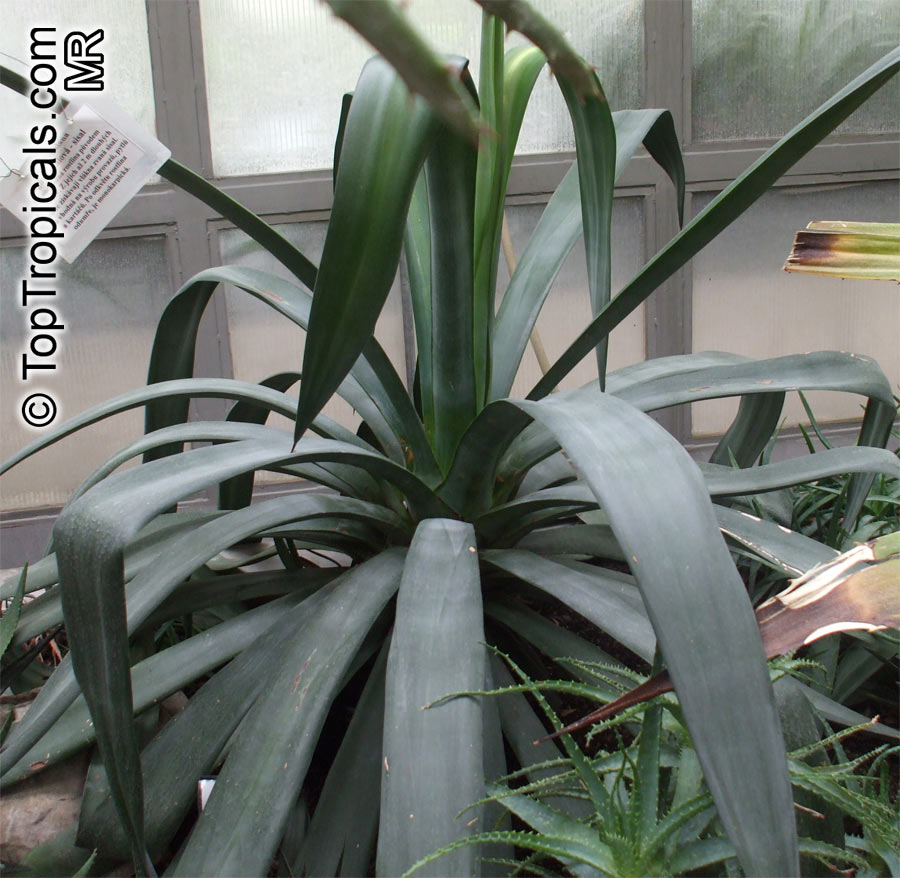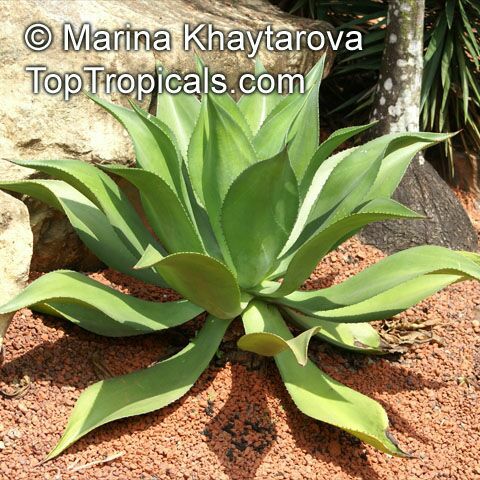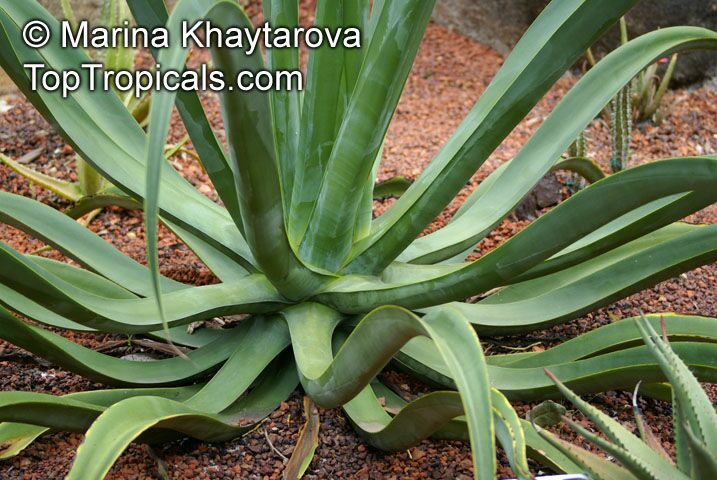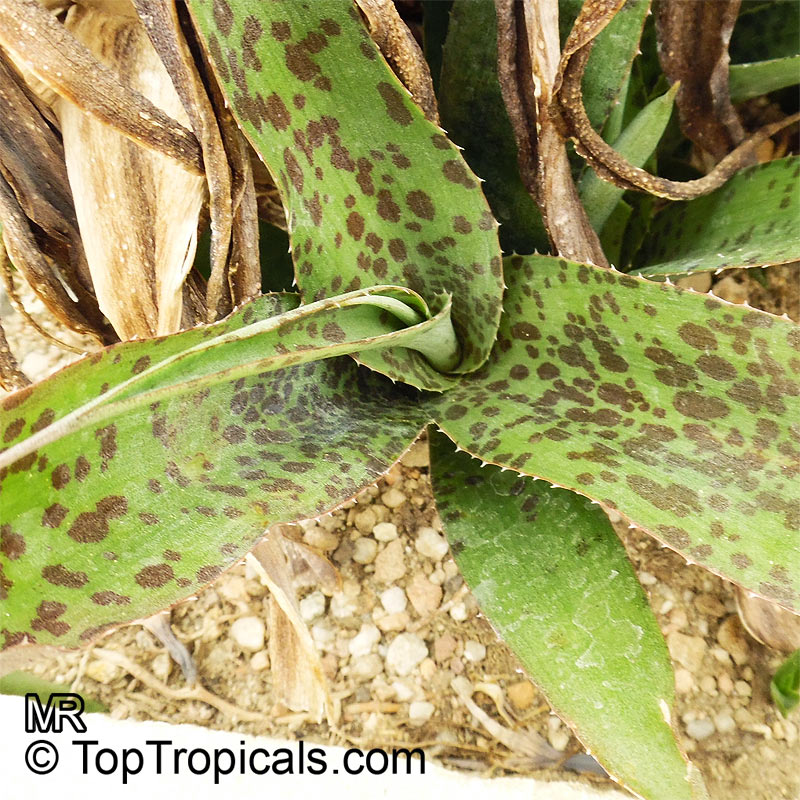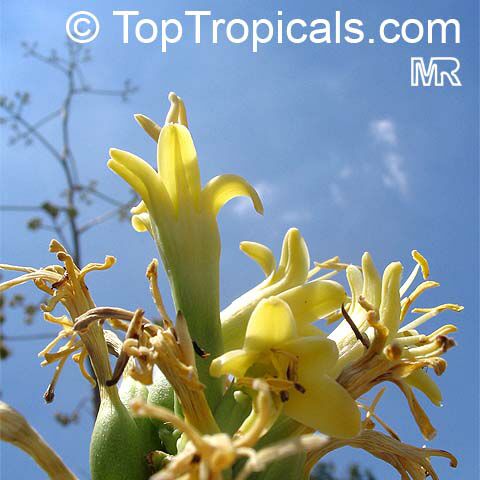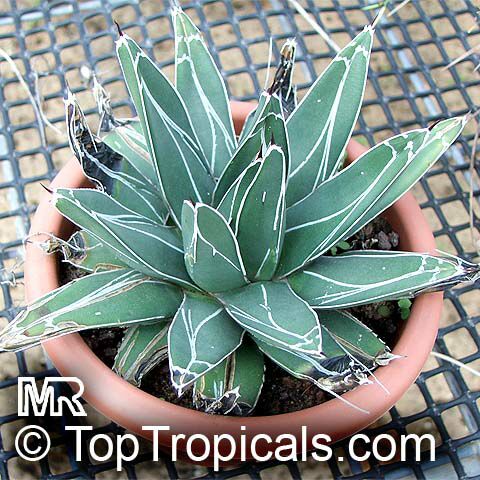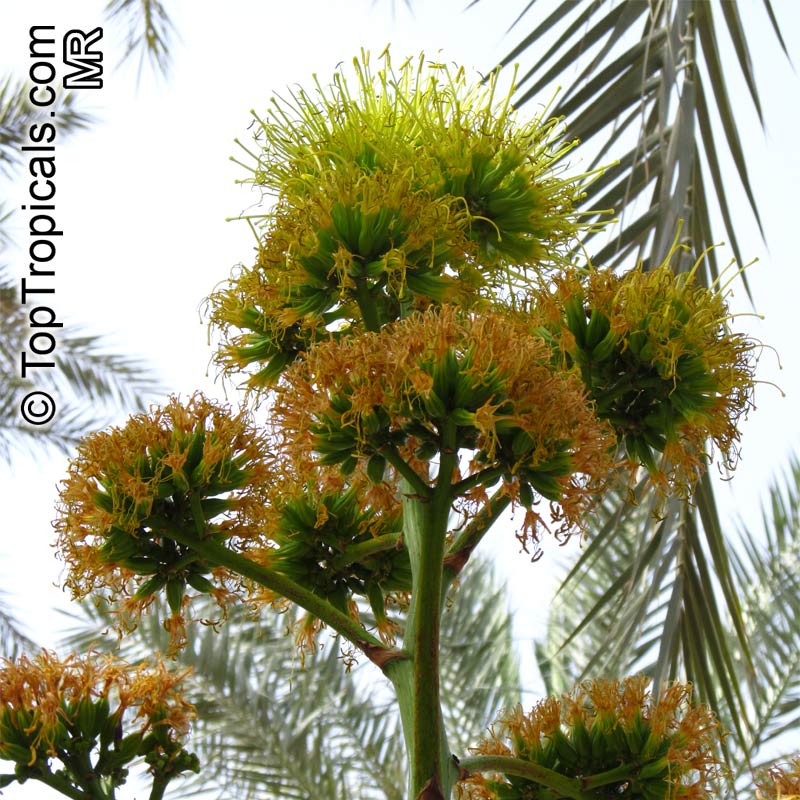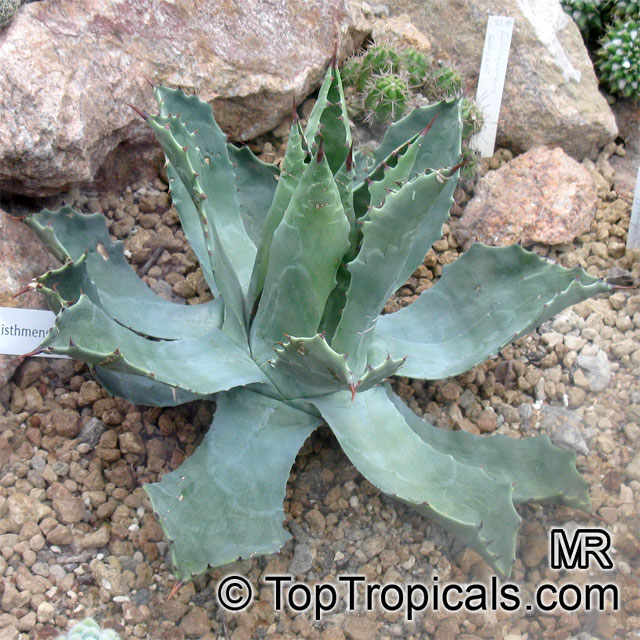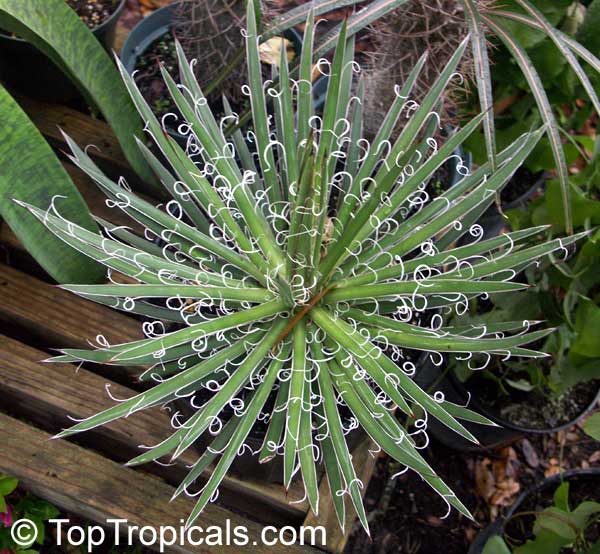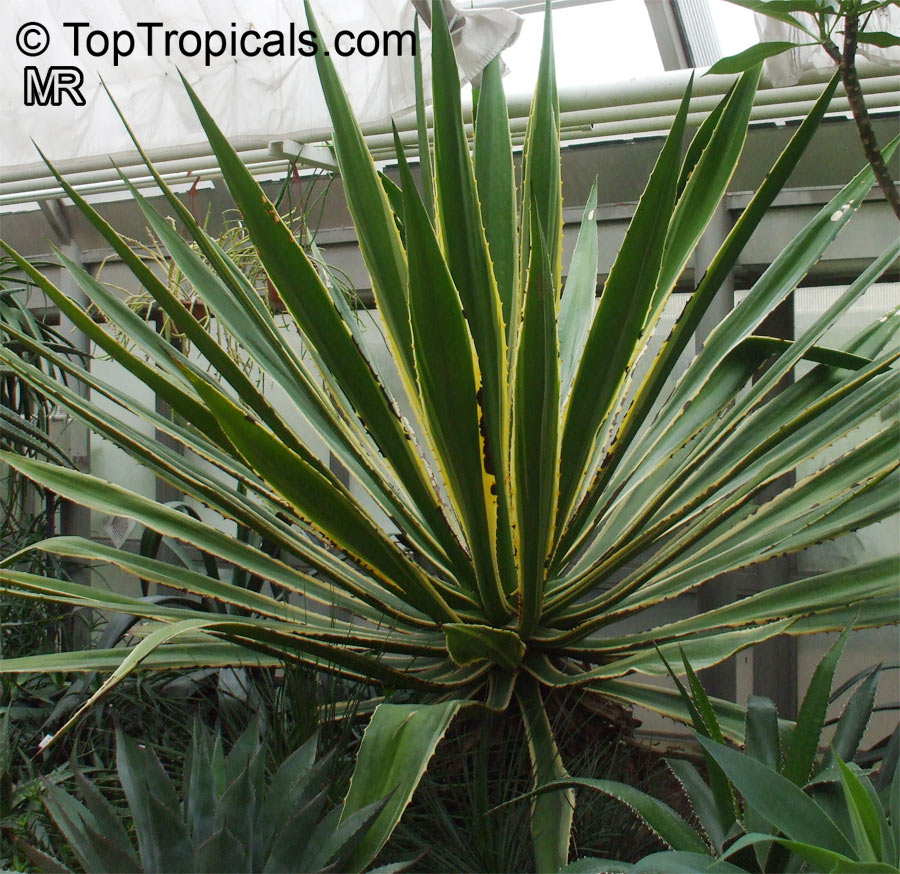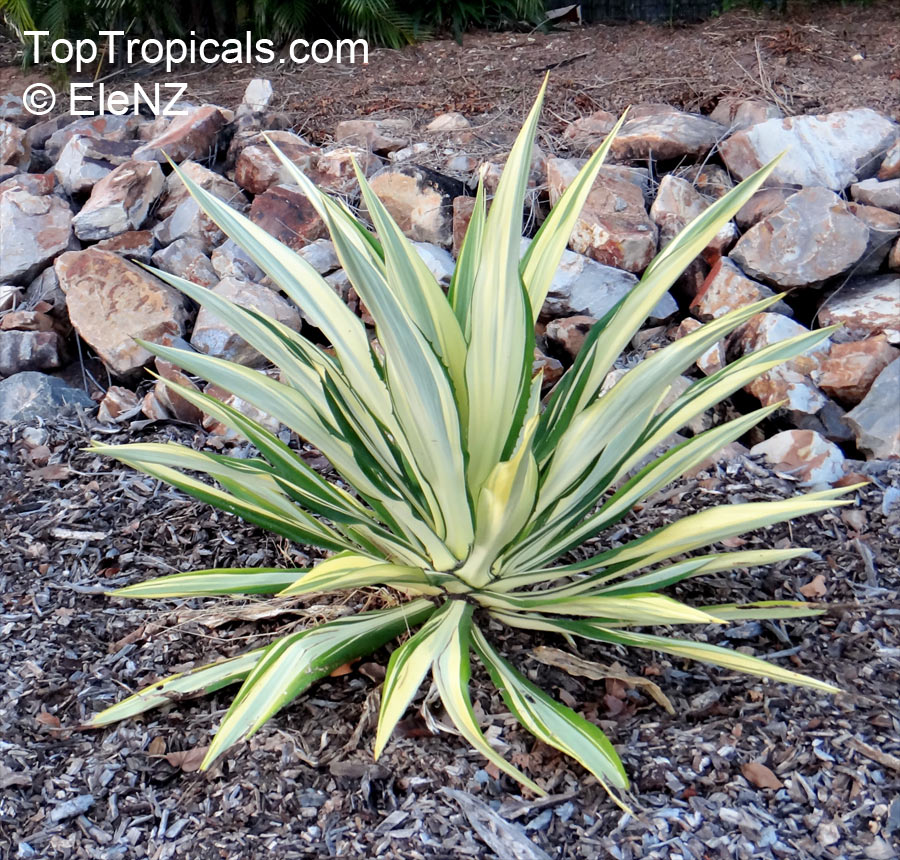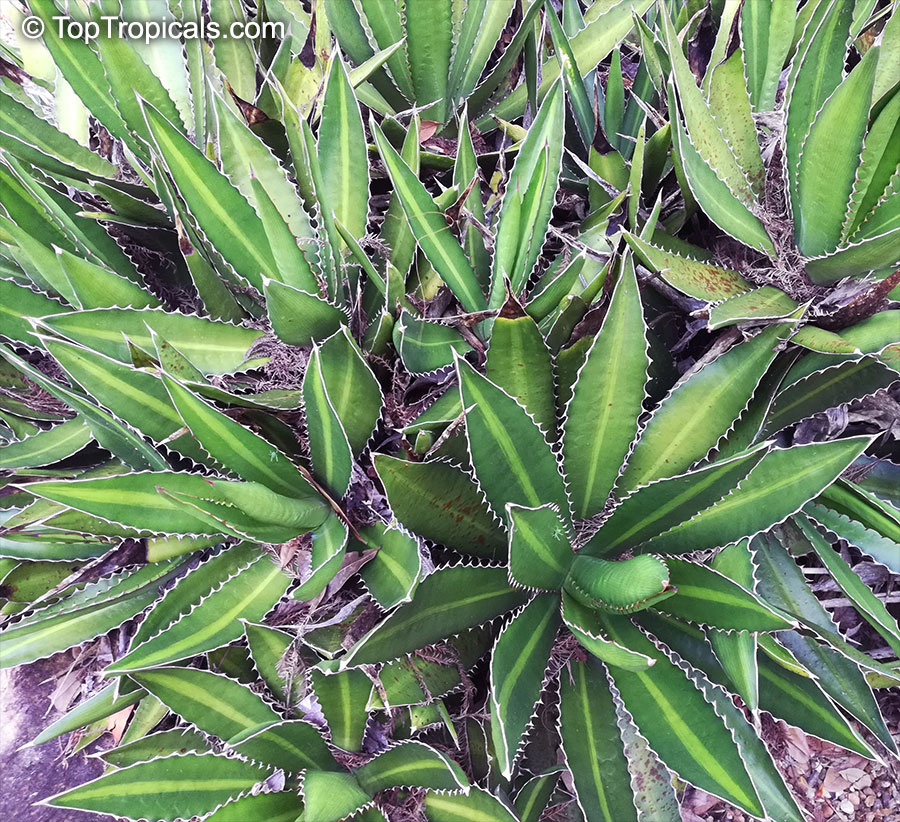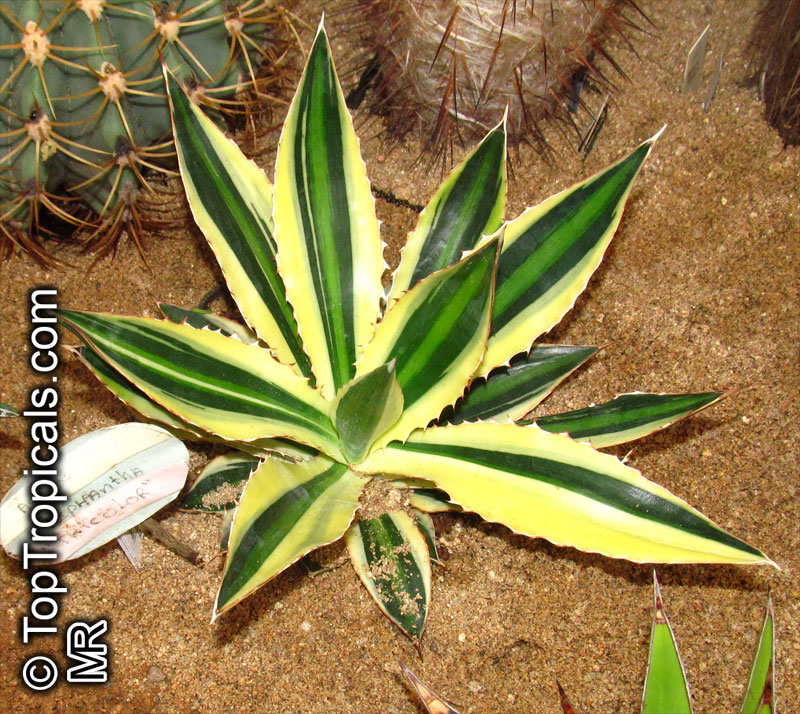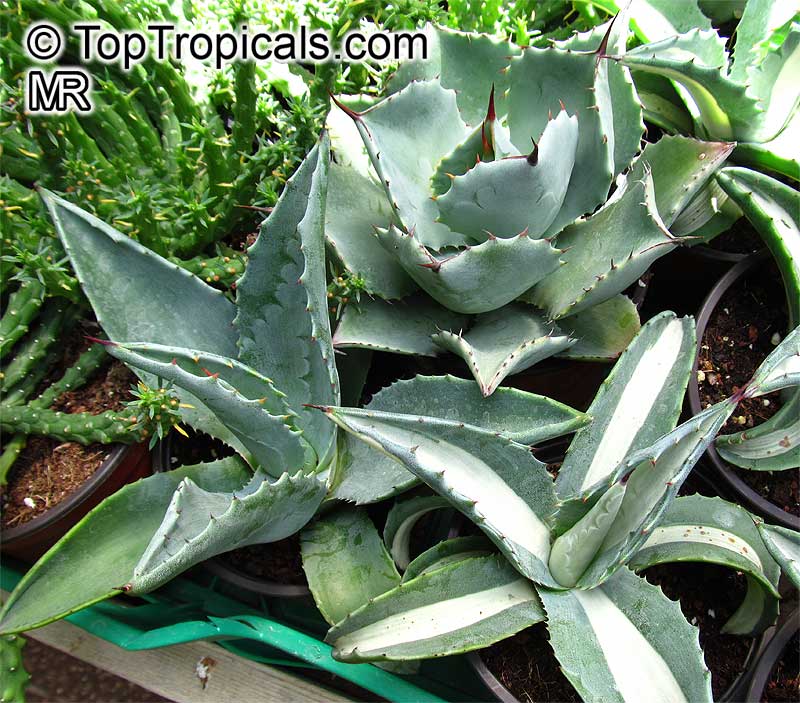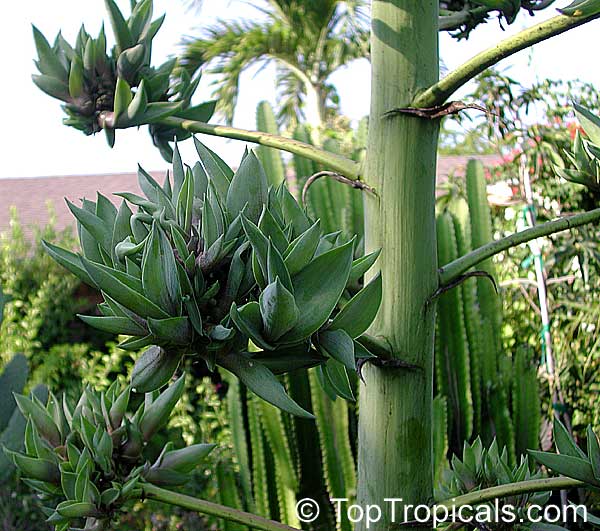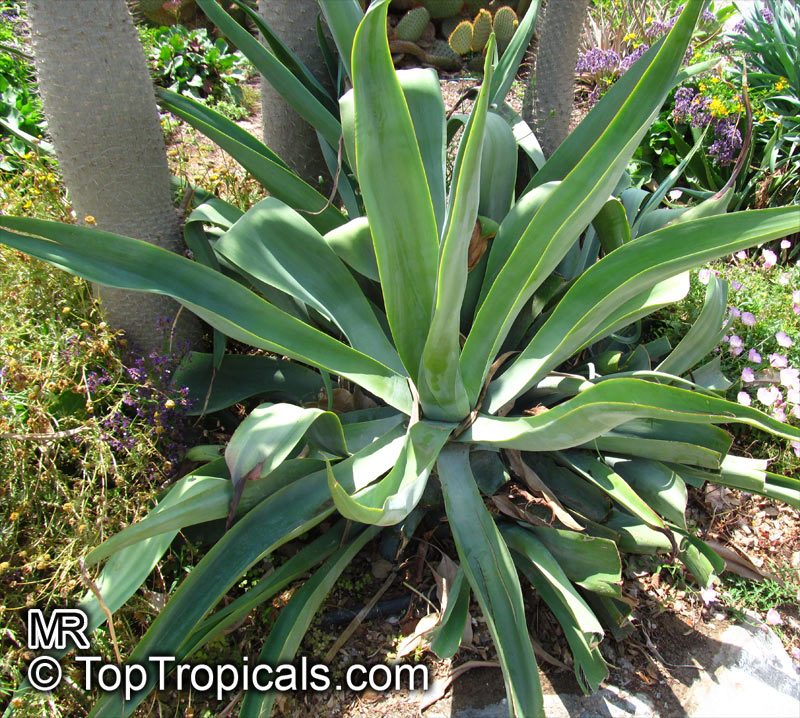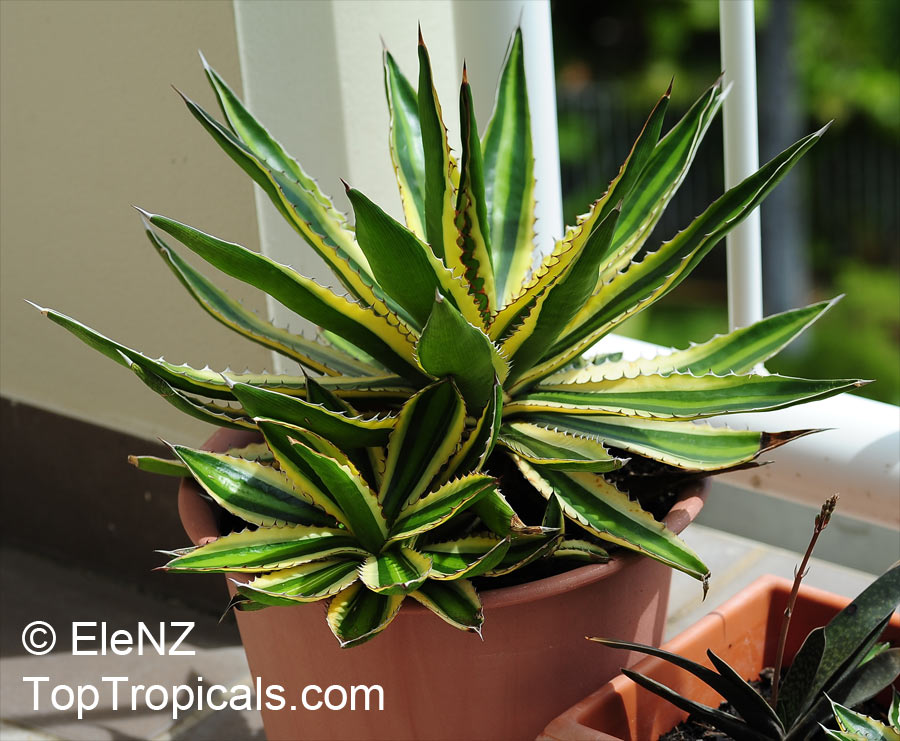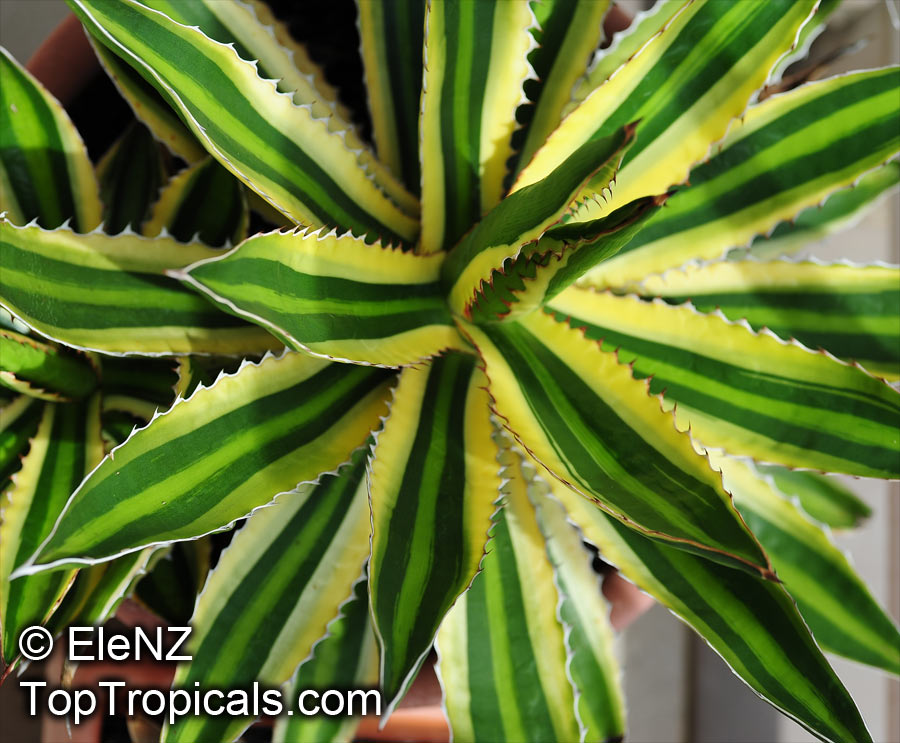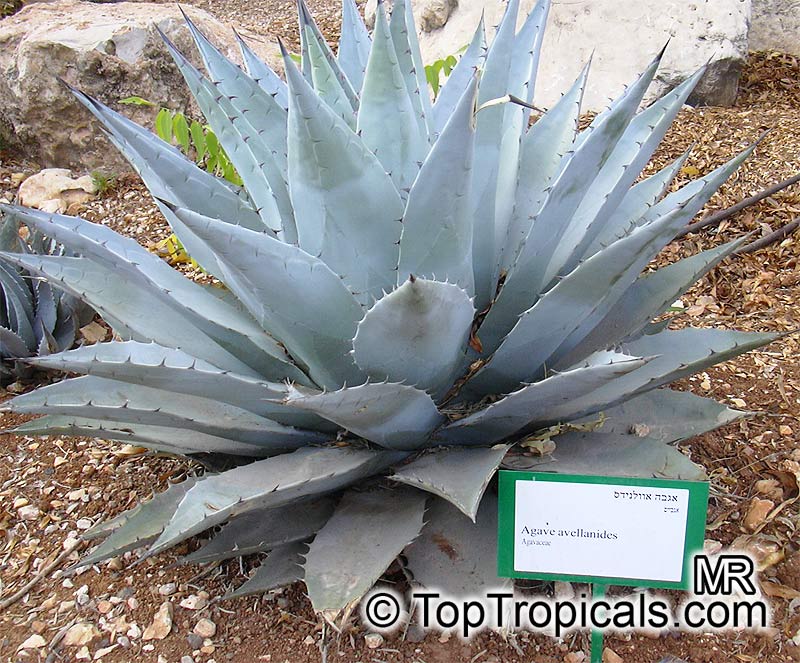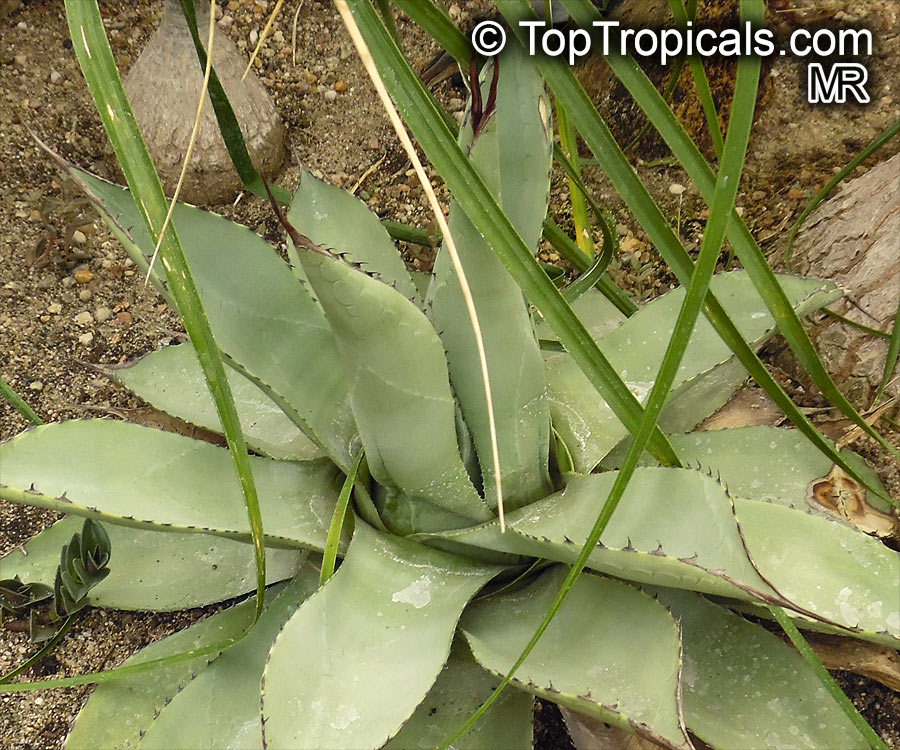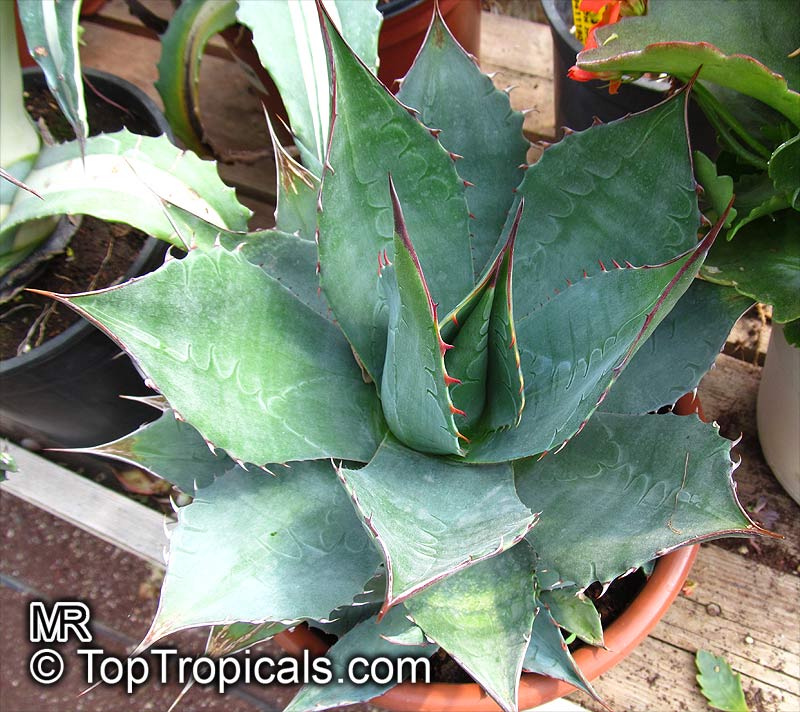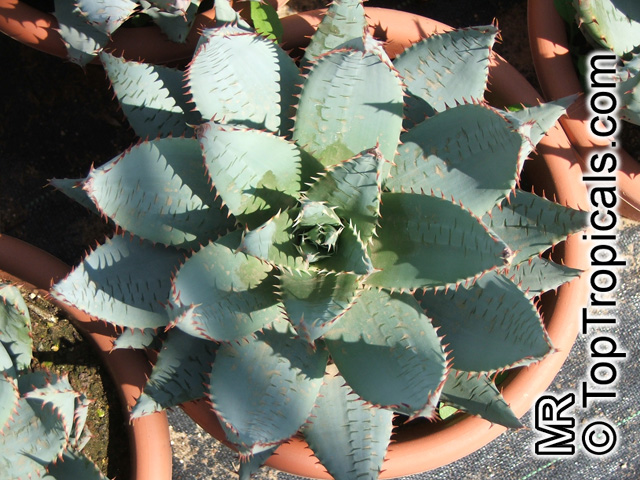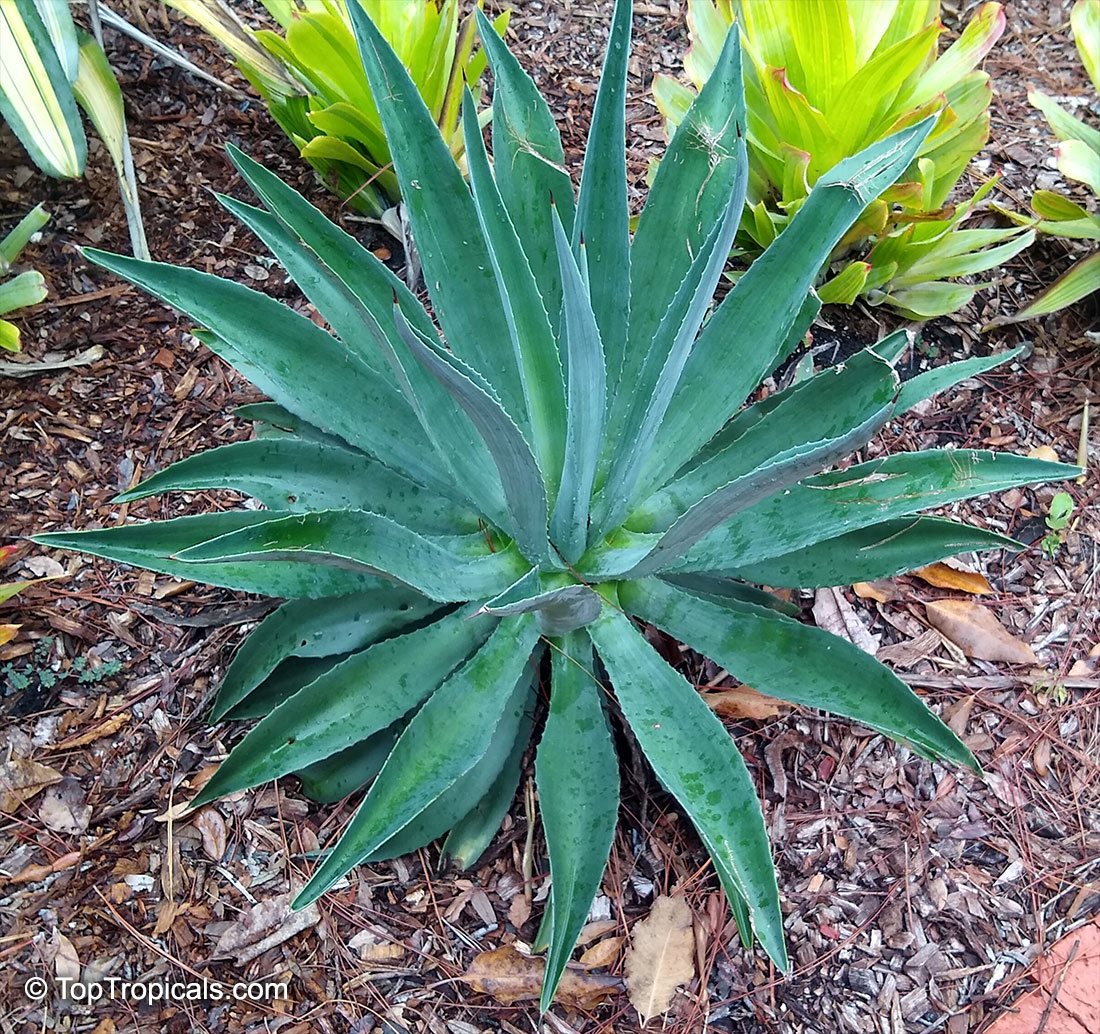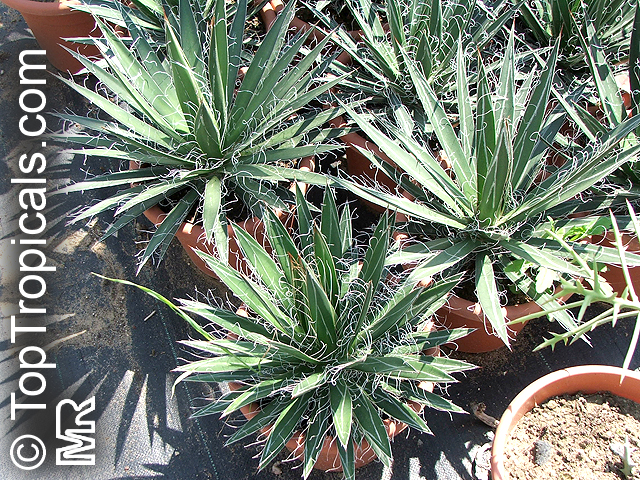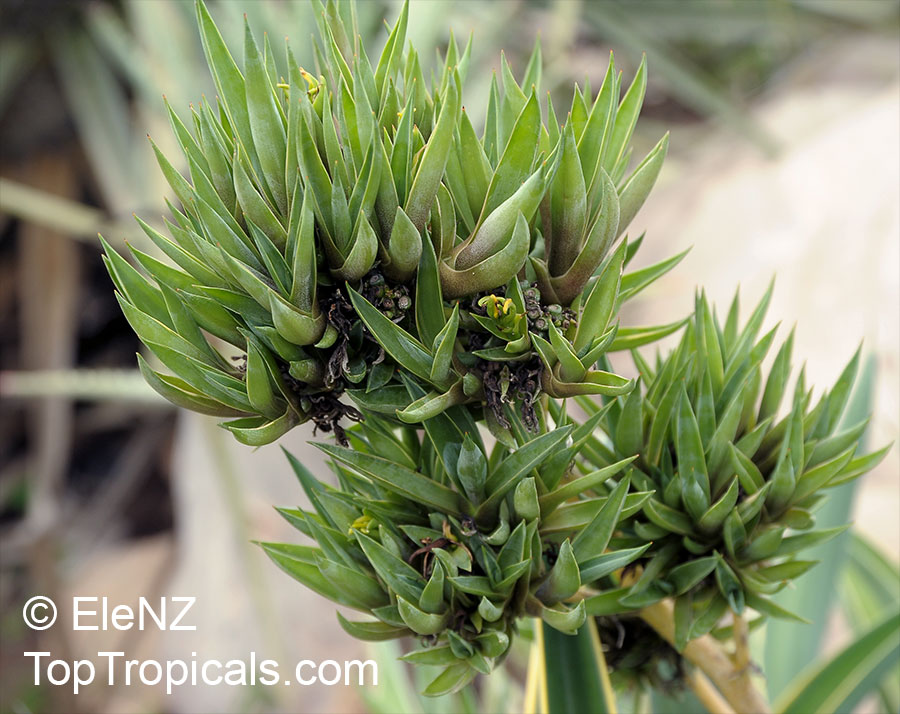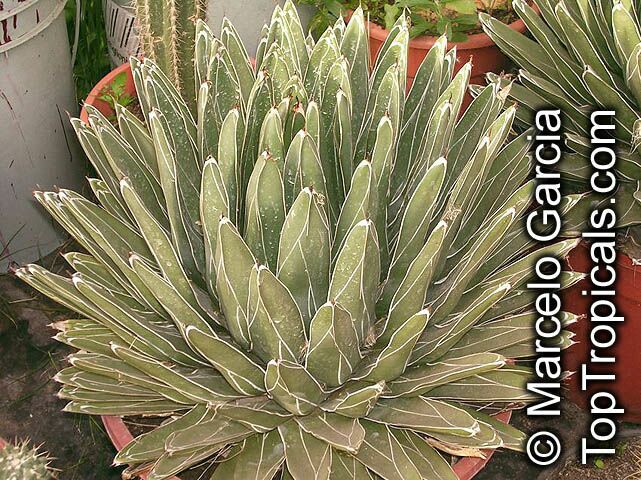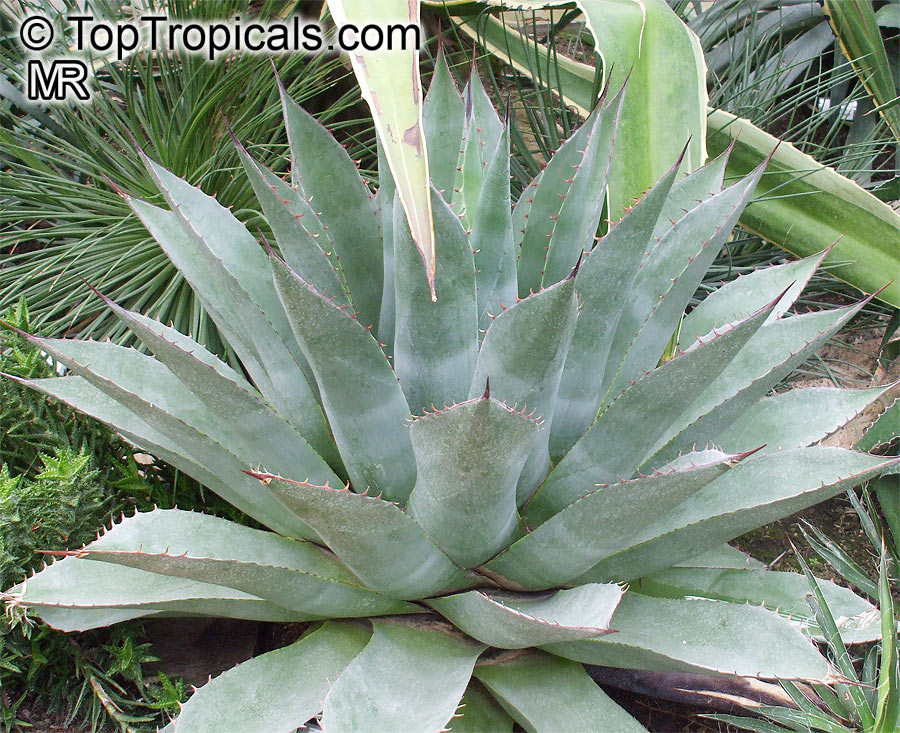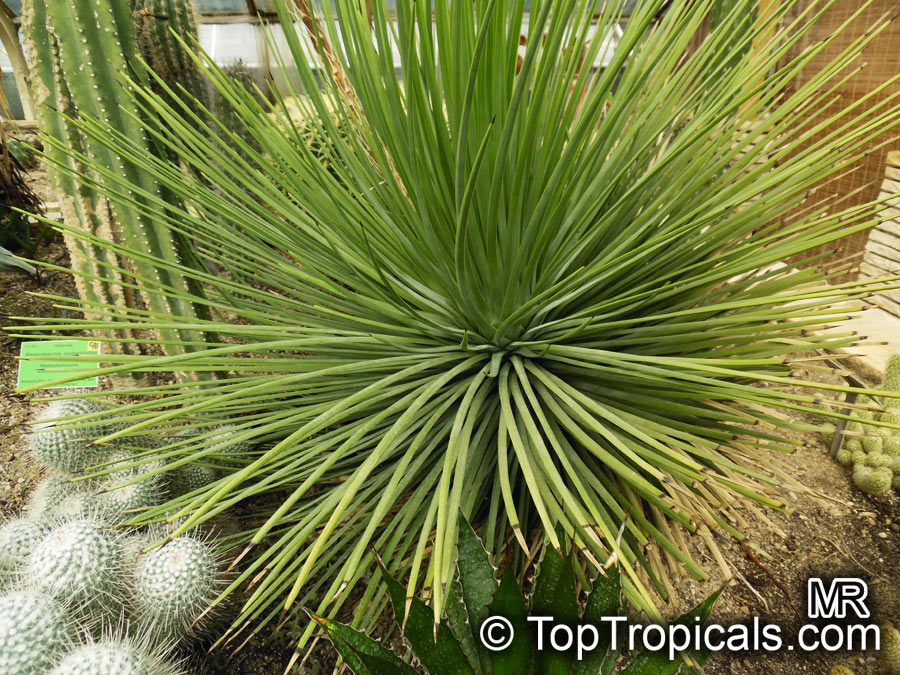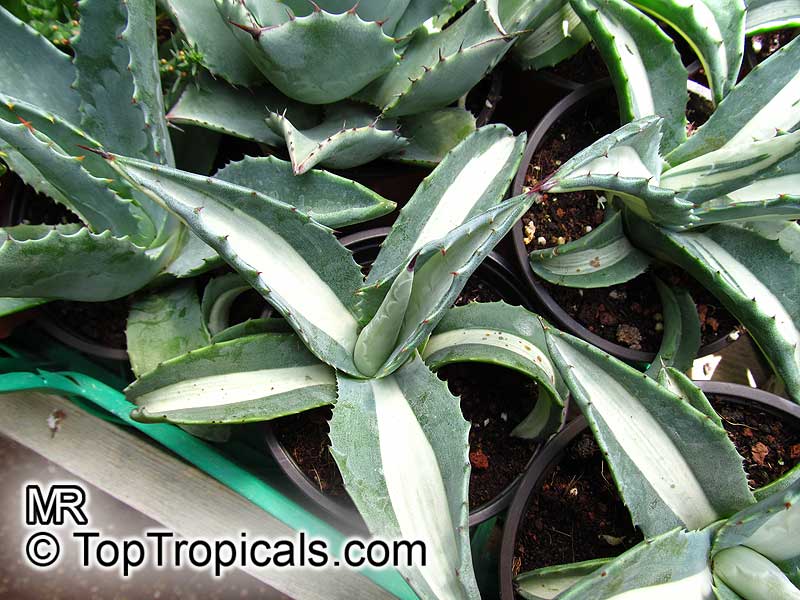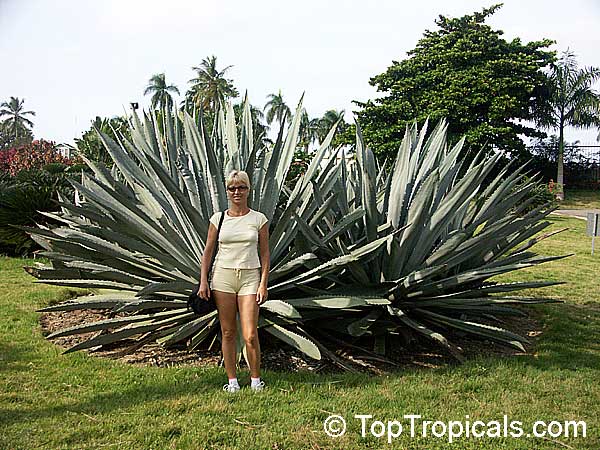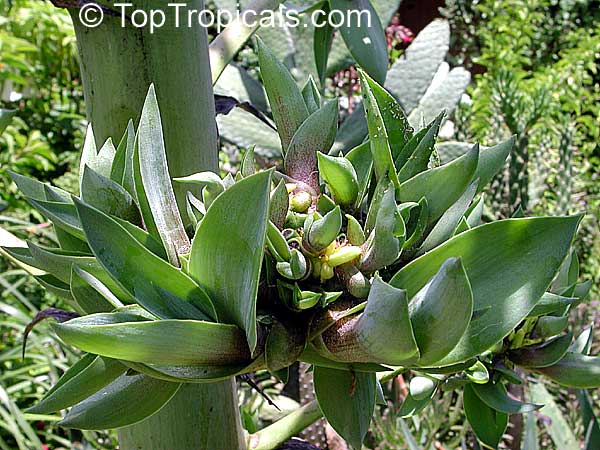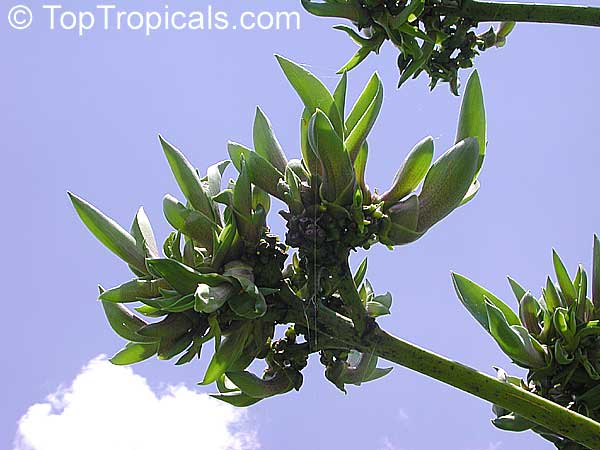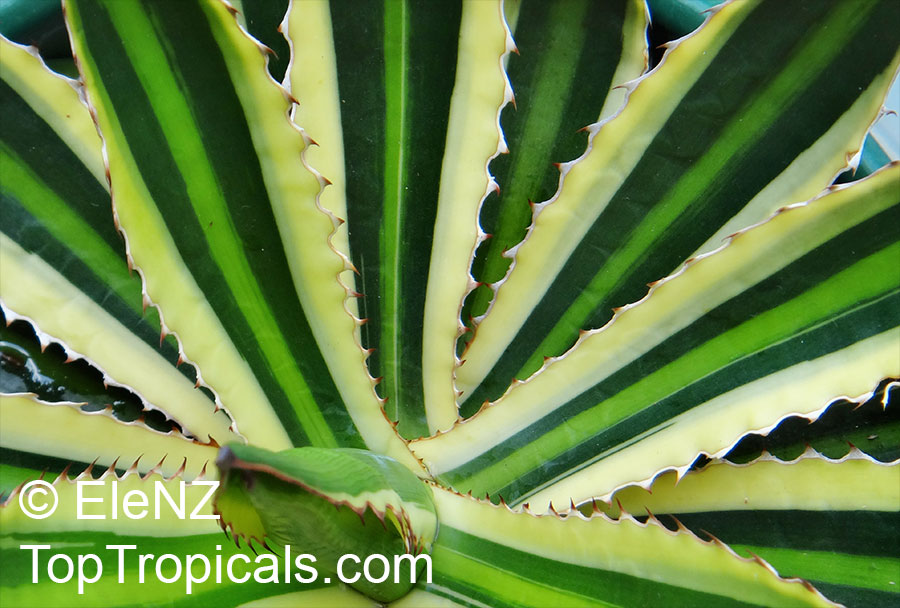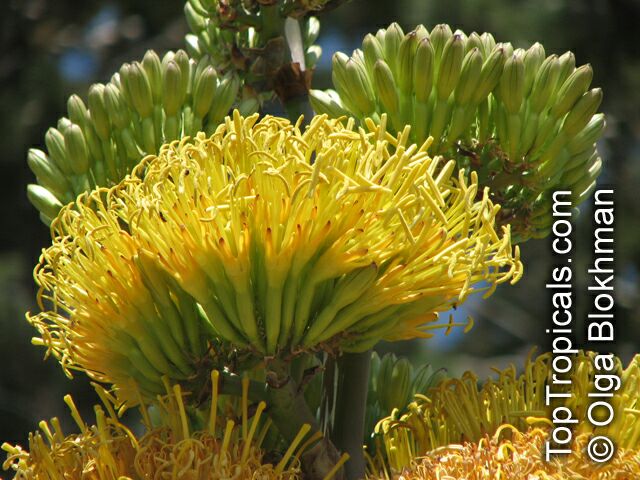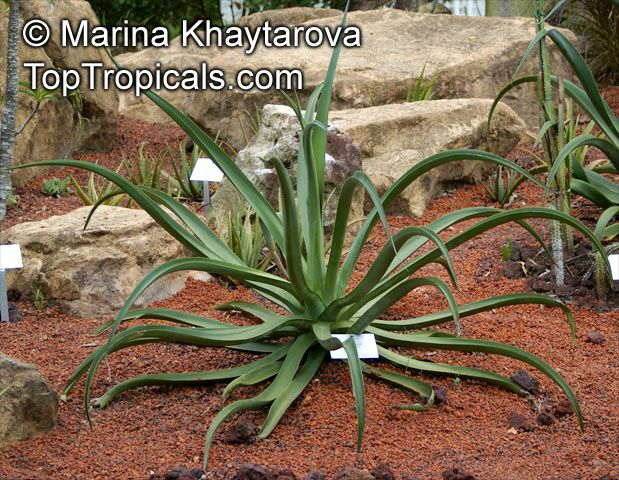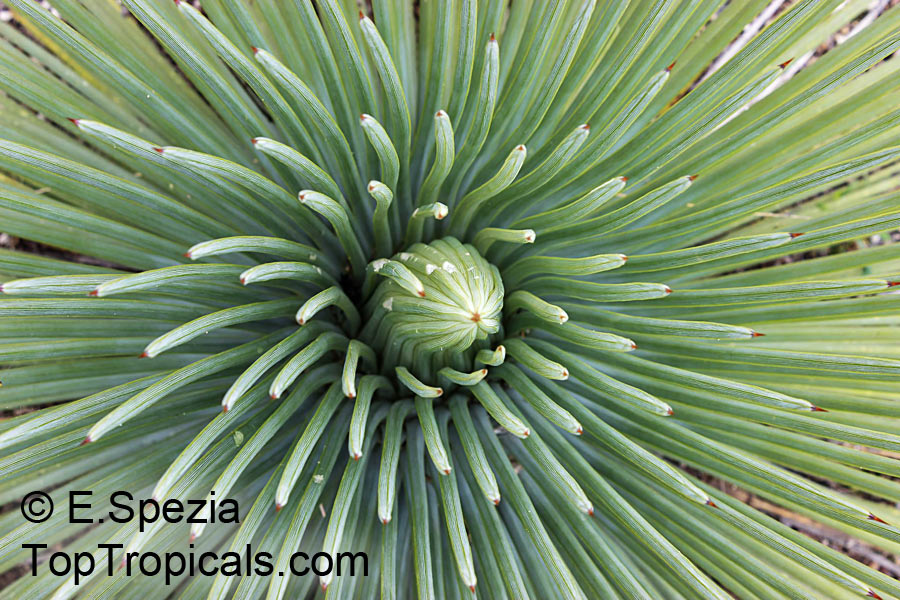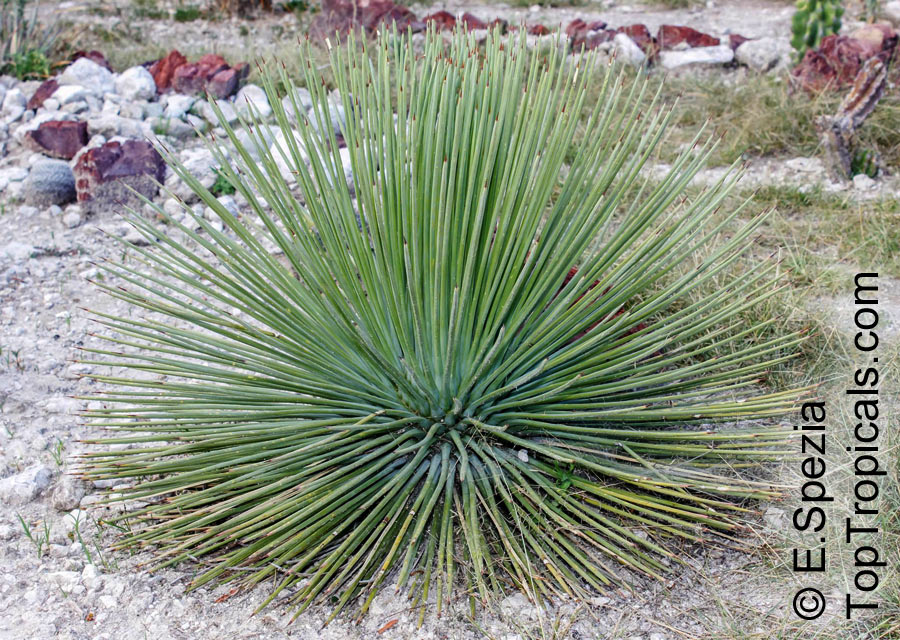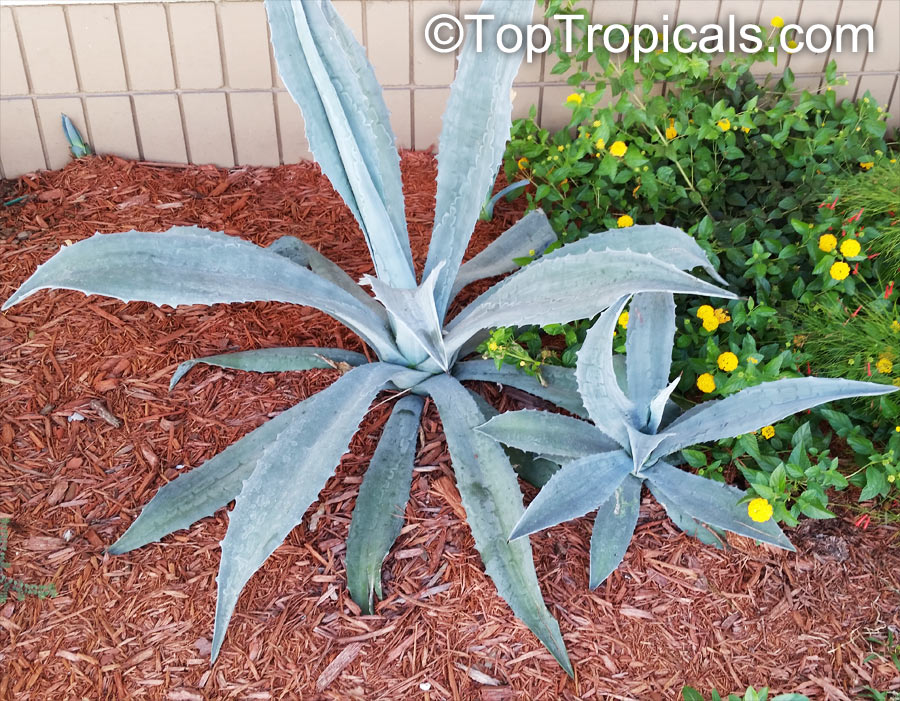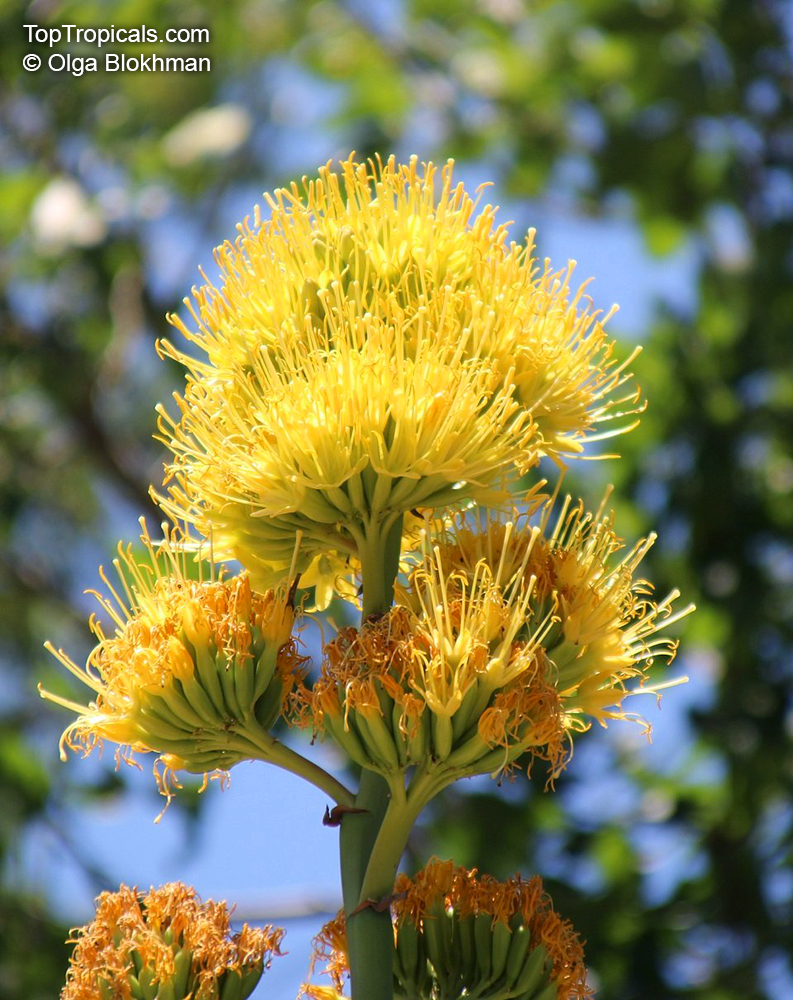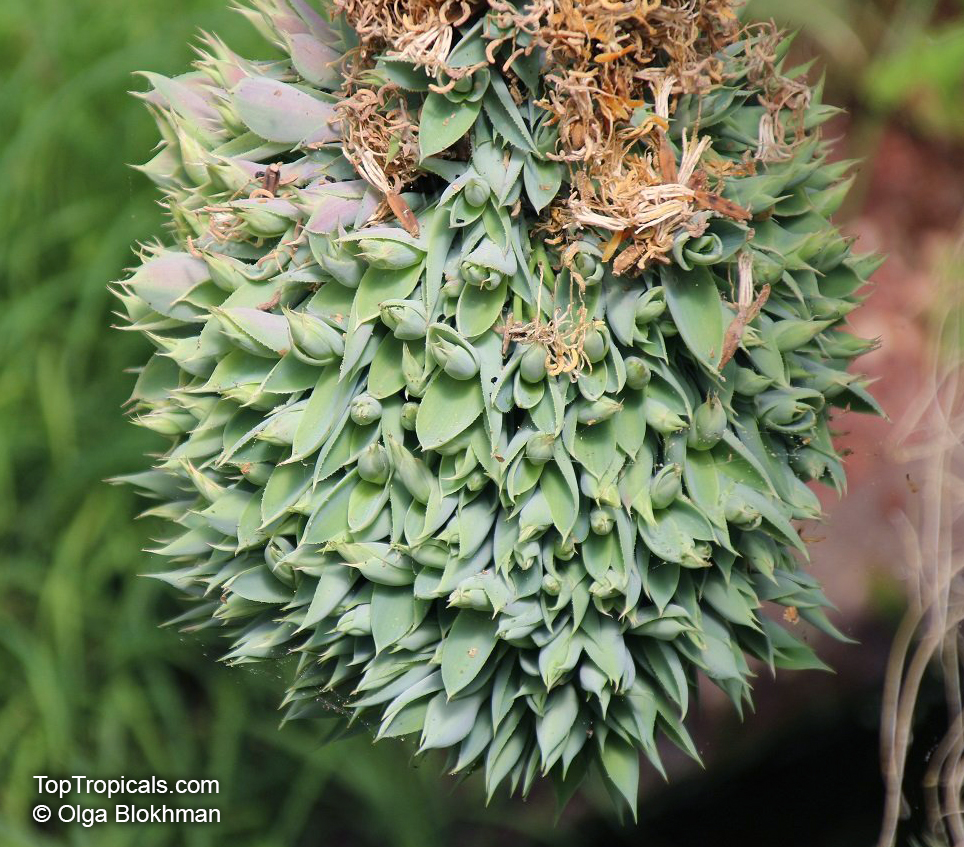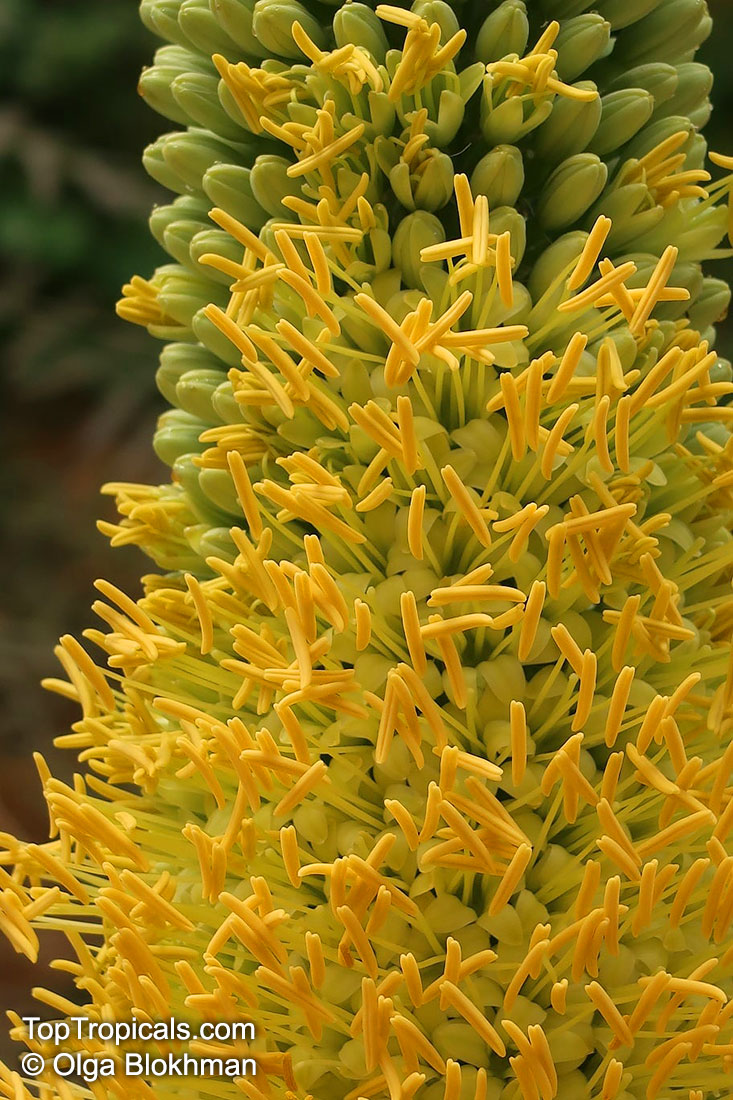Thorny or spiny - Search results
Top Tropicals Plant Encyclopedia
| Number of plants found: 322 | Next | 
|
Go to page: | 1 | 2 | 3 | 4 | 5 | Last |
Botanical names: Acanthocereus tetragonus, Acanthocereus pentagonus
Common names: Night-blooming Cereus, Barbed-wire Cactus, Sword-pear
Family: Cactaceae
Origin: Central America, Caribbean






Acanthocereus tetragonus is a tall, columnar cactus that reaches a height of 2-7 m. Flowers are open from midnight until dawn, attracting hummingbird moths.
Acanthocereus tetragonus 'Fairy Castles' is a dwarf, columnar, branching, slow growing cactus. The Fairy Castles Cactus is the colorful name by which the plant is marketed and refers to the numerous vertical stems of different heights that resemble spires and turrets.
Botanical name: Acanthostachys strobilacea
Common name: Pinecone Bromeliad
Family: Bromeliaceae
Subfamily: Bromelioideae
Origin: Brazil, Paraguay, Argentina






Native to Brazil, Paraguay, and Argentina, Acanthostachys strobilacea (Pinecone Bromeliad) is a small shrub that grows to reach 2-5ft in height. This attractive epiphyte requires a moderate amount of water and semi-shade to grow and thrive, making it the perfect plant for a hanging basket in a sunny or partially-shaded location. Its leaves are a deep green with gray scurf and spines, while its flowers range in color from yellow to orange.
Despite its exotic appearance, Acanthostachys strobilacea is low-maintenance, making it ideal for gardeners who don't have much time to spare on tending to their plants. In addition, it is drought-tolerant and can even thrive in xeriscaped environments.
For those who live in USDA Zone 9-11, Acanthostachys strobilacea is well-suited for growing in containers. The plant can be successfully grown in cold regions as long as its soil is kept moist. In cooler climates, the plant should be moved to a sheltered area during the winter months to ensure the soil does not become too cold and wet, as this could damage the roots. Furthermore, when growing in a pot, it is important to ensure the pot is well-drained and to water the plant regularly and deeply.
Overall, Acanthostachys strobilacea is a beautiful and exotic plant that is low-maintenance and drought-tolerant, making it a great addition to any sunny or partially-shaded garden. With the right care, it can thrive in its environment and bring a unique beauty to any garden.
Botanical name: Acanthus ilicifolius
Common names: Holly-leaved Acanthus, Sea Holly, Holy Mangrove
Family: Acanthaceae
Origin: India, Polynesia












Acanthus ilicifolius, or Holly-leaved Acanthus, is a perennial plant native to India and Polynesia. This plant can reach a large size, typically growing up to 5-10 ft tall. It has a semi-woody and sprawling structure, with thin stems coated in a glossy green hue speckled with white. The leaves are oval-shaped with a pair of spines at each angle.
Holly-leaved Acanthus prefers full sun to semi-shade and can be grown either in a bog or aquatic environment. It requires plenty of moisture as well as regular watering to stay healthy and vibrant. This plant also tolerates flooding and salty conditions near the seaside very well. Therefore, it can be a great addition to any garden in the USDA hardiness zone of 8-11.
The Holly-leaved Acanthus is adorned with clusters of beautiful blue, lavender and purple flowers. It is also an ethnomedical plant, hence its use in traditional medicine. Its stems are thorny or spiny and may require careful handling when handling.
When growing Holly-leaved Acanthus in a pot, it is essential to keep the soil moist and use quality organic potting soil. A location with some protection from the elements is preferred in colder regions as well as a winter mulching of thick straw to prevent frost damage. Additionally, it is important to keep an eye out for any pests and diseases that may occur and act appropriately to keep the plant healthy.
Botanical name: Acanthus sp.
Common names: Acanthus, Bear's Breeches, Mountain Thistle, Alligator Plant
Family: Acanthaceae
Origin: Mediterranean Basin, Asia










Acanthus sp., also known as Acanthus, Bear's Breeches, grows in full sun to partial shade and will thrive in most soils, provided they are well-drained. It is a thinly branched unusual perennial with interesting foliage, basal clusters of oblong to lance-shaped glossy, dark green leaves reaching up to 12 inches long. The leaves have silver marks and wavy margins. It produces showy pink flowers in the summer to fall.
The plant needs regular watering, but should not be over watered, as this can lead to root rot. It is a deciduous plant so it will lose its leaves during the winter months. It is a somewhat spiny, but attractive plant. For colder regions, it is recommended to grow Acanthus in a pot and move them indoors once it gets too cold to leave the plant outside. In these cases the plant should be placed in a south-facing window and watered regularly.
See picture of alligator skin.
Recommended Fertilizer: SUNSHINE Megaflor - Bloom Nutrition Booster
Last one
Botanical name: Aegle marmelos
Common names: Bael, Bengal Quince, Indian Bael, Wood Apple, Matoom
Family: Rutaceae
Origin: India









This plant is a medium sized tree that grows up to 40ft.This plant is known to posses some medicinal properties. All parts of this tree including, the roots, leaves, trunk, fruits, and seeds, are used for curing one human ailment, or another. The fruits are usually eaten by people.They taste like marmalade, and smell like roses. They are also used in the preparation of many medicines in villages. These protein-rich fruits are also used in making some very good drinks. They can also make a wonderful jam. The plant easily withstands long periods of drought, which are needed for better fruit yields. It grows in most soil and climate types, and requires little care when established.
Very rare plant. We have only few plants (see picture) for local pick up.
Bael, Bengal quince, Indian bael, Wood apple, Matoom. The offering of bael leaves is a compulsory ritual of the worship of Lord Shiva in the hills. This importance seems largely due to its medicinal properties. All parts of this tree, root, leaf, trunk, fruit and seed, are used for curing one human ailment or another. The fruits taste like marmalade, and smell like roses.
See picture of the actual plants for sale.
Recommended Fertilizer: SUNSHINE C-Cibus - Crop Nutrition Booster
SUNSHINE-Honey - sugar booster
This item can not be shipped. Pick up only. We can provide local delivery around Ft. Myers or Sebring, Florida. Contact us for an estimate. Non-pickup orders are subject to restocking fees.
Botanical name: Agave americana
Common name: Century plant
Family: Asparagaceae (Formerly:Agavaceae / Amaryllidaceae)
Subfamily: Agavoideae
Origin: Mexican highlands






Agave americana, commonly known as the century plant, is a striking succulent renowned for its dramatic, spiky leaves and towering flower stalk that can reach heights of up to 30 feet. Native to Mexico, this hardy plant is celebrated for its adaptability to arid environments and its ability to produce a spectacular bloom just once in its lifetime, typically after several decades. Its versatility extends beyond ornamental use, as it has been traditionally utilized for its fibers, sweet sap, and medicinal properties.
The genus of more than 200 species of rosette-forming, mostly monocarpic, or sometimes perennial succulents from the desert and mountainous regions of the Americas. The most popular Agave is the Century Plant, so-called because of the mistaken belief that it flowers only once every 100 years. There are two colorful varietis - Agava americana marginata (green leaves edged with yellow) and Agava americana mediopicta (cream leaves edged with green). These plants produce leaves 3 or 4 feet long, and their size makes them unsuitable for an ordinary room. In winter watering this plant can be done once every 1-2 months, there is no need to mist the leaves.
Recommended Fertilizer: SUNSHINE Robusta - Rapid Growth Booster
This item can not be shipped. Pick up only. We can provide local delivery around Ft. Myers or Sebring, Florida. Contact us for an estimate. Non-pickup orders are subject to restocking fees.
Last one
Botanical name: Agave angustifolia
Common name: Agave Maguey Lechugilla
Cultivar: 'Marginata'
Family: Asparagaceae (Formerly:Agavaceae / Amaryllidaceae)
Subfamily: Agavoideae
Origin: Mexico





Agave angustifolia Marginata, more commonly known as the Agave Maguey Lechugilla, is a small shrub native to Mexico. This spiny or thorny succulent is popular for its ornamental foliage and grows between 2-5 feet in full sun, and in dry conditions. This is a hardy succulent, suitable for use in xeriscaping and is grown in USDA zone 9-11.
Agave Maguey Lechugilla, like most succulents, will produce best results in well-draining soil. Watering should be done sparingly and with care, as too much water can lead to the plant's death. When water is necessary, it should be done deep and slow. During the winter months, when growth is at a minimum, water should be reduced even more.
In cold regions, where freezing temperatures are expected, the best way to grow Agave Maguey Lechugilla is in a pot. Containers should also ensure adequate drainage, and during the hot summer months should be moved to a sunny spot outdoors and brought inside during winter.
Overall, the Agave Maguey Lechugilla is an attractive and hardy plant. When growing conditions are provided and cared for, the plant will grow to a maximum of 5 feet. Foliage is normally very ornamental, and is sure to be a winning addition to any xeriscape or cacti garden.
Botanical name: Agave attenuata
Common names: Fox Tail Agave, Swan's Neck Agave
Family: Asparagaceae (Formerly:Agavaceae / Amaryllidaceae)
Subfamily: Agavoideae
Origin: Mexico






Native to the tropical climates of Mexico, Agave attenuata (Fox Tail Agave) is a small shrub that grows between 2 - 5 feet. It prefers full sun to light shade, and requires moderate wateringthough it doesn't tolerate overly wet conditions. It prefers to grow in dry, well-draining soils. The plant is renowned for its light grey-green wavy-edged leaves with a hint of ivory powder. Fox Tail Agave's short, flowering stems emerge from the heart of the plant in summer or fall and produce yellow or orange clusters of fragrant flowers. The spiny or thorny leaves help to deter browsing animals and offer a unique addition to gardens and landscapes.
Agave attenuata is an excellent home garden choice because it is low-maintenance, drought tolerant and can survive in a range of conditions. In addition, it can be grown in USDA Hardiness Zones 9-11 with minimal care. However, if you are located in a colder region and plan to grow this plant in a pot, you should move it indoors during the winter months to protect it from the frost. As long as you ensure your Fox Tail Agave has plenty of sun and water it should thrive in your garden or home.
Botanical name: Agave neglecta
Common name: Small agave
Family: Asparagaceae (Formerly:Agavaceae / Amaryllidaceae)
Origin: Florida





Agave neglecta has been regarded as endemic to Florida, but is now treated as the same species as the Mexican Agave weberi and only naturalized in Florida through human agency.
Botanical name: Agave sp.
Common name: Agave
Family: Asparagaceae (Formerly:Agavaceae / Amaryllidaceae)
Subfamily: Agavoideae
Origin: Mexico
Hardiness: 20°F







Agaves are rosette plants that live for many several years before flowering. Each rosette will flower only once, then die. The English common name, Century Plant, is based on the mistaken belief that the plants grow for 100 years before blooming. In fact, some of the smaller species flower when only 3 to 4 years old. The larger species may live for 40 to 50 years before flowering. They may be planted outdoors in mild climates, especially those that are desert and semi-desert; otherwise, they may be grown in a greenhouse and when small as houseplants. In regions with harsh winters, Agaves may be planted outdoors in the summer and brought in during the winter. The sizes of the Agaves vary from 6 inches to 15 feet wide between the species.
| Next |  |
Use link to repeat this search:
https://toptropicals.com/cgi-bin/garden_catalog/cat.cgi?search_op=and&keyword_op=and&language=e&number=10&no_change_lang=1
&v1=trn&user=tt&sale=1&first=0

